São Miguel is one of those rare islands where you can wake up to birdsong, walk past crater lakes on your way to a coworking session, and soak in jungle-fringed hot springs by dusk. It’s not just a place to visit—it’s a place to root for a while. For digital nomads looking to slow down without stopping, this island is the perfect place to land.
In this complete guide, we’ll share everything you need to know about living, working, and exploring on São Miguel—plus link you to our deeper guides on trails, food, hot springs, and our favorite coliving.
Why São Miguel?
São Miguel, the largest island in the Azores, has a way of recalibrating time. Life here moves slower. The air smells like eucalyptus, salt, and something green you can’t quite name. It’s subtropical and volcanic, with a landscape that feels more like Hawaii than mainland Europe—banana trees, ginger lilies, and steaming fumaroles all within a short drive of one another.
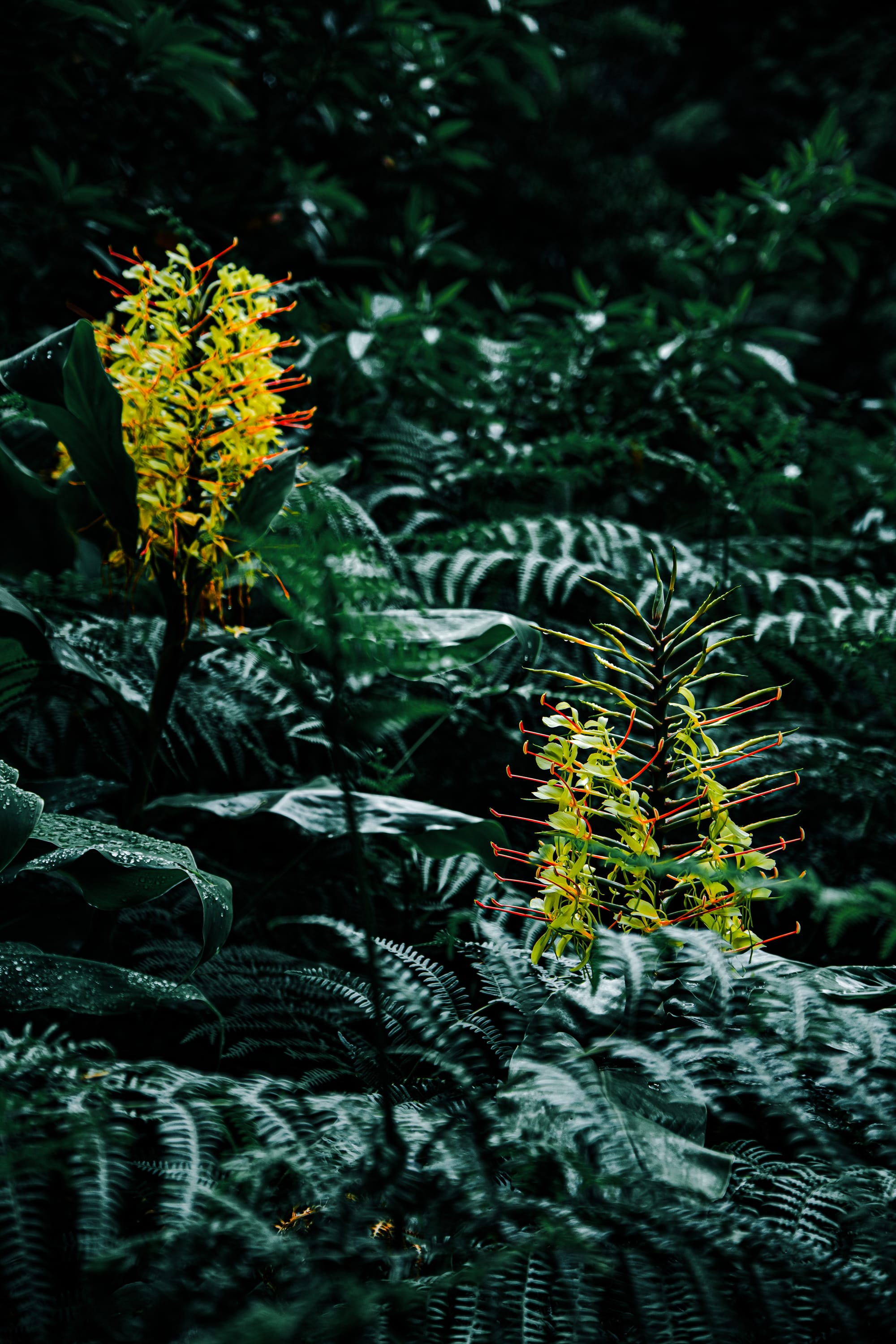
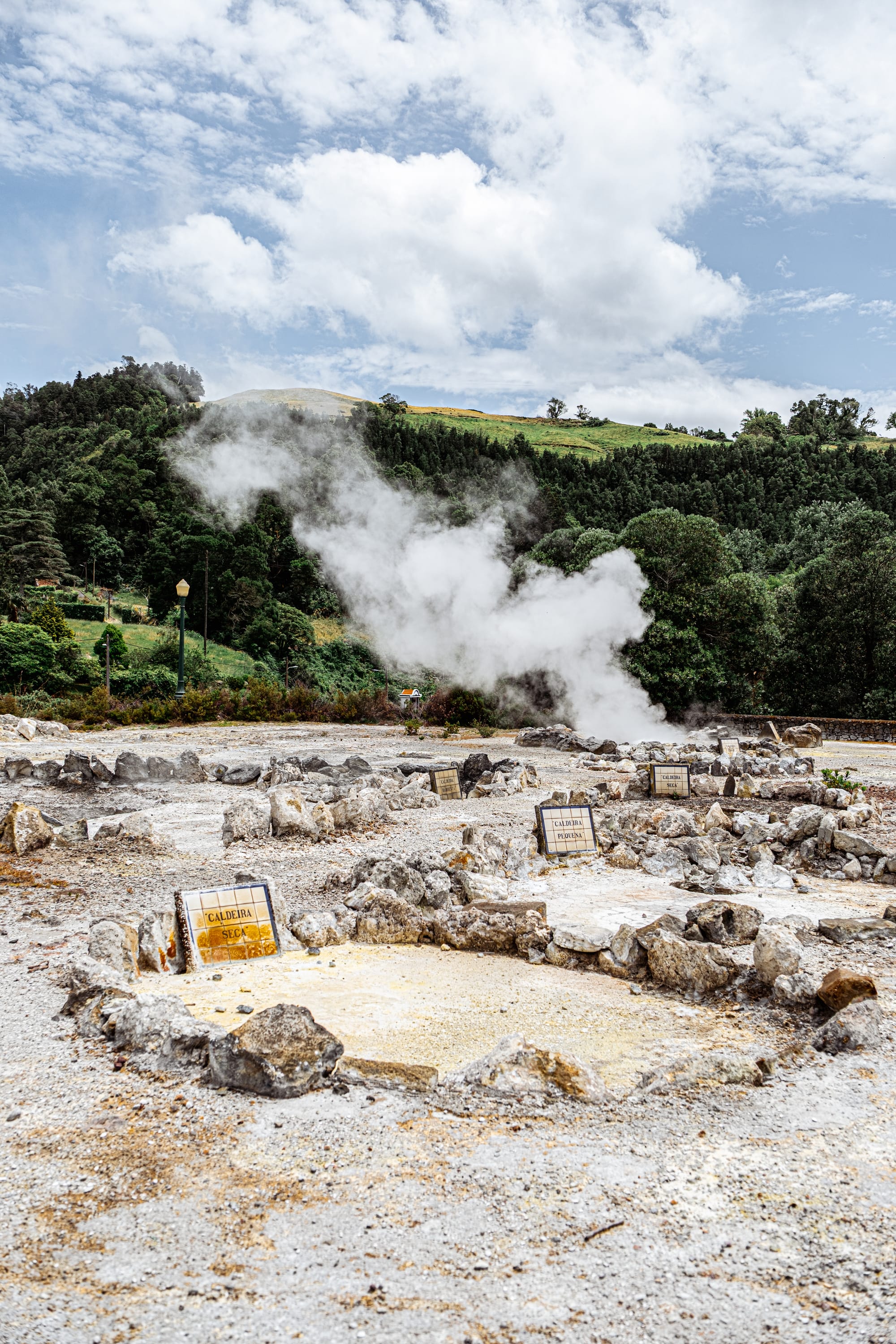
Despite being part of Portugal, São Miguel feels worlds away. It’s lush, remote, and still relatively under the radar—especially compared to places like Madeira or mainland coastal hubs. That means no long lines at trailheads, no traffic jams on scenic roads, and no fight for space in the hot springs.
There are only a few coliving spaces, a small but grounded digital nomad community, and an endless list of natural features to explore: crater lakes, black sand beaches, rainforest hikes, natural thermal pools, and ocean lookouts where you’ll often be completely alone. It’s the kind of island where your daily routine might involve soaking in a hot spring before your 10AM call, or walking down to a roadside fruit stand for passionfruit and bananas.
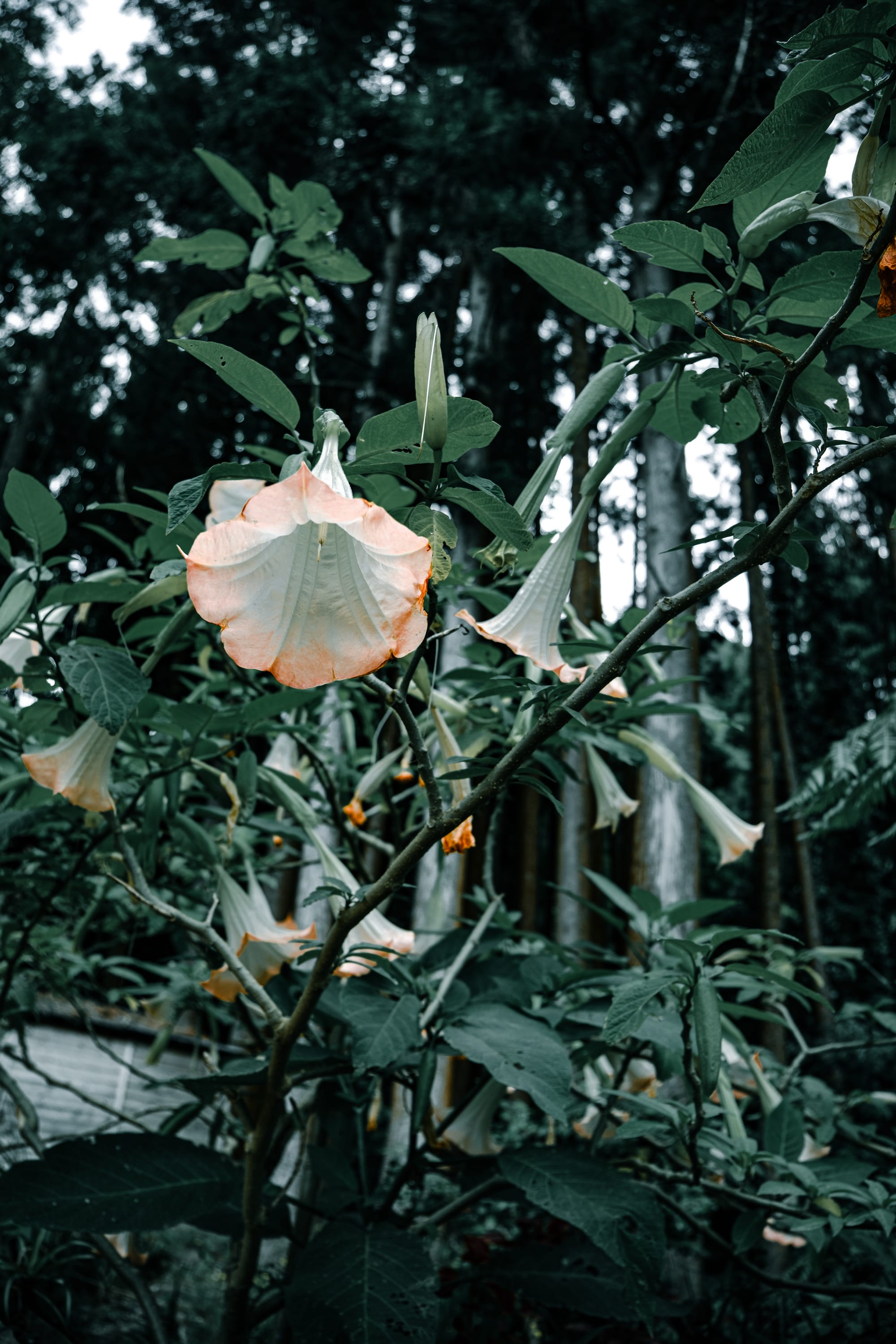
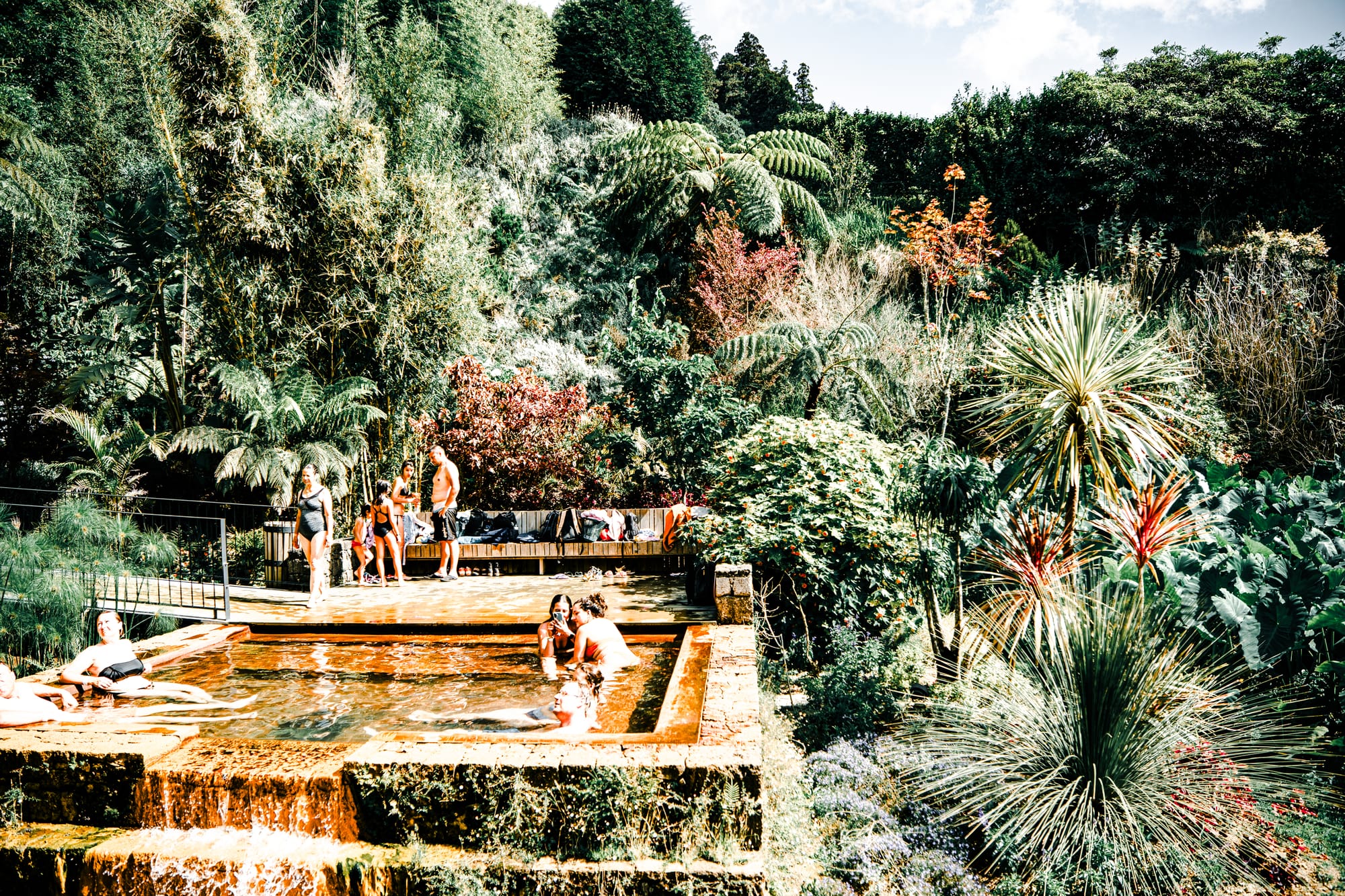
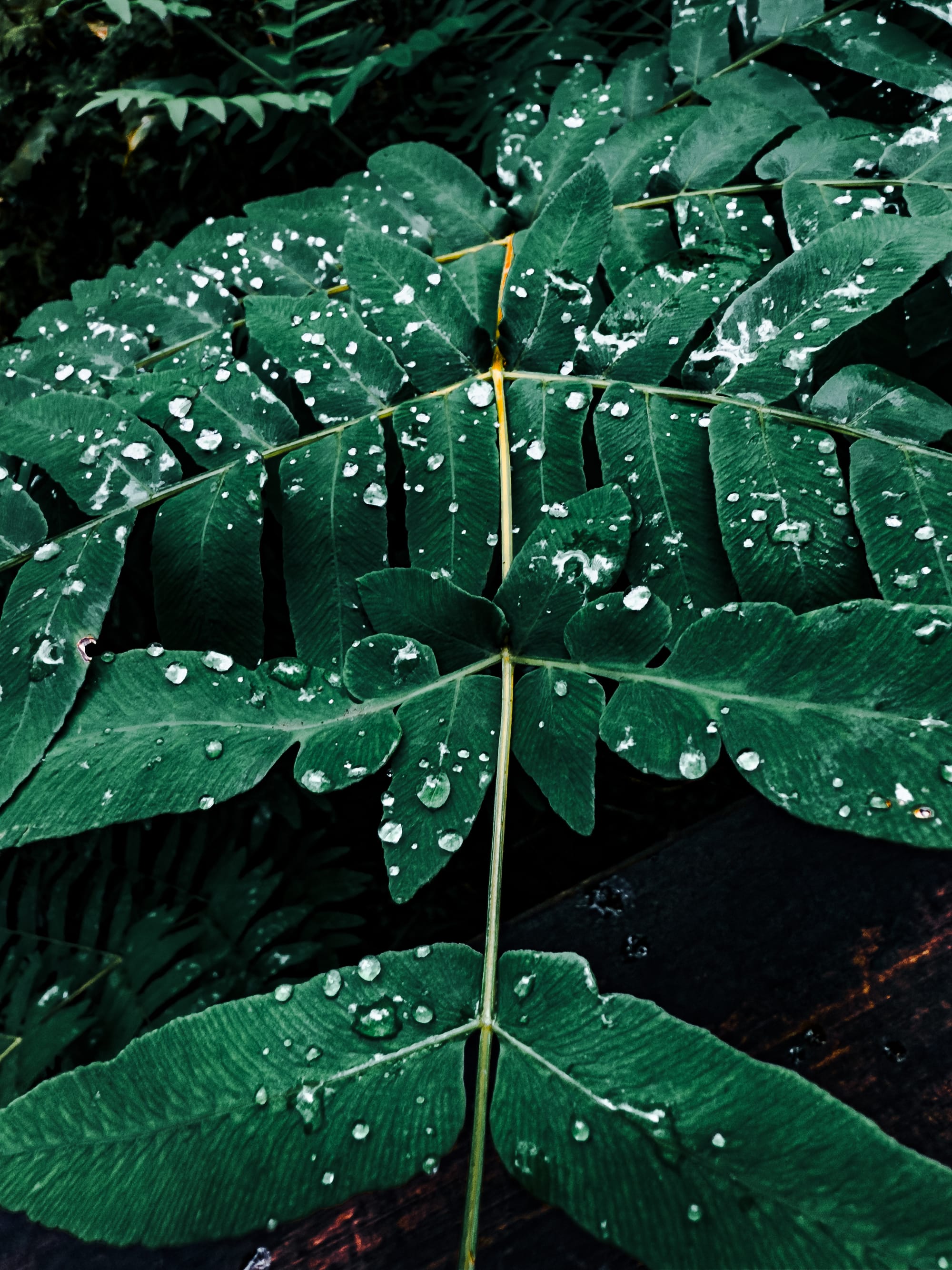
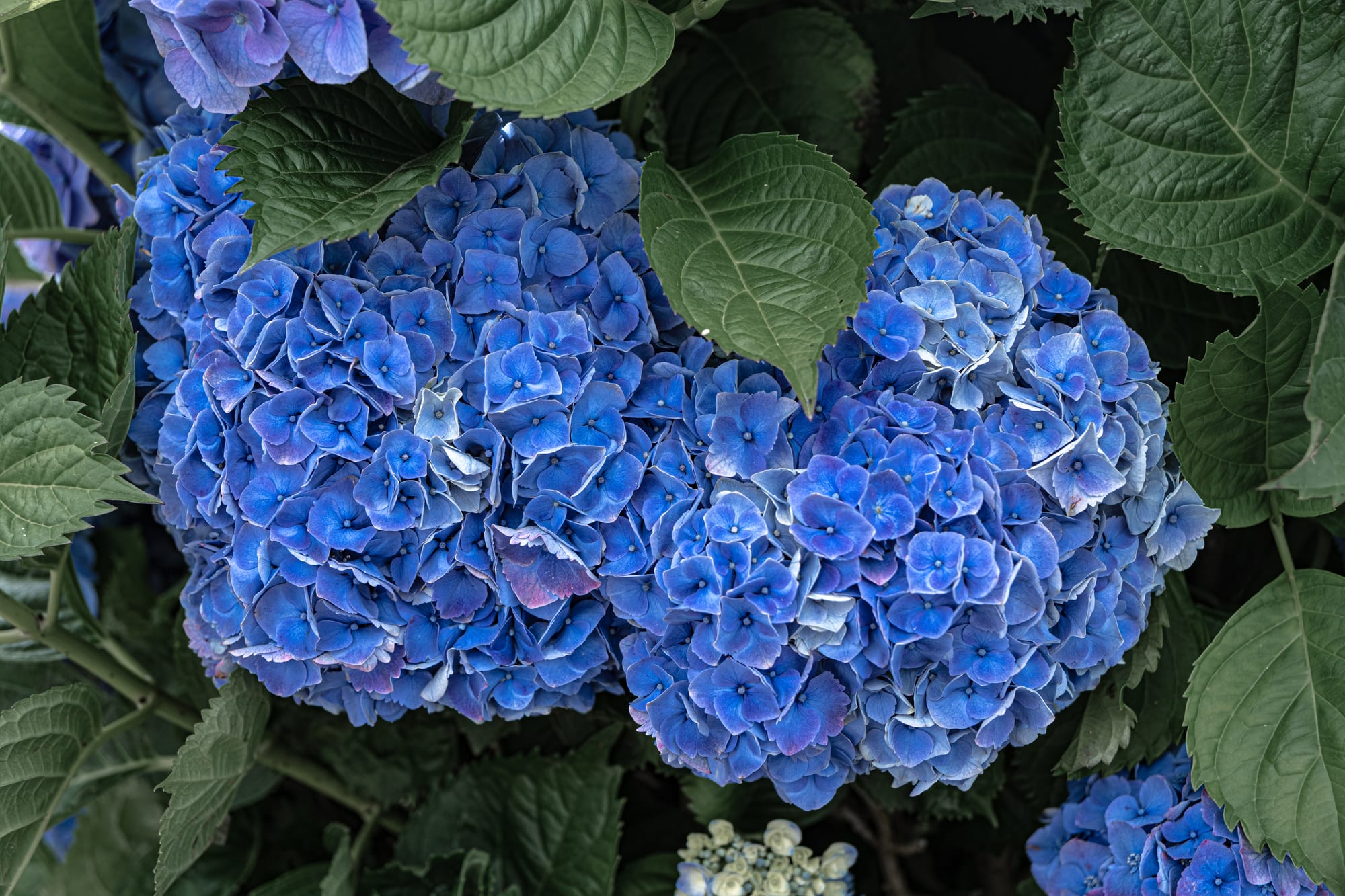
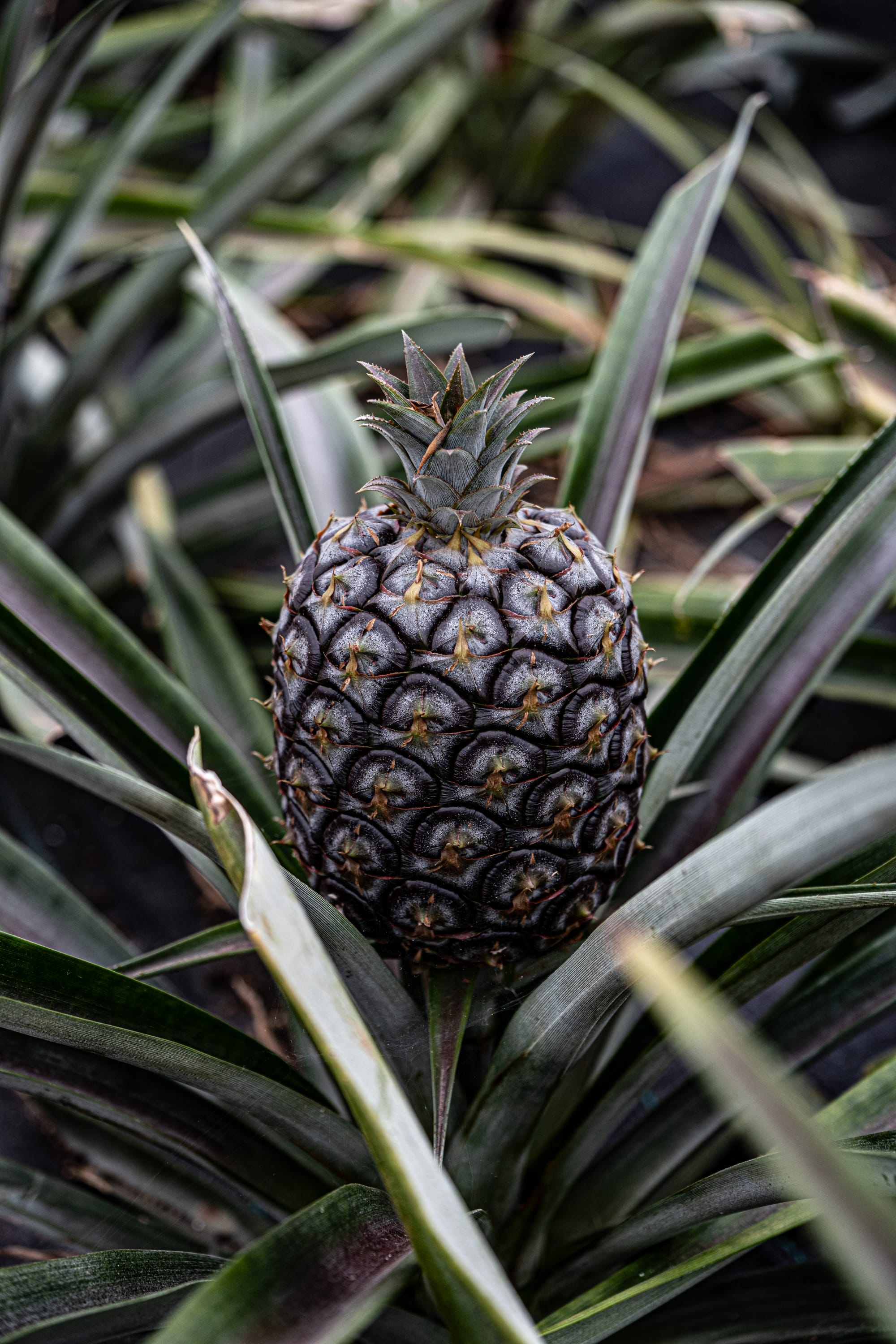
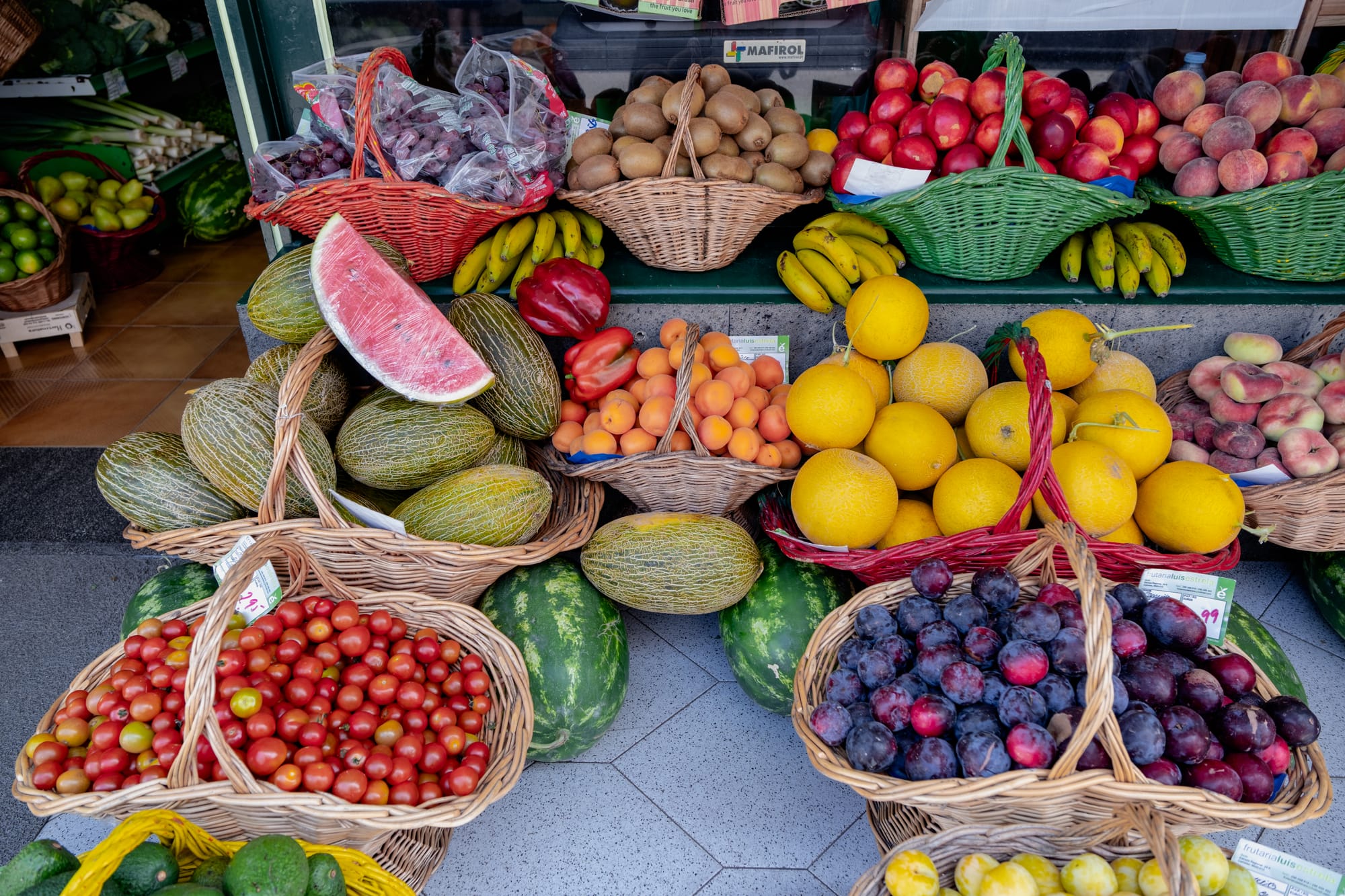
If you’re working US hours, the time zone overlap is ideal—you get your mornings to yourself, and your workday finishes just as the sun dips into the sea. It’s a place that invites breath. Deep work thrives here not in spite of the landscape, but because of it. The textures, the quiet, the space—they’re not just background, they shape your pace.
This is not Madeira
Madeira might be the Azores’ more famous sibling, but São Miguel is a very different kind of experience. It’s quieter. Slower. Less built up. There aren’t lines for hikes, no digital nomad villages, and no influencer crowds at every viewpoint. You won’t find a dozen coworking cafés, but you also won’t be elbowing your way to a waterfall.
A lot of people compare the two islands because they’re both Portuguese, volcanic, and green. But where Madeira is dramatic and steep, São Miguel is more layered—rolling hills, crater lakes, hot springs tucked into rainforest, and a rhythm that feels rural, not resort-like.
We’ve heard from people who lived in Madeira and later moved to São Miguel because they wanted something more low-key. More places to think, hike, write, surf, soak, and breathe.
If you’re into nature, solitude, and being part of a smaller, emerging nomad community, São Miguel offers all of that—without the overdevelopment. Just come with realistic expectations: it’s not flashy. But if you’re into slow mornings, moss-covered trails, and walking to fill your water from a mineral spring, you’ll be in good company.
If you’ve considered Madeira, know that São Miguel is greener, slower, and far less touristed. While Madeira has become a hotspot with major nomad infrastructure, São Miguel still feels like a well-kept secret. Here, there are no lines to hike a trail. You’ll likely have hot springs or coastal miradouros all to yourself.
When to go
The best months to visit São Miguel are June through September, with June being our personal favorite. That’s when the hydrangeas are at their peak bloom, draping the roadsides and trails in thick clusters of blue, purple, and white. June also tends to bring more stable sunshine without the crowds of July and August. If you want lushness without too much traffic, this is the sweet spot.
July and August are the busiest months on the island—schools are out, flights fill up, and major local festivals like Festas do Senhor Santo Cristo draw both tourists and returning Azoreans. It’s a vibrant time to be on the island, but it also means booking accommodations and rental cars well in advance.
May is a great under-the-radar month if you don’t mind a bit of weather roulette. You’ll get wildflowers, soft light, and quieter roads. April is rainier but full of color—ideal for mossy hikes and thermal baths if you’re leaning into the moody, verdant feel of the island.
September is still warm and beach-friendly. The crowds thin out and prices sometimes dip. It’s a great time to visit if you want both sun and solitude.
October brings more mist and mood. The island starts to quiet down. Trails get softer, skies more dramatic. This is when hot springs really come into their own—you’ll appreciate the contrast of cool air and geothermal heat.
November through March is the island’s true off-season. Expect more rain, wind, and unpredictable shifts between clouds and sun. But if you’re looking to cozy up in a co-living, take slow hikes through the fog, and have the thermal springs almost entirely to yourself, it can be a rewarding time. Just know that some restaurants and attractions may have shorter hours or seasonal closures.
Our advice on the best time to be on the island
If you’re coming to work remotely and explore on weekends, May–June or September strike a great balance.
If you’re here mostly to hike, April–June offers green trails and fewer people.
If you’re into photography or thermal soaking, October–March is deeply atmospheric.
If you’re here to swim, July–September are your warmest bets.
No matter when you go, bring layers. The island often cycles through all four seasons in a single day—and that’s part of the magic.
Getting to and from São Miguel
Direct flights to Ponta Delgada (PDL) are available from Lisbon, Porto, and several international hubs including Boston, Toronto, London, and Frankfurt.
For nomads plotting a slow travel route, São Miguel is a beautiful midway stop between Europe and North America. Some people combine it with mainland Portugal, Madeira, Cabo Verde, or even the Canary Islands.
Working remotely from São Miguel
Most remote workers we met set up shop in colivings like Lava or Dwell, with fast wifi and calm shared workspaces. You won’t find a lot of laptop-friendly cafes, so it helps to stay somewhere with a proper desk and good lighting.
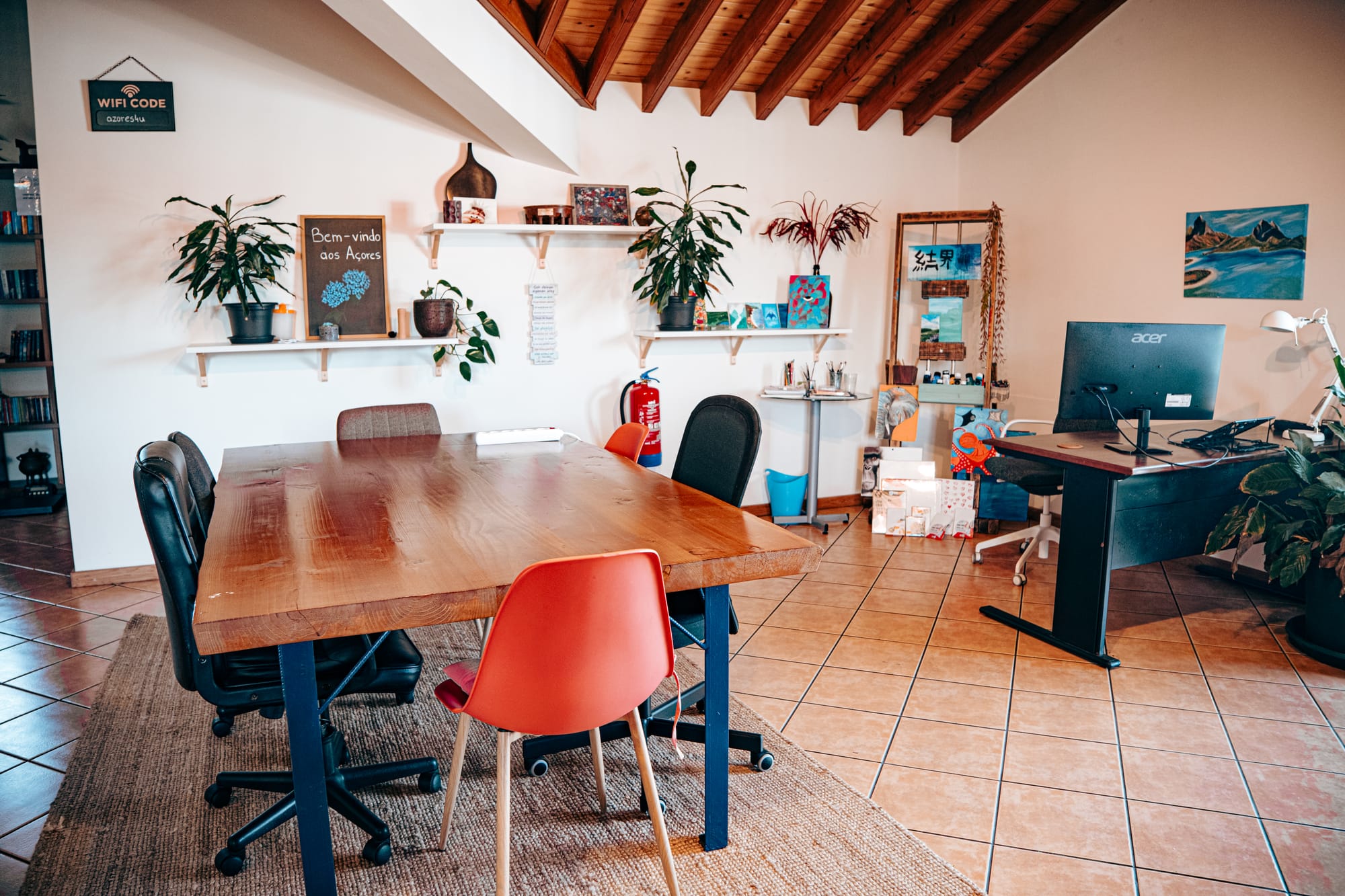
The quiet, non-distracting rhythm of island life is conducive to deep work. Just remember: bring any gear you need. Tech shopping on the island is limited.
Digital nomad community
Let’s set expectations: São Miguel doesn’t have a huge digital nomad scene. There’s no WhatsApp group, no weekly mixers, and no calendar full of community-hosted events. If you’re coming from a place like Chiang Mai, Bansko, or Lisbon, you’ll feel the difference immediately.
That said, there is a growing presence. Colivings like Lava and Dwell are the heart of the nomad community on the island. We met most of our friends through Lava—cooking together, soaking in hot springs after work, going on group hikes, or piling into someone’s rental car for a road trip. There were occasional joint potlucks between colivings and a few casual get-togethers, but nothing structured or regularly recurring.
The social scene here is quieter, more intimate. Think slow dinners with a few people, not large meetups. Group hikes and waterfall swims, not coworking cafe crawls. Most nomads here are passing through for a few weeks to a month, and that means your community might shift quickly. We loved it. But it’s definitely not plug-and-play.
If you’re someone who thrives on organized social infrastructure, you might find Madeira a better fit—with its year-round digital nomad village, regular events, and larger pool of remote workers.
But if you’re okay with a low-key, naturally forming social circle, and you’re someone who likes being a bit more present with whoever is around, São Miguel can be incredibly rewarding. The friendships we made here were deep and meaningful. And the fact that we were often the only nomads in a hot spring, on a trail, or in a town made it feel like our experience was fully our own.
Azorean culture
Azorean culture is deeply tied to both land and sea—fishing villages, crater-farming, dairy herding, volcanic cooking, and sea-salt air all shape daily life here. São Miguel in particular is known for its lush agricultural valleys, its use of geothermal heat for cooking (as in the traditional cozido das Furnas, a stew slow-cooked underground), and for a quiet resilience that comes from living on a remote, weather-shifting island.
You’ll see hydrangeas lining every road, grazing cows in nearly every open field, and a blend of old stone churches and modern murals throughout even the smallest towns. Most locals still do their shopping at small mercearias, know their neighbors, and treat Sundays as sacred. Weekly routines often include fishing, farming, mass, and meals with extended family.
Festivals—especially in the summer—are a big part of the cultural rhythm. These range from religious processions like Festas do Espírito Santo (with locals giving out sweet bread) to secular celebrations like São João with dancing, sardines on the grill, and fireworks. Villages string up lights, dress in traditional clothing, and gather in community squares.
While Ponta Delgada has a more cosmopolitan energy, the rest of the island moves gently. There’s an intimacy to Azorean life—a sense that people are tuned into nature and one another, and that time is meant to be experienced, not spent.
Psychogeographics
What does it actually feel like to live on São Miguel for a month or more? Think slowness, softness, and breath. This is an island where mornings start with ocean mist and end in hot springs under the stars. Where people smile at you in the market, where time unspools differently, and where your work rhythm shifts from frantic to focused.
Nature isn’t just a backdrop—it shapes the pace of everything. There’s a collective awareness of weather, soil, harvest, wind. You’re never far from birdsong or basalt or something lush and green unfurling.
We wrote a full piece on the texture of life here: Island time, island pace: digital nomad life on São Miguel.
Where to stay
You can base yourself in a coliving or book a private place and build your routine around hikes, hot springs, and markets. Here are our top picks for coliving and private stays, broken down by region.
Central / North-central (Ribeira Grande, Santana, Rabo de Peixe)
Lava Coliving & Coworking: Peaceful, spacious, and ideal for deep work. The coworking space has fast wifi, and the vibe is both social and focused. The backyard and balcony offer ocean views and greenery. A top pick for solo remote workers or couples. Close to the farmers' market, hot springs, and hiking trails.
Dwell Coliving & Coworking: With a fantastic ocean view and regular communal events, Dwell is perfect for those who thrive in a more active community. Accommodations are much tighter than Lava, but the proximity to the beach and community make up for it.
West Coast (Mosteiros, Sete Cidades)
Novovento Coliving: Tucked away near Sete Cidades, Novovento is ideal if you want to be near São Miguel’s most iconic lakes and hiking trails. Expect serenity, dramatic landscapes, and a sustainable coliving model built around its veggie garden and ocean views.
Canto do Mar: Perfect for couples or pairs, these cozy homes are right on the water. Great base if you want access to Caneiros pools or the wild western trails, with privacy and independence.
East-central (Furnas)
InSide Furnas: A charming 2-bedroom house located within walking distance of the town’s geothermal springs. If you’re into nature bathing, lush vegetation, and misty mornings, this base is unbeatable. Fast wifi and cozy interiors make it perfect for a month-long stay.
East Coast (Nordeste)
Casas da Chaminé Eco Country Lodge: If you want silence, bird songs, and sweeping sea views, base yourself here. These charming houses include access to a pool and terrace. Ideal for creatives and long-form projects.
South Coast (Vila Franca do Campo)
Quinta D. Maria & Inês: A great option for groups or families, this spacious house has ocean views and easy access to the islet and local cafes. It’s also right near the Santuário de Nossa Senhora da Paz.
Eco-conscious / regenerative living
Quinta do Bom Despacho: A seasonal ecoliving project that welcomes digital nomads from October to April. If you value permaculture, sustainability, and thoughtful community, this is a transformative space to stay.
The best things to do on São Miguel
There’s no shortage of things to do on São Miguel—but what stood out most to us weren’t the biggest tourist attractions, but the experiences that felt rooted in the island’s landscape and pace. Think hot springs tucked in the forest, long ridgeline hikes past crater lakes, small towns, and coastlines where you’ll have entire viewpoints to yourself.
This list includes our personal favorites—places and moments we’d genuinely go back for. Some are well known, others are off the radar. Most of them have a full post you can read if you want more details, photos, or tips. Our advice: don’t try to do everything. Pick a few things that align with how you like to travel, and give them the time they deserve.
Hot springs & caldeiras
Caldeira Velha
Forest-framed geothermal wonder.
Located along the lush slope of the Fogo volcano, Caldeira Velha is one of the most atmospheric hot springs on São Miguel. The site is woven into a rainforest-like landscape of tree ferns, hanging mosses, and dense tropical foliage. As you walk along the boardwalk, the air thickens with warmth and the scent of sulfur, leading you to a cascading geothermal waterfall surrounded by rust-colored rock and mineral-rich pools.
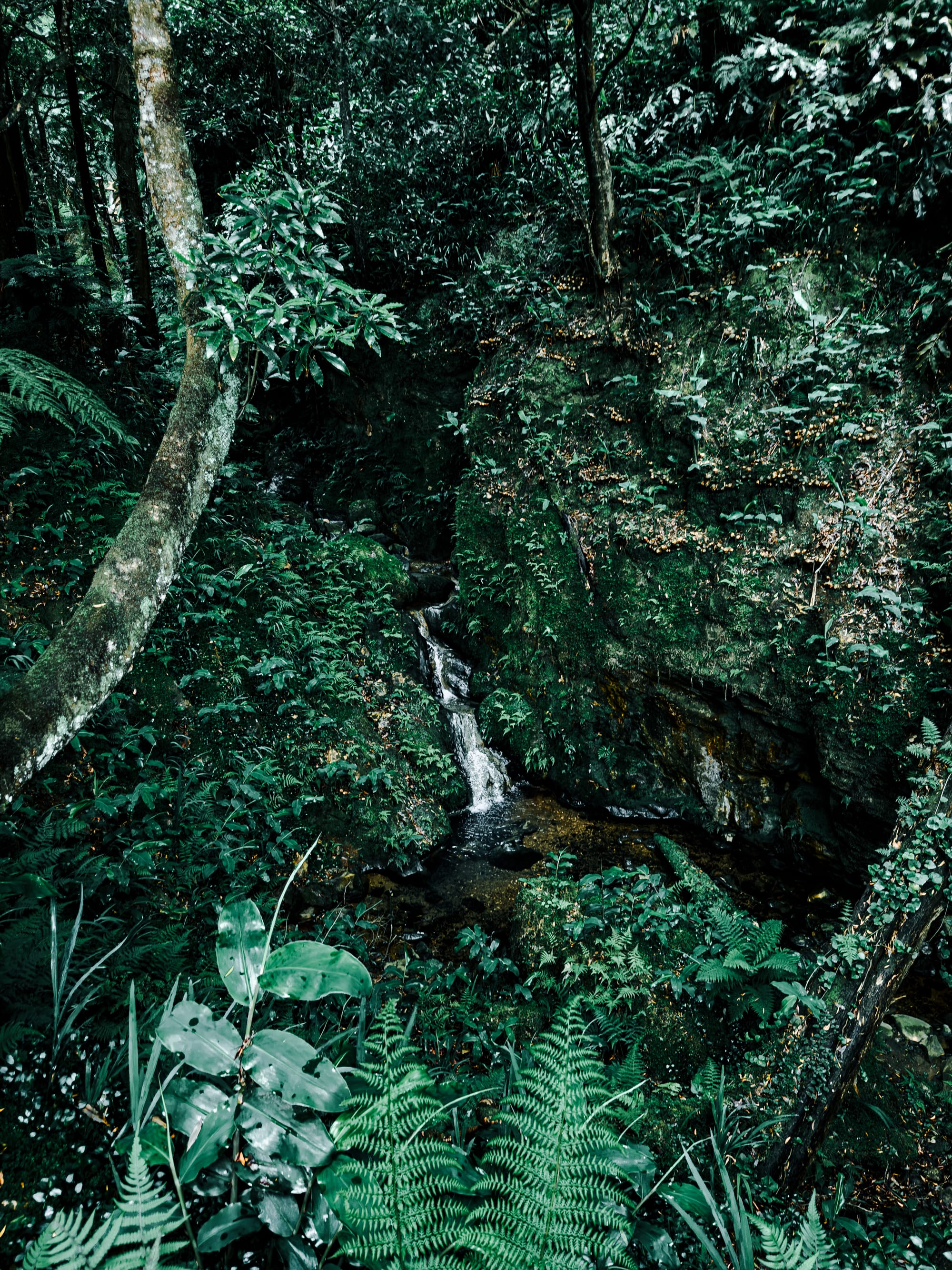
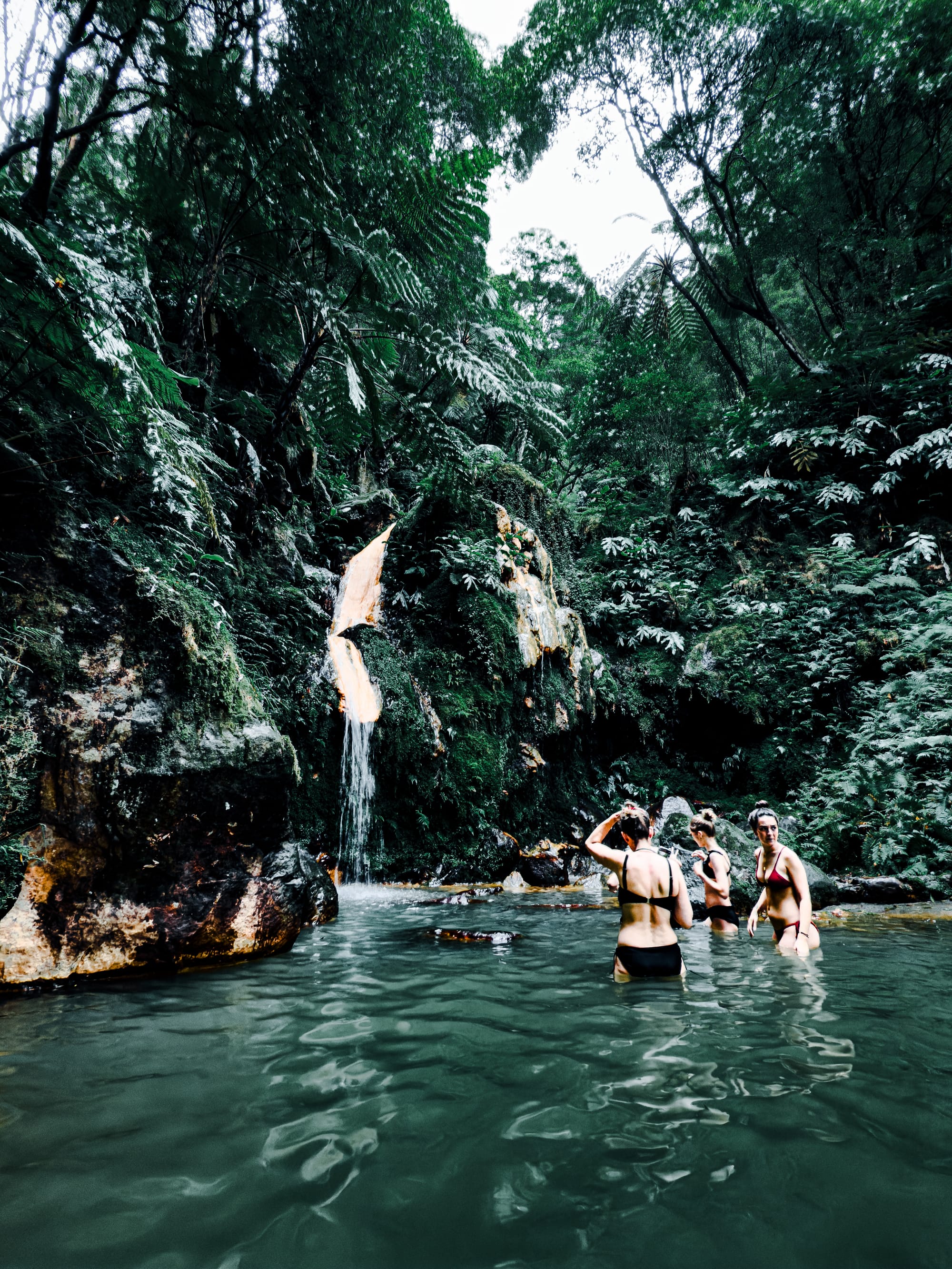
The pools vary in temperature, inviting you to ease in and out depending on your mood. Early mornings or misty afternoons are especially magical—when steam rises from the water and birdsong echoes through the canopy, you feel suspended in a prehistoric dream. The site also has a small interpretive center explaining the volcanic forces behind it. Entry is timed to limit crowding, so book in advance if you’re visiting during high season.
Poça da Dona Beija
Orange-tinged sanctuary in the heart of Furnas.
Nestled within the volcanic village of Furnas, Poça da Dona Beija is a thoughtfully designed thermal spa fed by iron-rich waters that hold a consistent temperature of 39°C. The stone channels and walled pools are laid out like a geometric garden, framed by lush vegetation and bathed in the golden hue of sulfur sediment. Each pool has its own mood—some shallow and quiet, others deeper and steamy—and all are named after states of mind like “meditação” or “reflexão.”
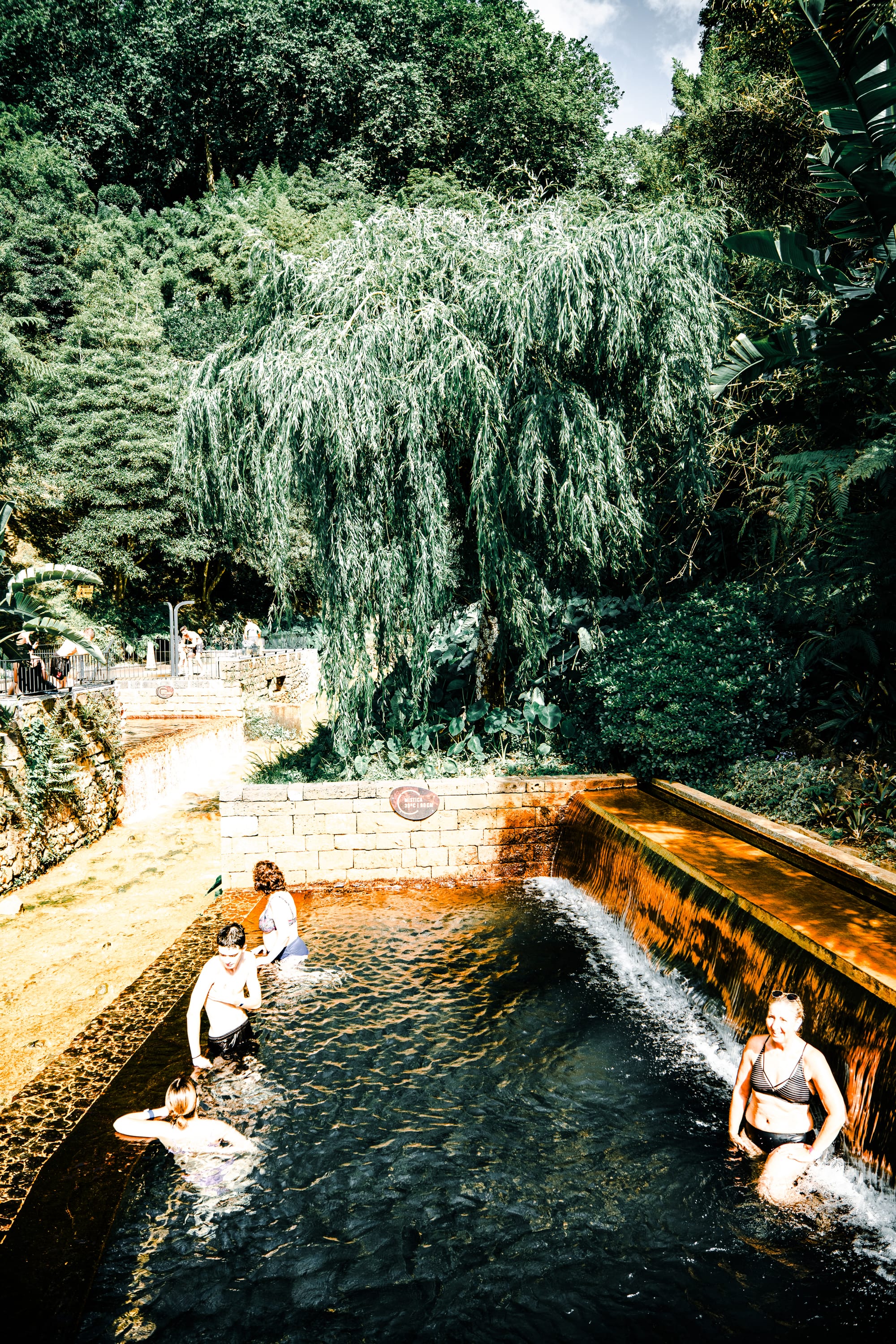
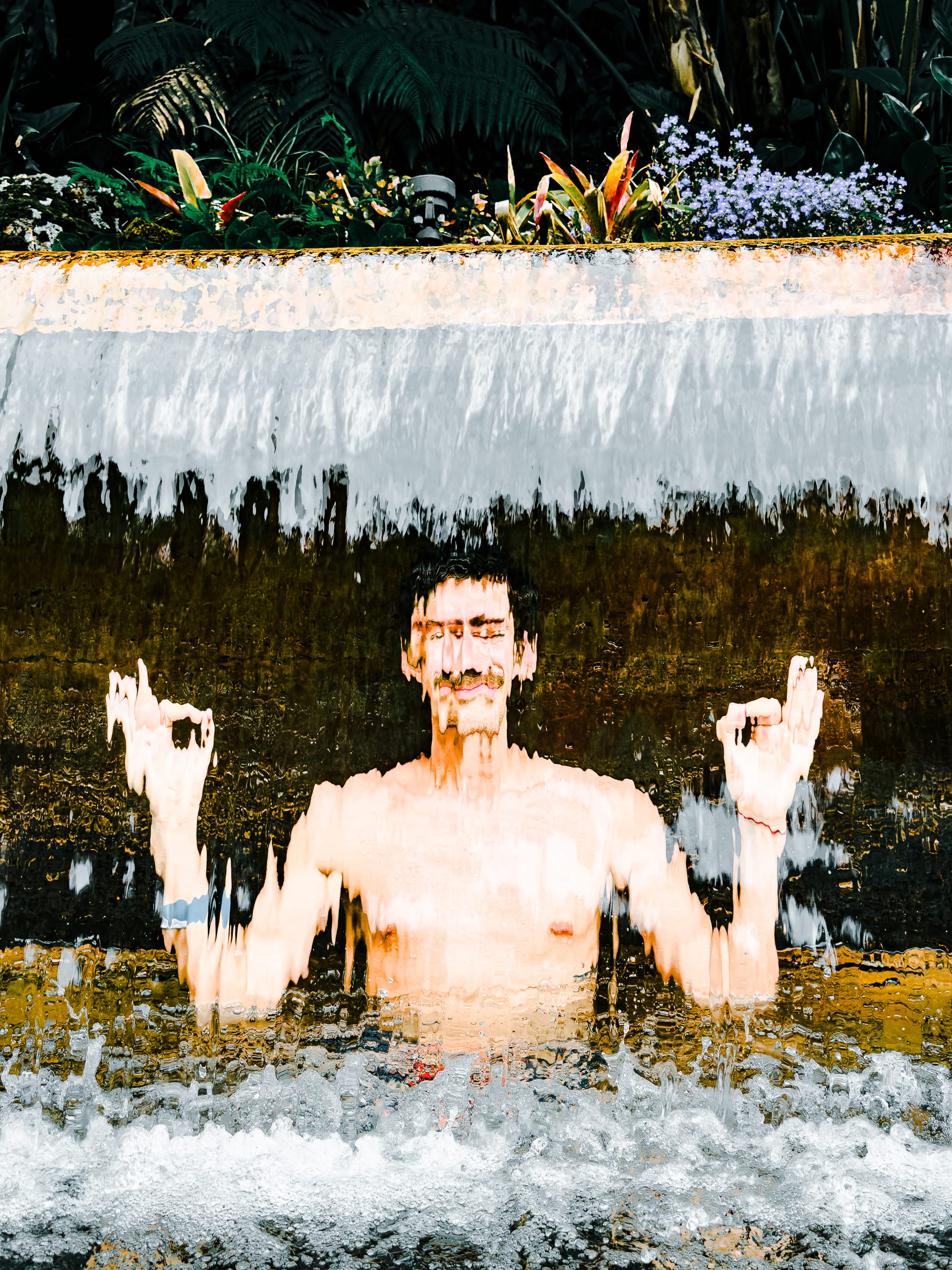
A natural stream flows through the center, and a red clay sediment can be applied as a DIY face mask between soaks. Come at night for an especially tranquil experience, when the pools glow under low lighting and steam curls into the cool air. Sessions are timed (usually 1.5 hours), so make the most of your moment of stillness. For many travelers, this is a highlight of São Miguel—and an anchor for returning to calm.
Furnas caldeiras
Bubbling sulfur and steam vents in town.
Wander just a few steps from the central garden of Furnas and you’ll find yourself enveloped in steam. The Furnas caldeiras—bubbling geothermal vents and fumaroles—are embedded directly into the village streetscape. Here, volcanic activity isn’t something you hike to; it’s integrated into daily life. Vents hiss beside sidewalks, water boils in stone basins, and the air carries the sharp scent of sulfur, especially after rain. Locals stop by to collect mineral-rich spring water from public taps, each with its own mineral profile and taste.
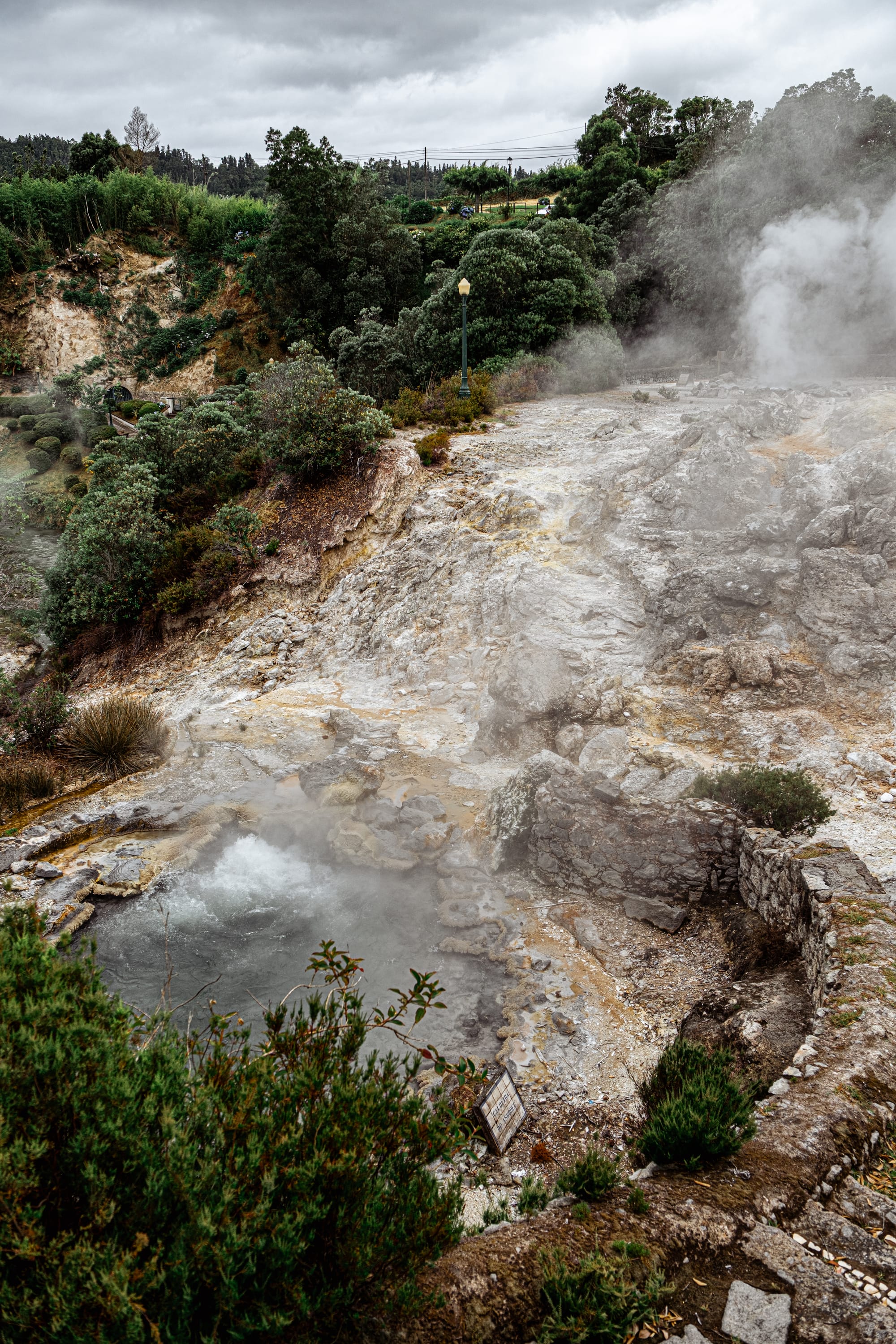
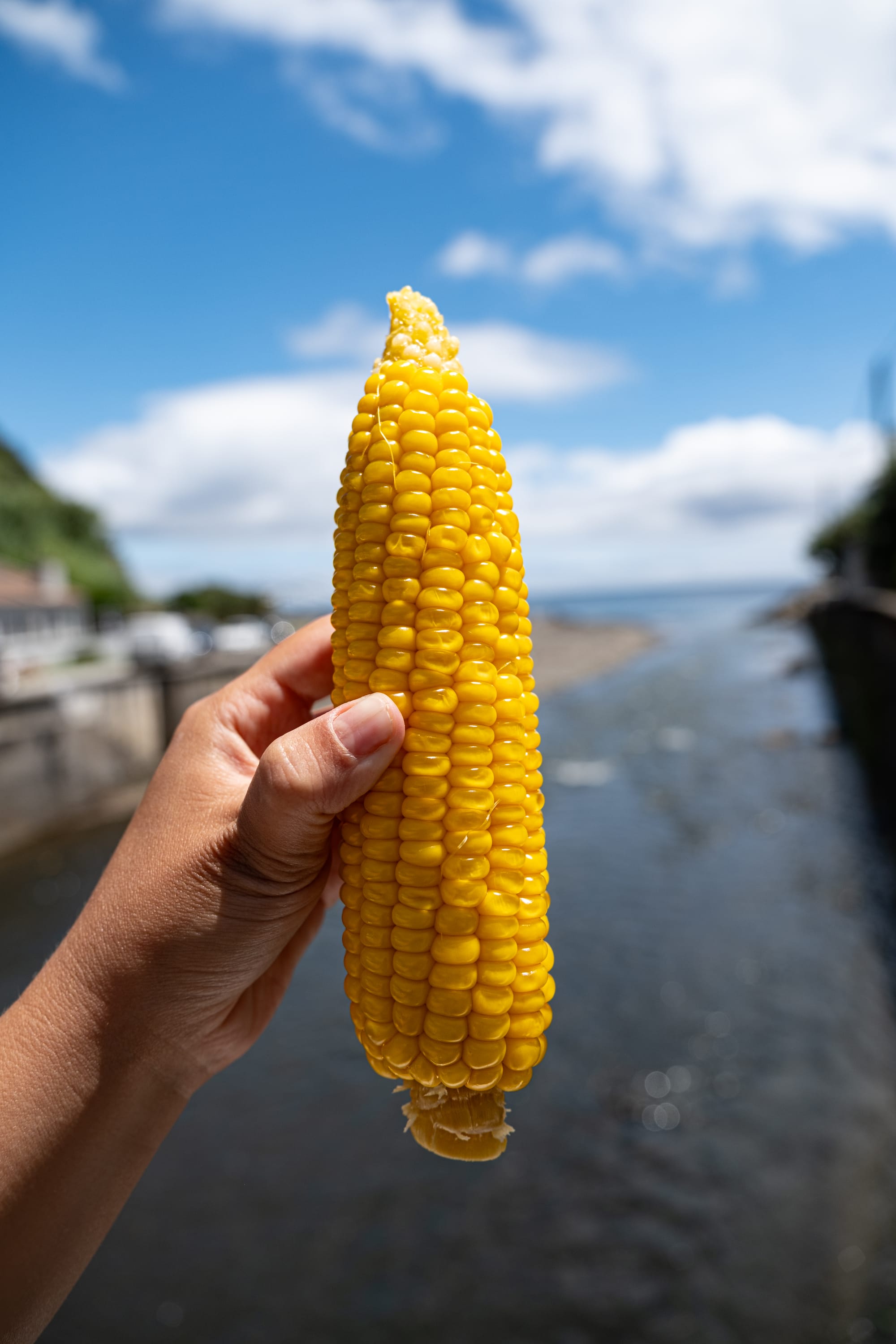
On certain mornings, you’ll see stalls selling milho cozido, sweet corn boiled in the caldeira water until perfectly tender. Watching the steam rise between tiled houses and cobbled paths is both surreal and grounding. It’s an invitation to pause and observe—not just nature, but the ways in which humans live beside it. While the Furnas caldeiras are smaller and more immediate than Caldeira Velha or Poça da Dona Beija, they offer one of the clearest glimpses into the island’s geothermal pulse.
Hiking
Moinhos da Ribeira Funda
Stairway to the sea.
On the wild northern edge of the island lies one of São Miguel’s quietest trails—a descending path through cornfields, coastal cliffs, and eucalyptus groves that eventually opens onto the ocean. Moinhos da Ribeira Funda is a hike of texture and solitude. The trail moves from dirt roads to fern-fringed forest to a rocky descent that feels like it could lead straight into the Atlantic.
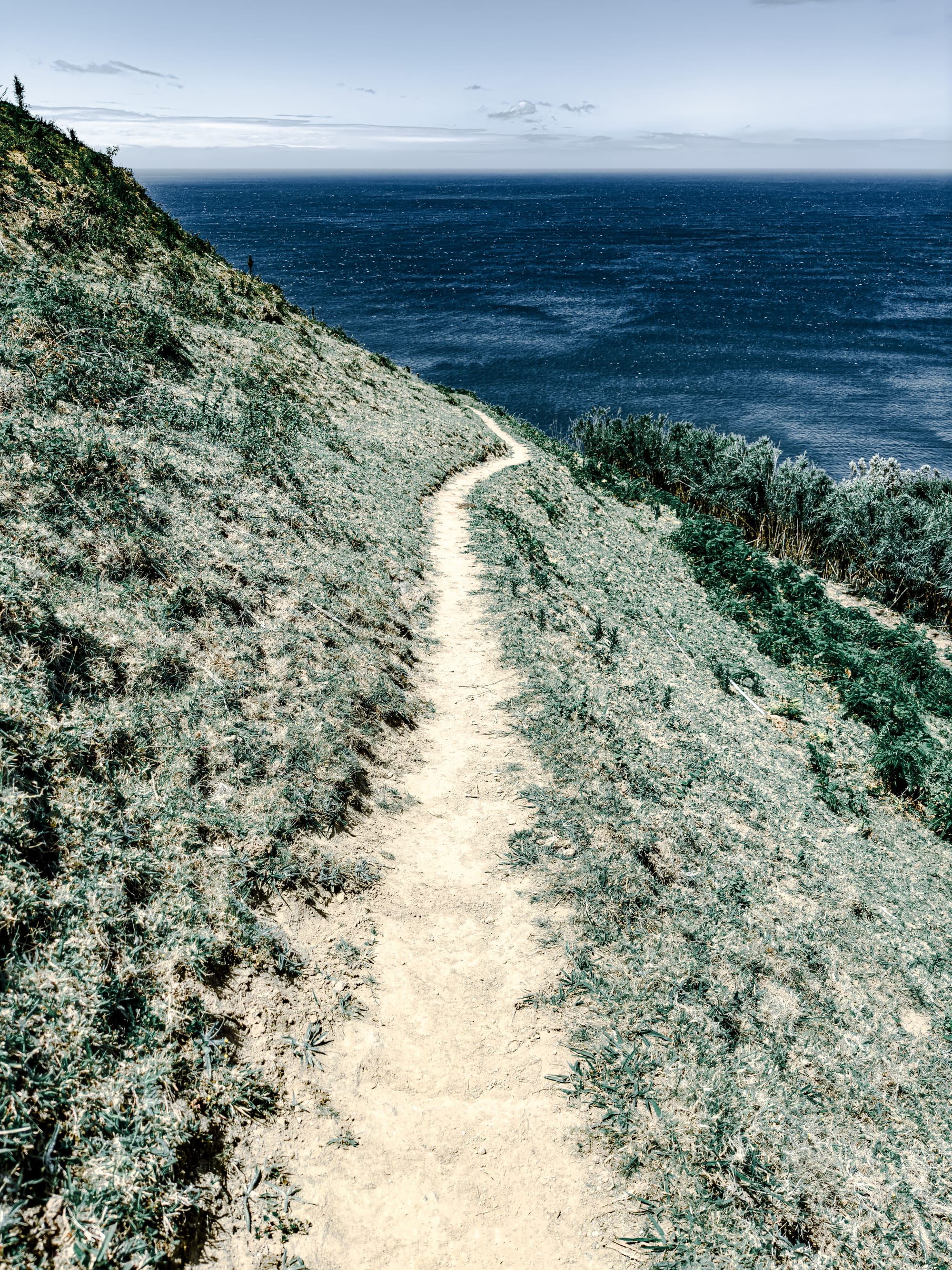
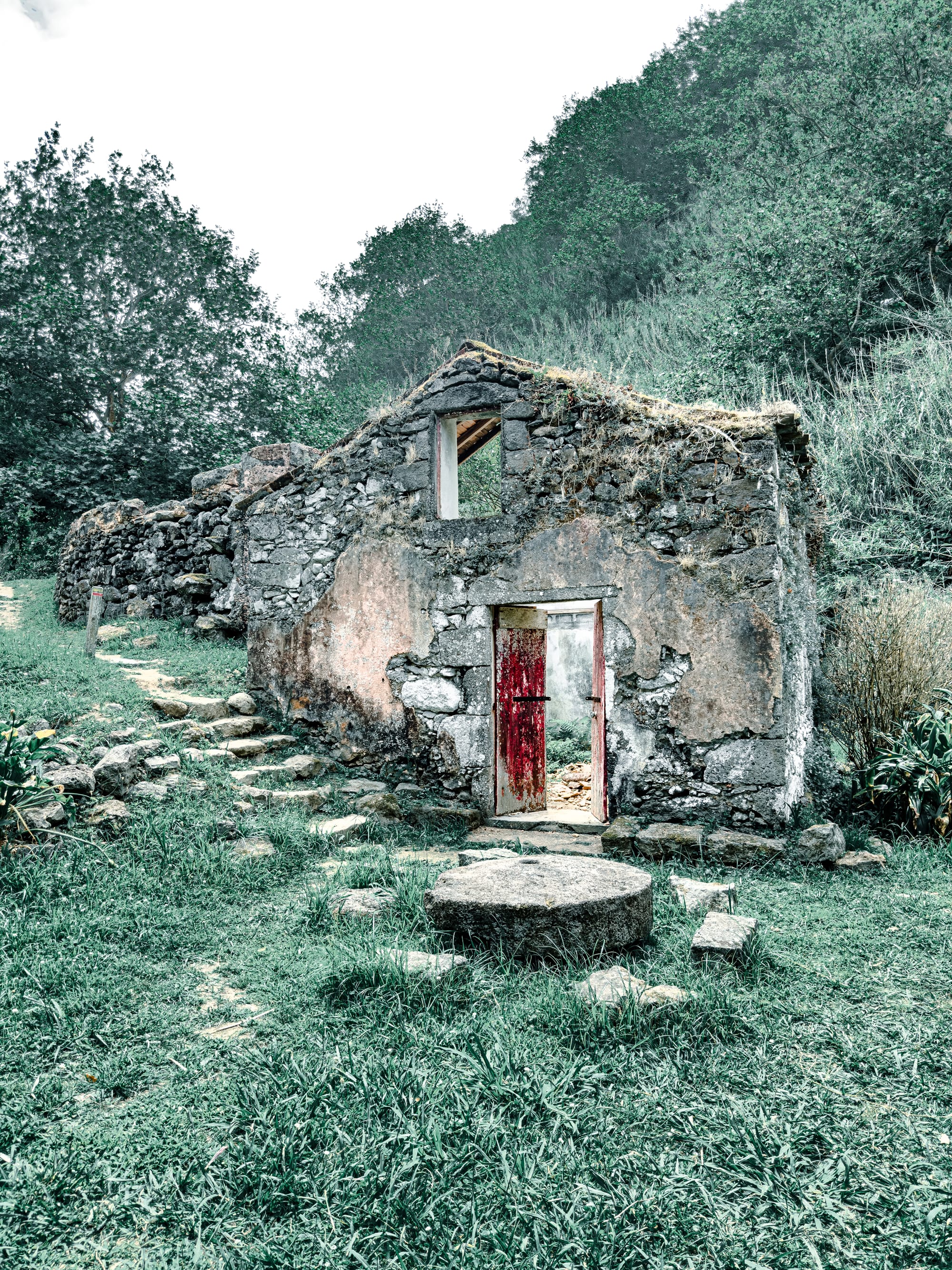
Along the way, you’ll pass a small waterfall, an old mill with a red door, and wild plantings that blur the line between cultivated and untamed. We combined this trail with Moinho do Félix on a full-day hike with Atlantimagia, and it remains one of our most memorable experiences.
Moinho do Félix - Cascadas
Forest loop of waterfalls.
Moinho do Félix is a lush, looped hike through dense green—a waterfall pilgrimage. The path alternates between wide-open sky and enclosed forest, with staircases climbing up and down red clay earth. Morning glories tangle in the branches, and the waterfalls come one by one: some soft and hidden, others cascading with full force.
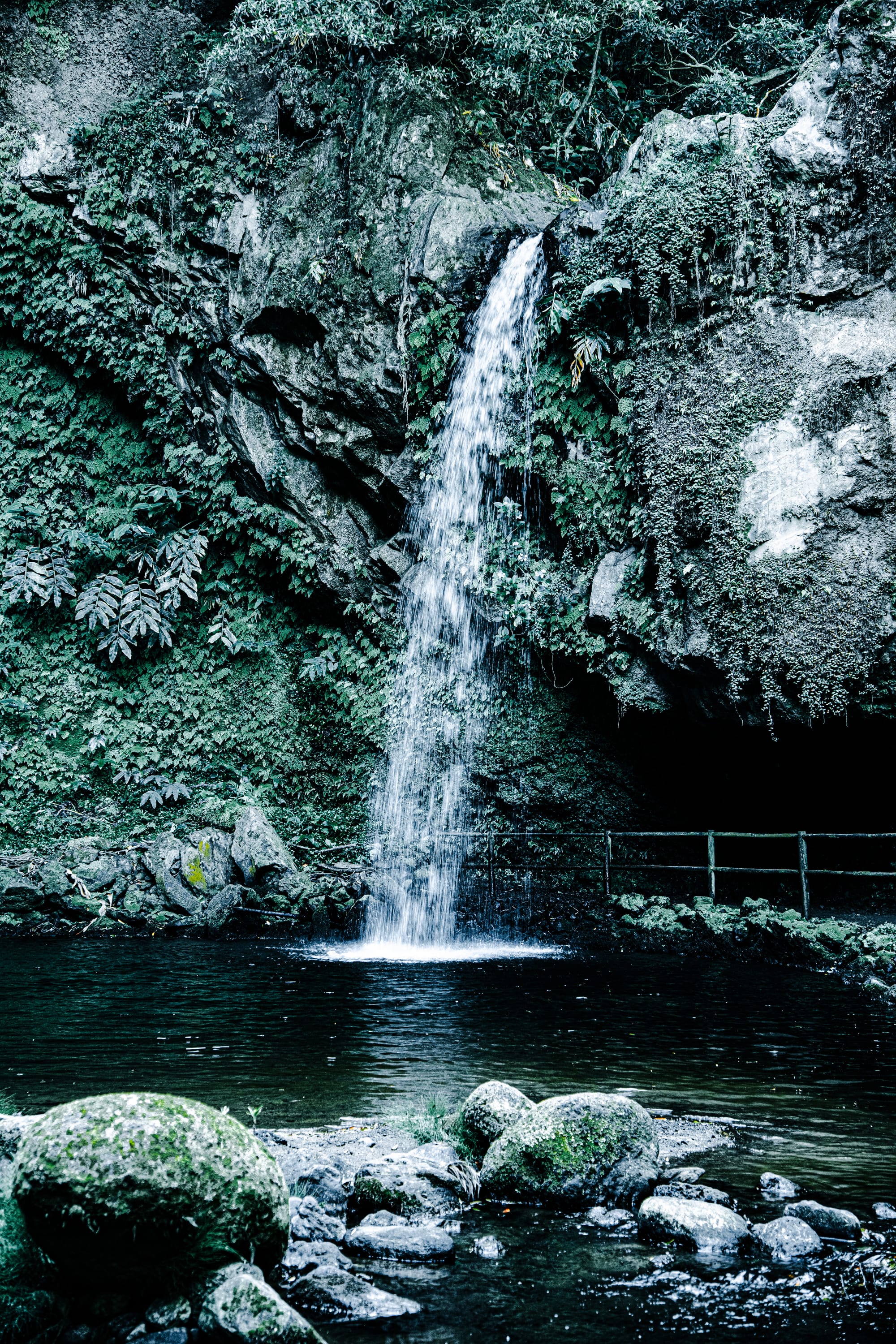
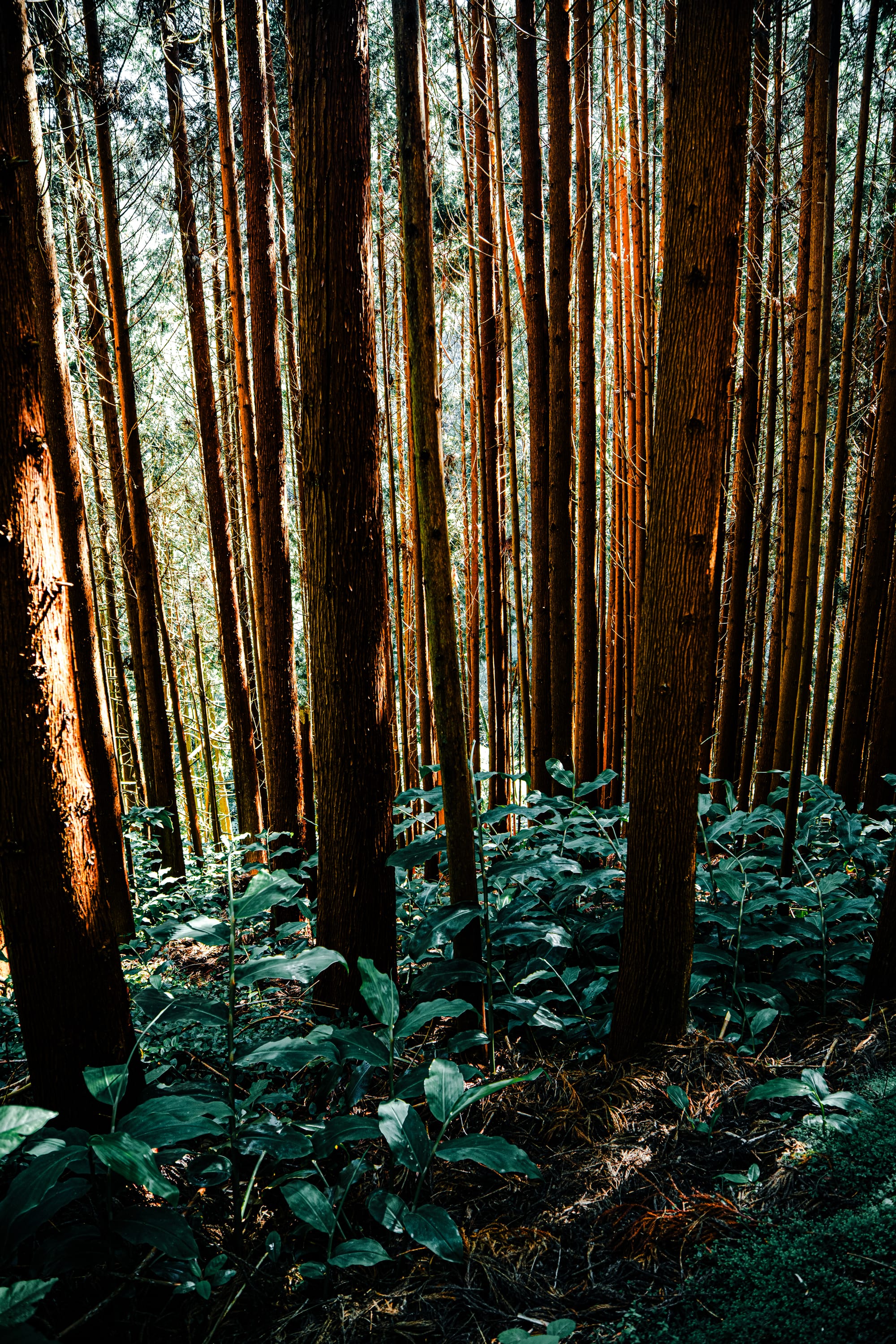
There are moments of stillness and the joy of not knowing what’s around the next bend. It’s easy to do in a few hours, but its sensory imprint lasts far longer.
Sete Cidades southeast lagoas
Cinematic crater and ocean views.
This loop trail—just southeast of Sete Cidades proper—passes several lesser-known crater lakes including Lagoa do Canário, Lagoa Rasa, and Lagoa das Éguas. But the lakes are just part of the show. The trail winds along ridgelines with dramatic views of ocean and inland craters, through patches of golden lichen, red volcanic moss, and grasslands that ripple with wind.
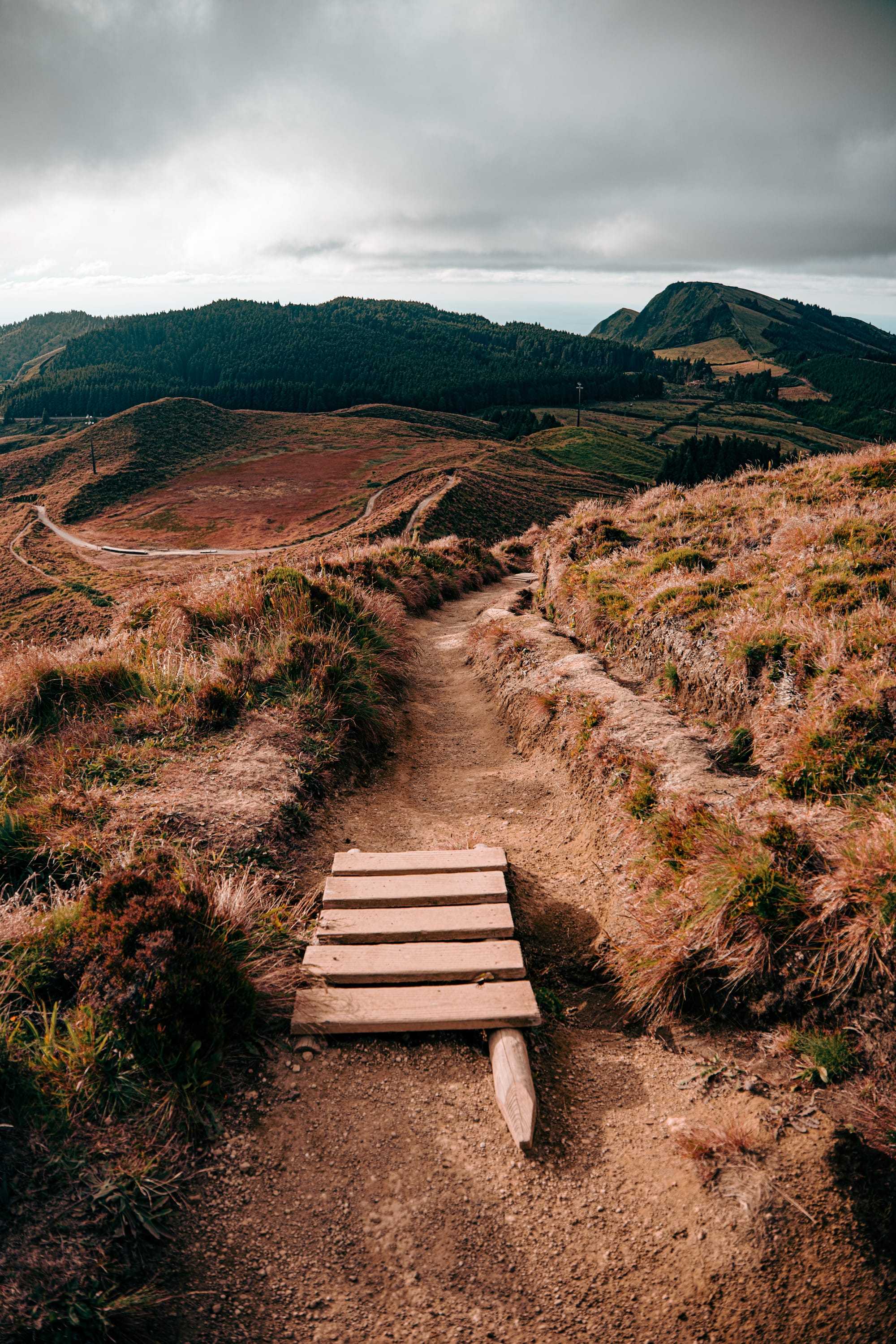
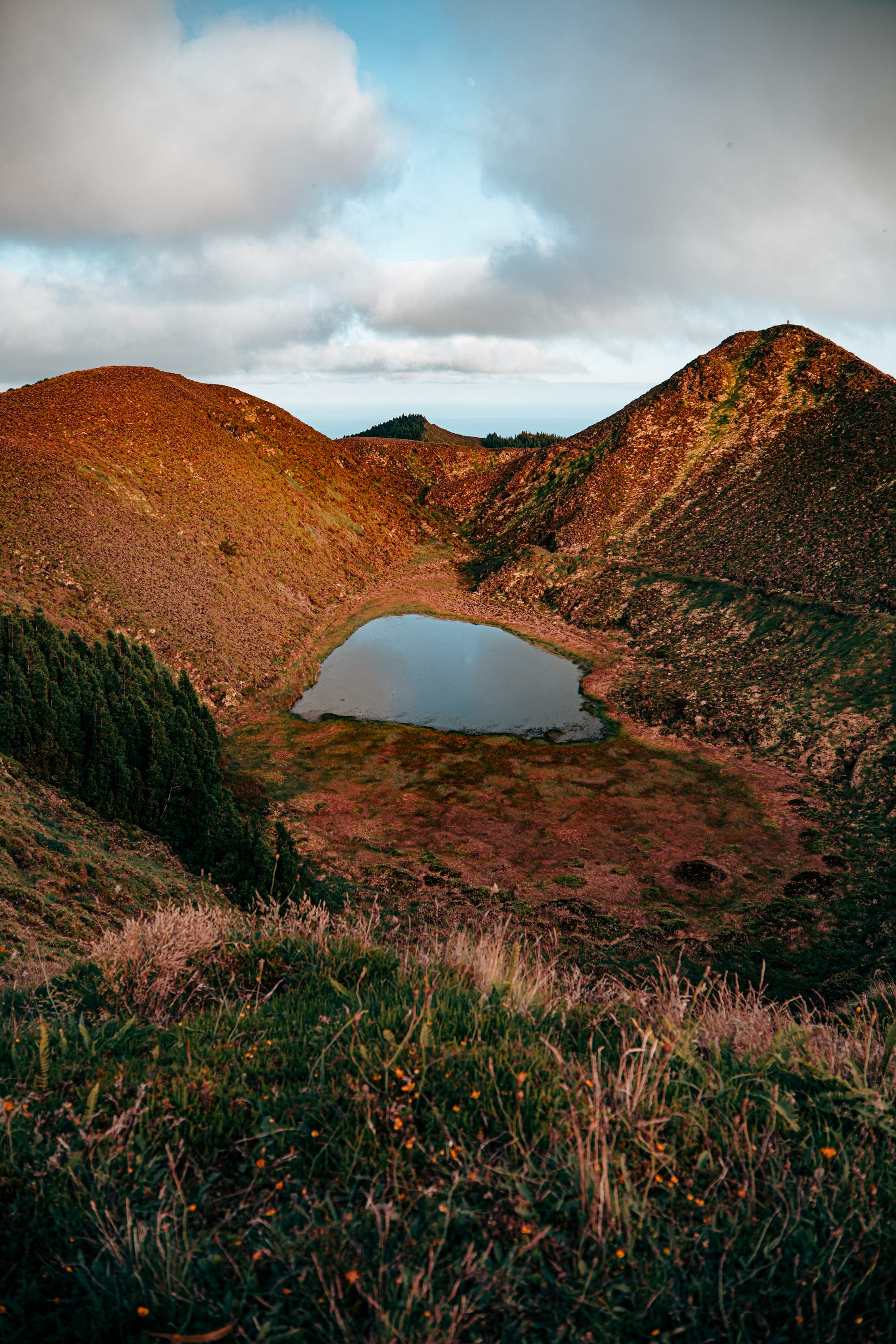
You’ll pass wildflowers, birdsong, and the occasional cow, all while keeping several lagoas in view at once. On a clear day, the color contrasts are surreal. It’s a hike that feels like drifting through layers of São Miguel’s geologic and ecological memory.
Lagoa das Furnas & Grená Park trails
Thermal mist and gothic forests.
Tucked on the eastern edge of Lagoa das Furnas, Grená Park is a lesser-known trail network that unfolds like a foggy fable. Before entering, be sure to hike around the lake itself. Begin near the gothic church, and you’ll soon be winding through fern-draped ravines, groves of whispering bamboo, and moss-covered staircases that feel pulled from another era.
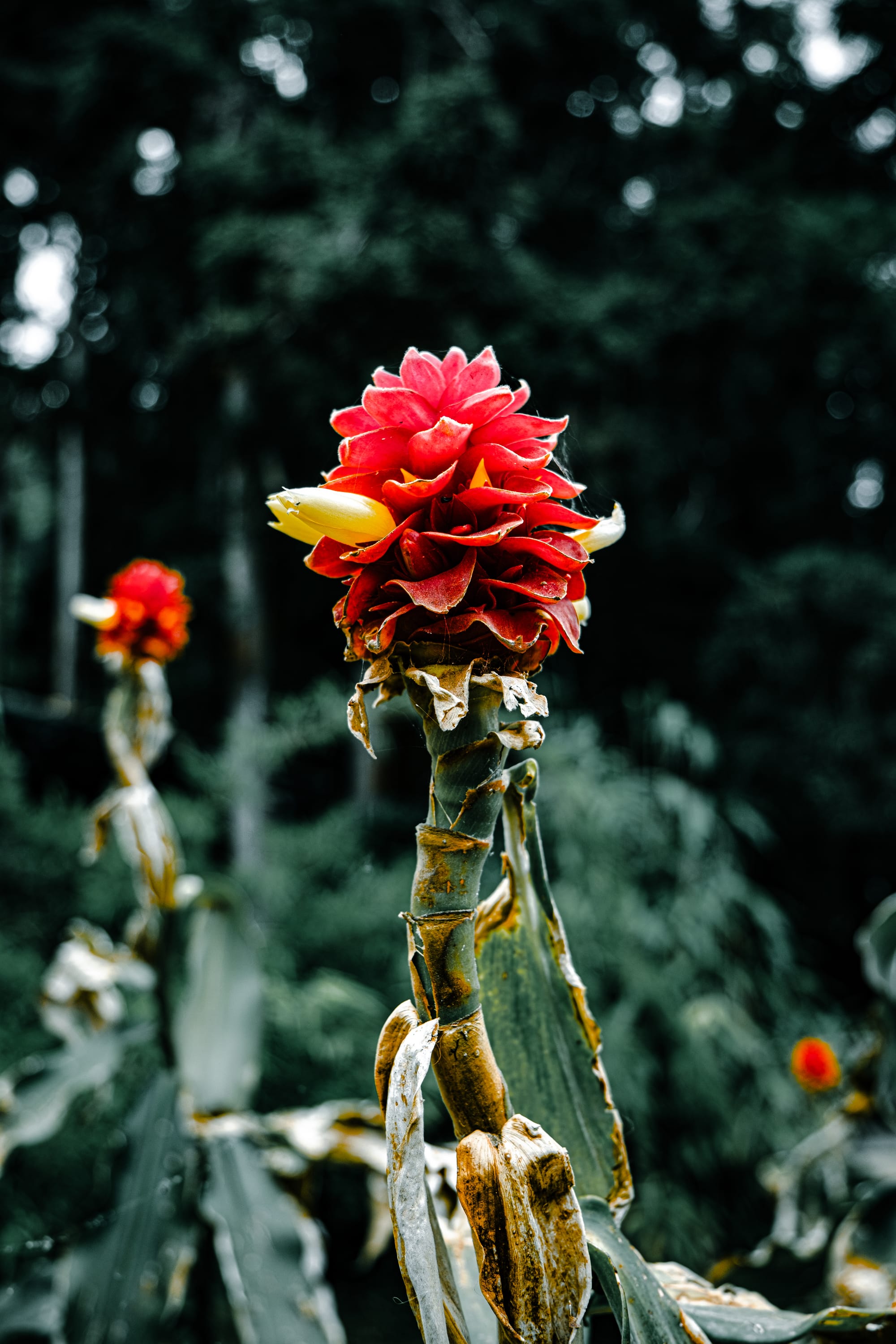
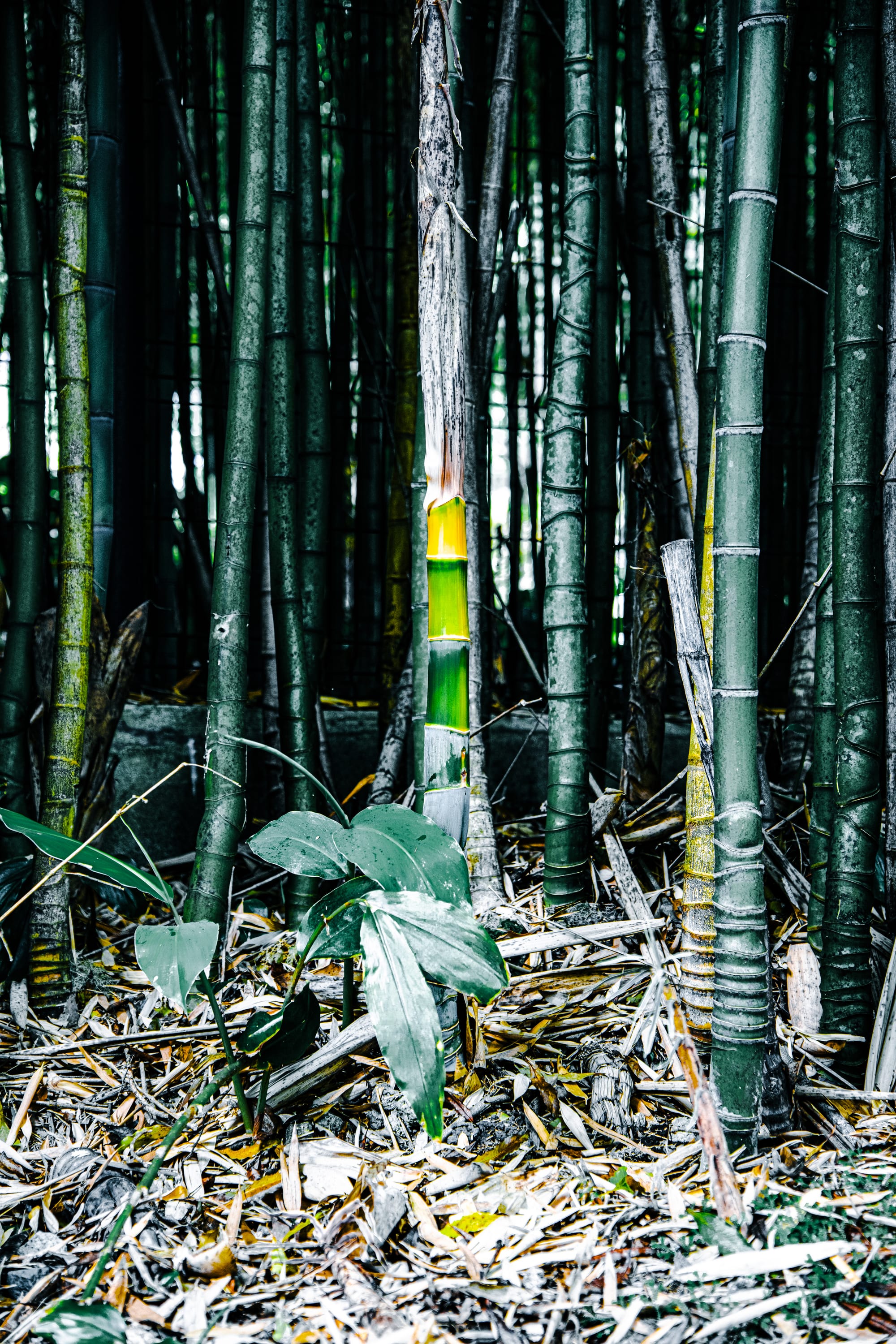
The sound of water—falling, trickling, rushing—follows you throughout. The trails are mistier, moodier, and more forest-bathed than most, making them ideal for those who prefer atmosphere to altitude. End your loop with a view back toward the lake’s thermal waters and wander into town for a post-hike soak.
Trilha do Sanguinho / Salto do Prego
Deep green.
Densely alive, the Sanguinho trail near Faial da Terra feels like stepping into a botanical dream. The path rises through a pocket of forest so lush you’ll think twice about leaving. Canna lilies glow yellow, cycads spiral upward, and moss traces every step.
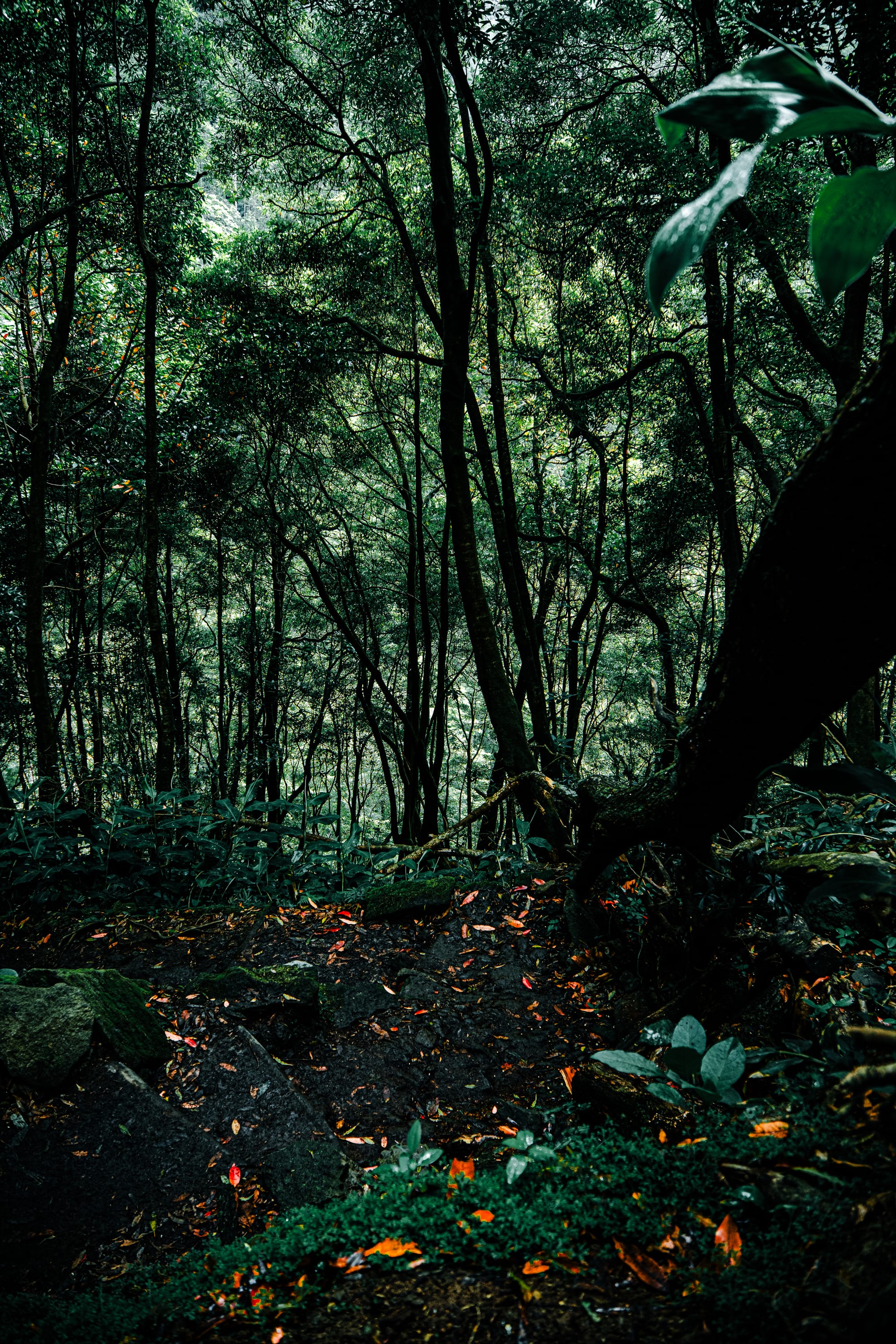
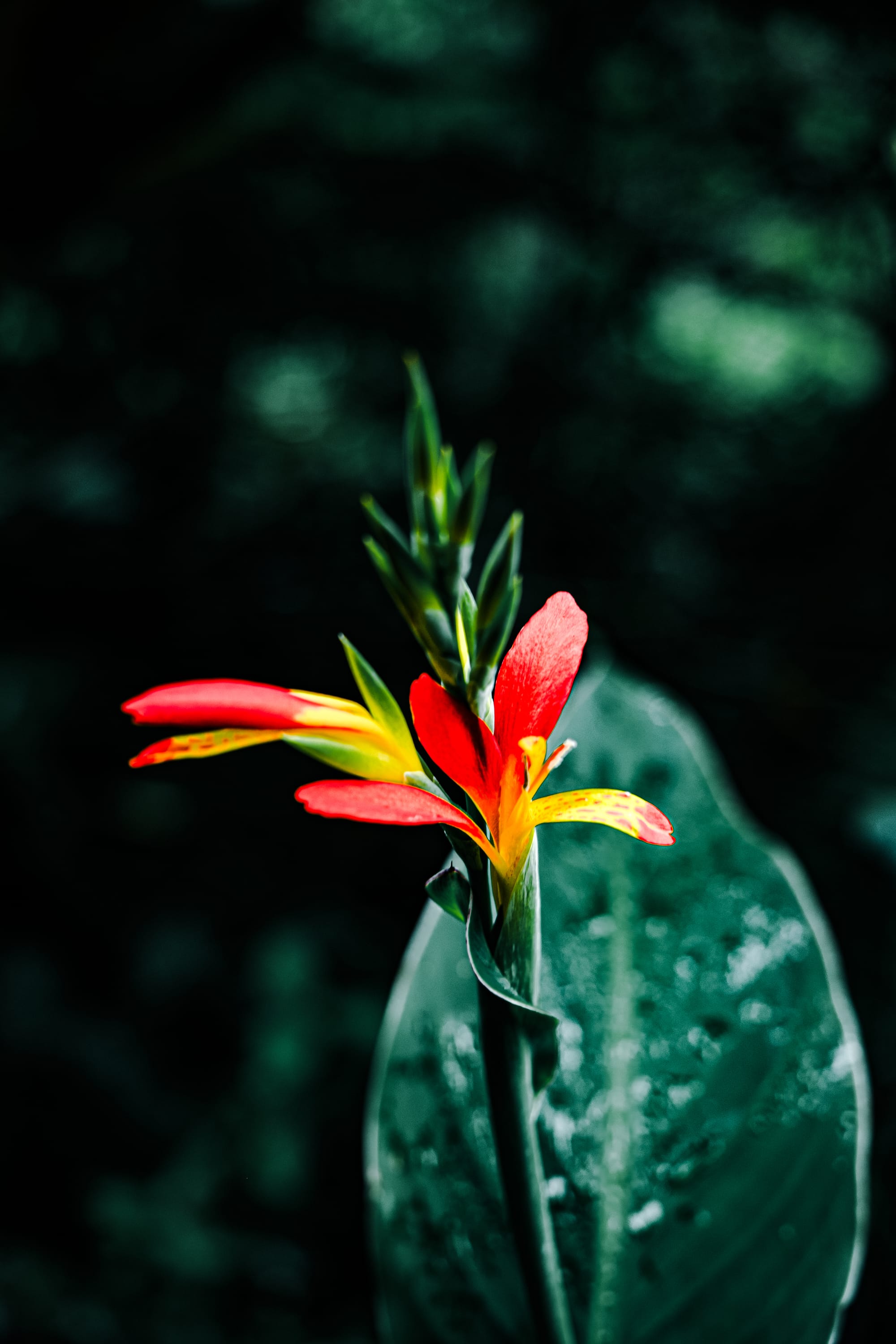
At the trail’s midpoint, you can opt to take the Salto do Prego route to see a waterfall plunge down into a fern-lined gorge, misting the air. This is less a hike and more an immersion—a place to slow your pace and notice the many greens of the island. It’s approachable, beautiful, and perfect for a half-day wander.
PR3–SMI / Sete Cidades trail from Vista do Rei
Lake views from high elevation.
The PR3–SMI trail is the island’s most iconic hike—and with good reason. Beginning at the famous Miradouro da Vista do Rei, the trail traces the volcanic rim with sweeping views over the blue and green twin lakes below. You’ll pass through wildflower meadows, descend through shady corridors of ginger lily and tree fern, and catch glimpses of the Atlantic between mossy volcanic walls.
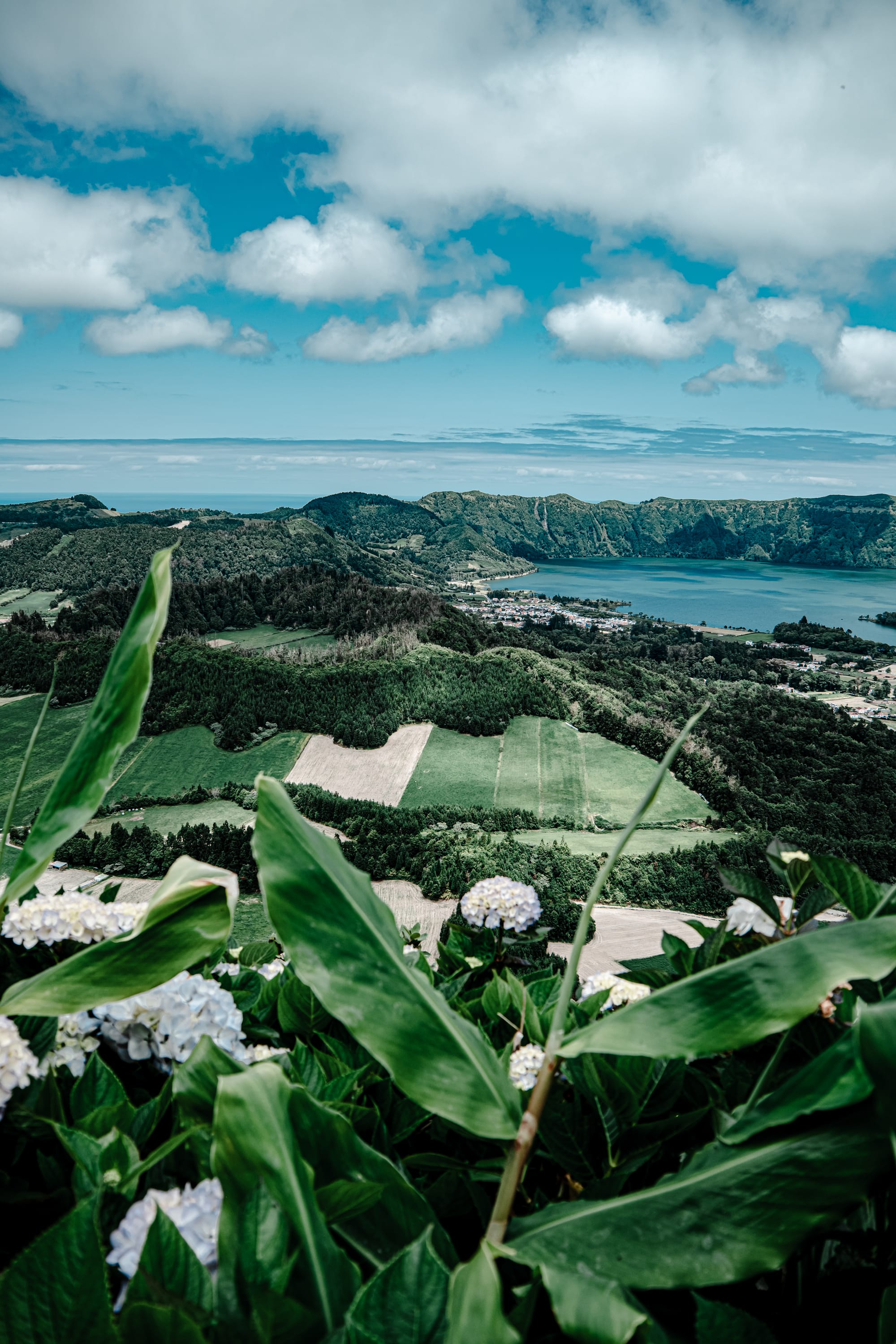
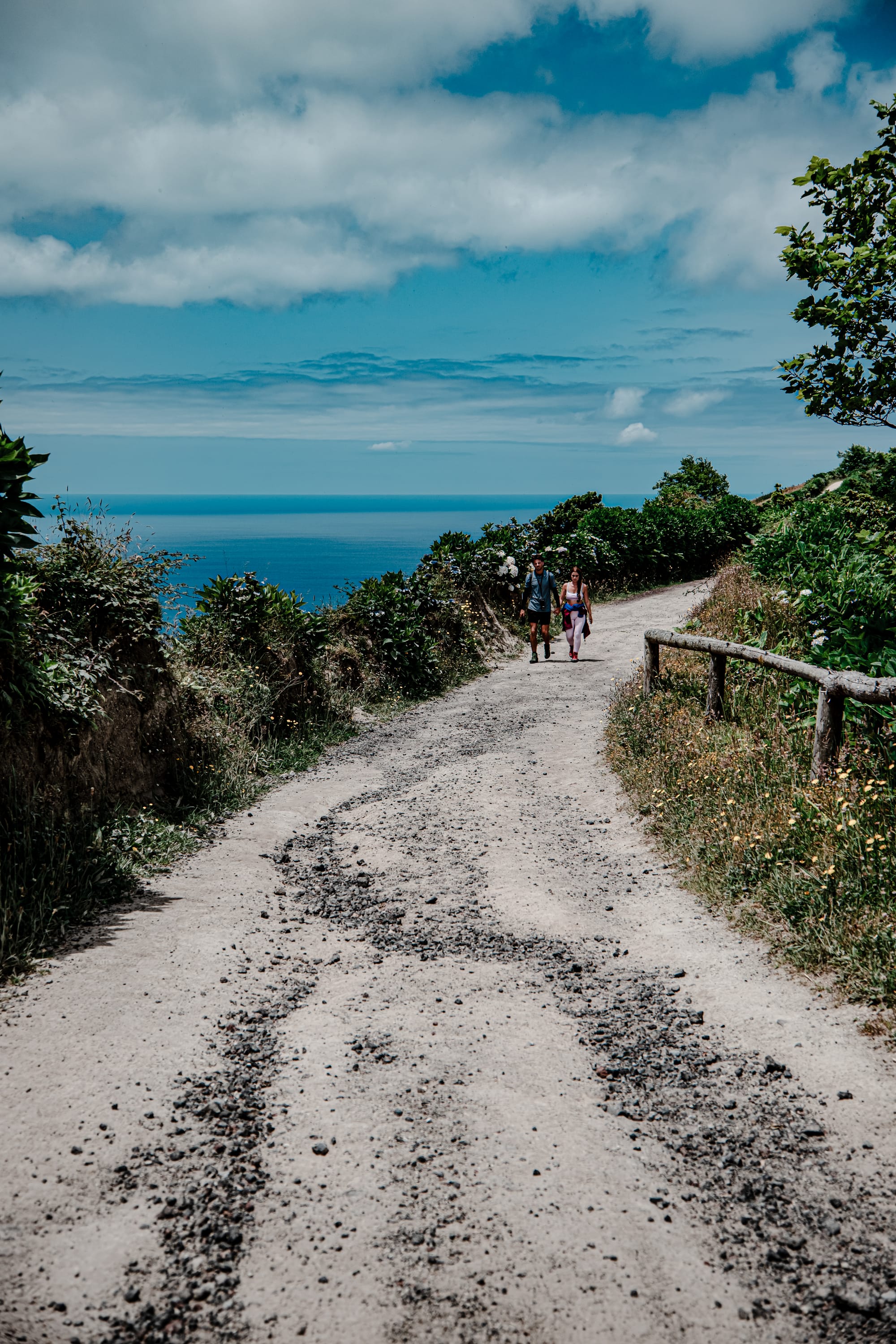
As the trail winds downward, the terrain shifts from panoramic to pastoral, eventually delivering you into the heart of Sete Cidades itself—a crater town fringed by still water and quiet air. It’s a trail that offers both drama and serenity.
Ocean activities
Whale and dolphin watching tour
Living your Moby Dick moment.
Few experiences on São Miguel feel as cinematic as heading out into the open Atlantic in search of whales and dolphins. These half-day boat tours—offered by trusted, eco-conscious operators—put you in proximity to sperm whales, bottlenose and common dolphins, Risso’s dolphins, and even occasional sea turtles. You’ll often spot seabirds circling above the action. While brochure photos may show whales breaching in full glory, what you’ll more likely see is subtle but powerful: a spout of mist, the arched back of a whale, a smooth dive beneath the waves.
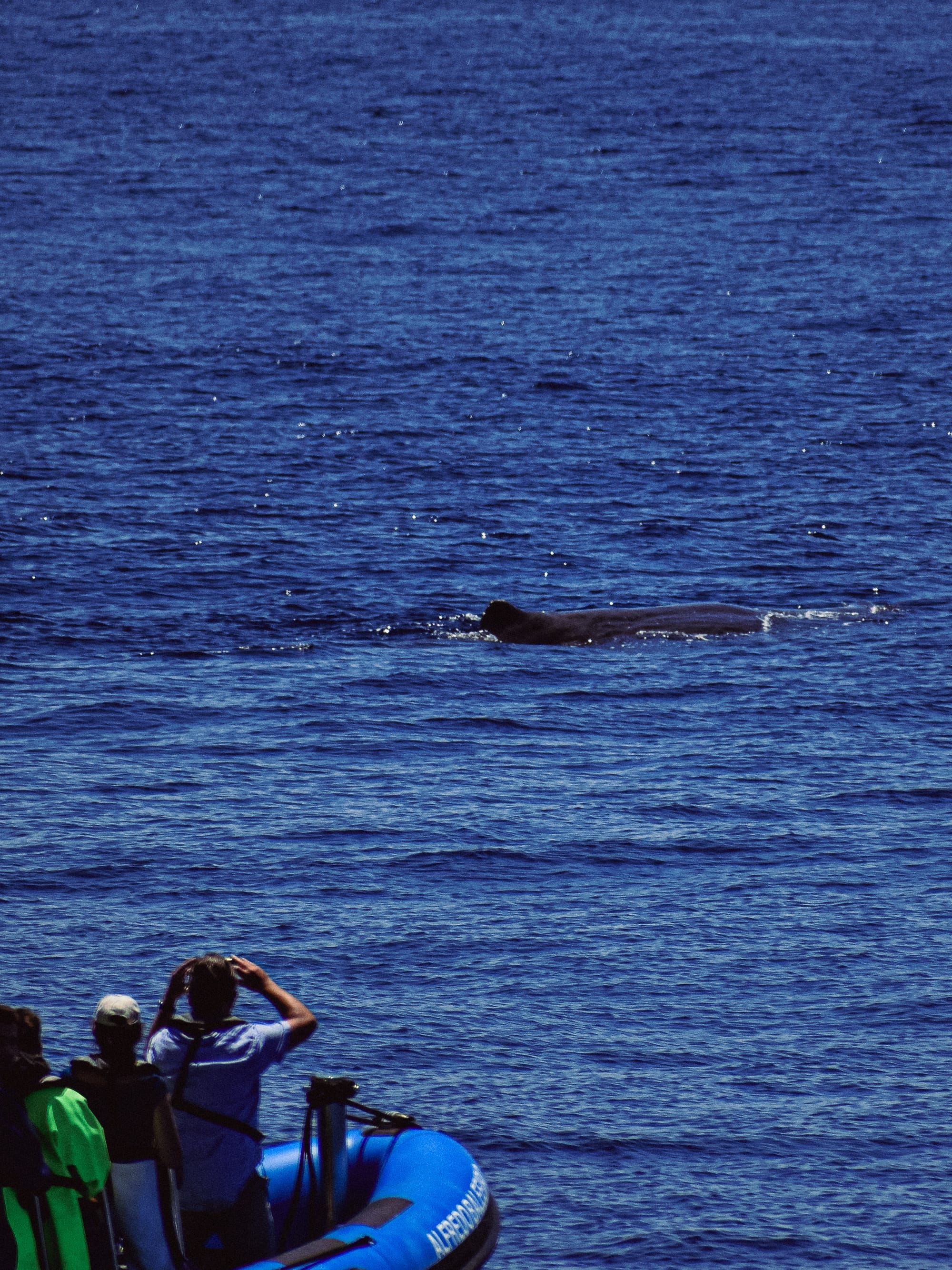
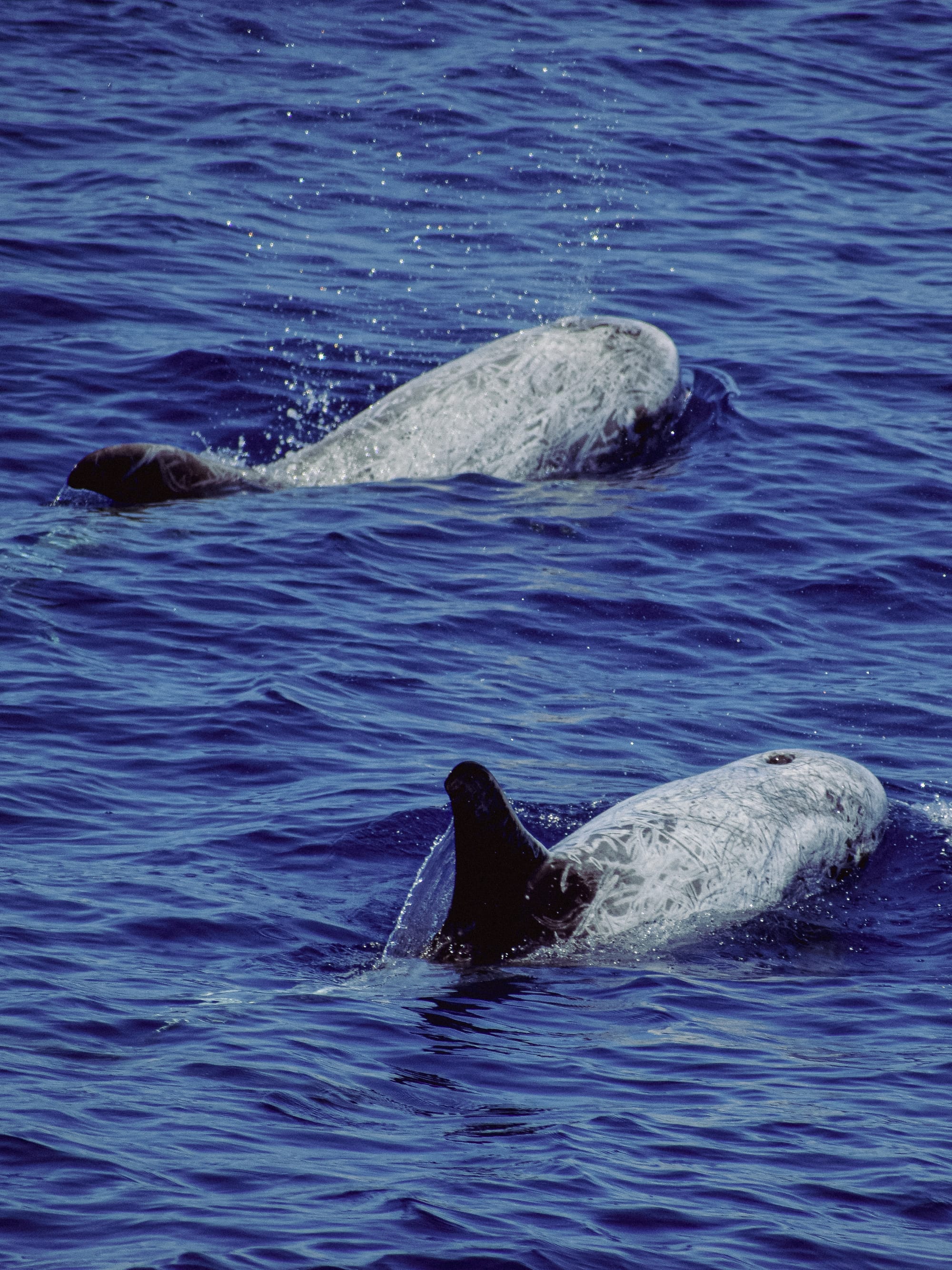
The dolphins, meanwhile, are often the show-stealers—curious, social, and at times playful near the boat. You can choose between a steadier catamaran (better for those prone to seasickness) or a Zodiac boat for a more agile, close-up experience. Tours operate under strict guidelines to ensure respectful wildlife viewing, and most companies will invite you back for free if you don’t see anything the first time.
Ilhéu de Vila Franca
Kayaking or snorkeling in a marine reserve.
Just off the coast of Vila Franca do Campo lies one of São Miguel’s most recognizable natural wonders: Ilhéu de Vila Franca, a collapsed volcanic crater turned tidal lagoon. From above, it looks like a ring of green floating in turquoise. Up close, it’s even more spectacular. The calm interior waters make this an ideal place to kayak or snorkel, especially for those curious about marine life. You’ll paddle past steep cliffs where seabirds nest, glide over volcanic rock formations, and peer into a clear, protected underwater world.
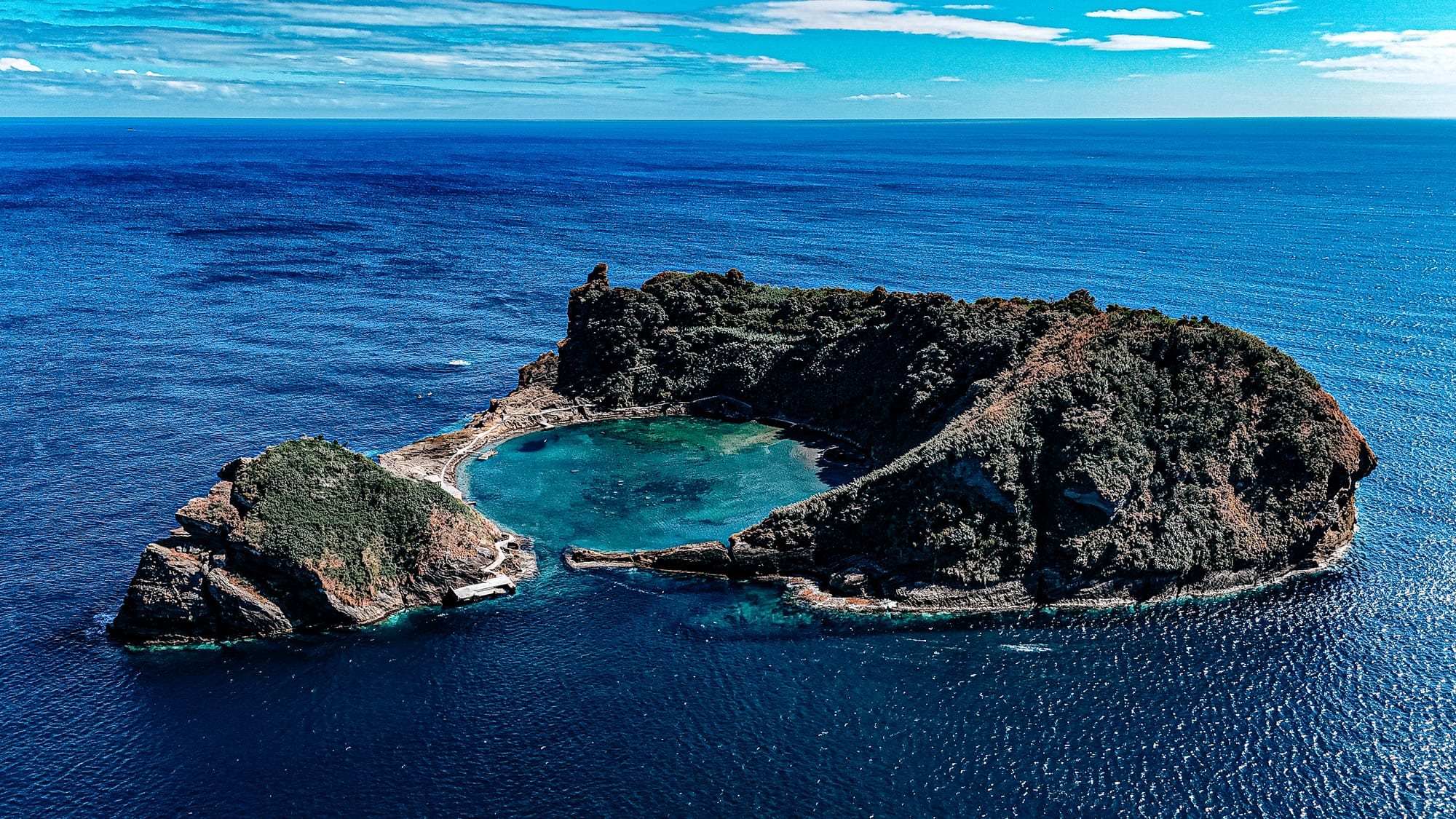
This is a seasonal experience—access is restricted in winter and tightly managed during peak months to preserve the ecosystem—but when it’s open, it’s unforgettable. Book early, bring water, and if you’re snorkeling, prepare to be surprised by how much life thrives within this circular sanctuary.
Ponta da Ferraria
Hot springs in the ocean.
Where else can you wade into the Atlantic and feel your legs suddenly warmed by geothermal energy? Ponta da Ferraria is a rugged cove on the western tip of São Miguel, where underwater volcanic vents mix with ocean waves to create a pocket of thermal bliss. Timing is everything here: arrive near low tide when the hot water isn’t diluted, and you’ll soak in what feels like a natural hot tub.
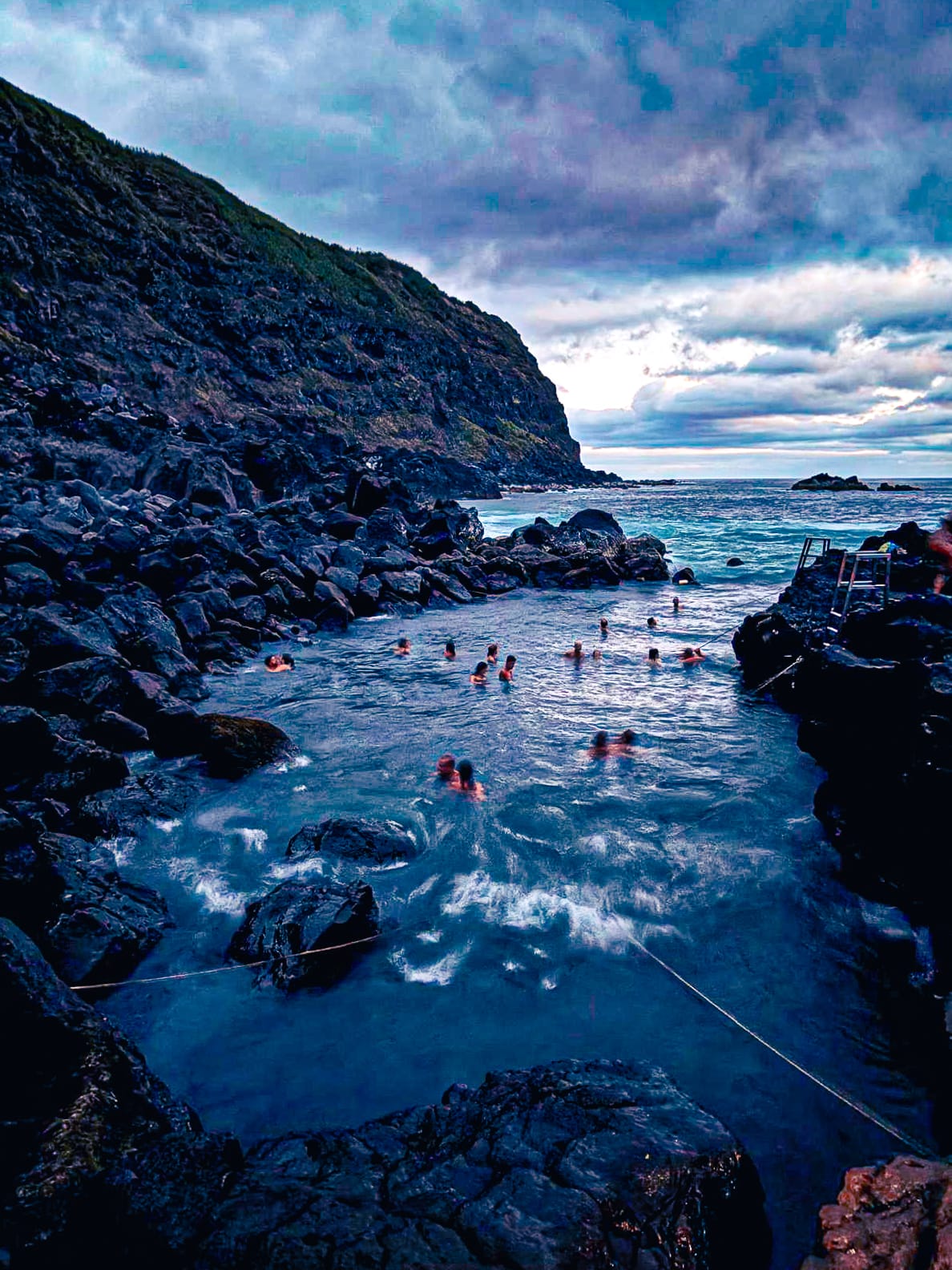
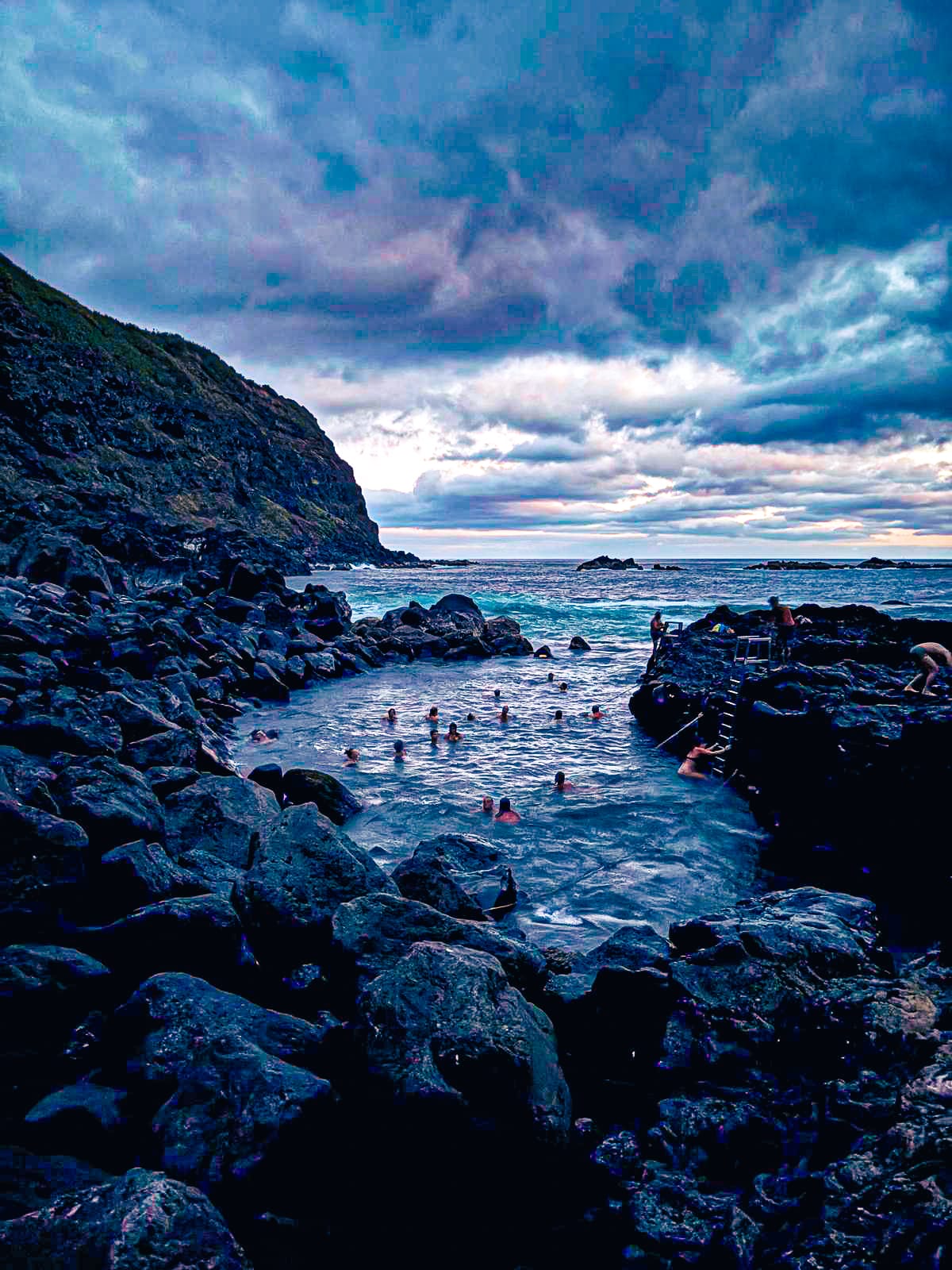
Arrive during high tide or on rough sea days, and the waves can make it a more dynamic (read: chilly or thrashing) experience. Ropes and lifeguards are often present to assist. There’s also a spa nearby if you’d rather soak in a tiled thermal pool. Either way, it’s a unique and surreal place to be—hot springs with horizon views, salt in the air, and basalt cliffs towering behind you.
Piscinas Naturais Caneiros
Cold ocean pools.
On the island’s northwest coast lies one of its calmest swimming spots: the natural ocean pools of Caneiros. Formed by volcanic rock and shielded from the open sea, these pools create a safe, wave-buffered place to float, wade, or stretch out under the sun. The lava formations give the space a sculptural beauty, and you’ll find locals sunbathing, kids exploring tide pools, and swimmers enjoying a break from the surf.
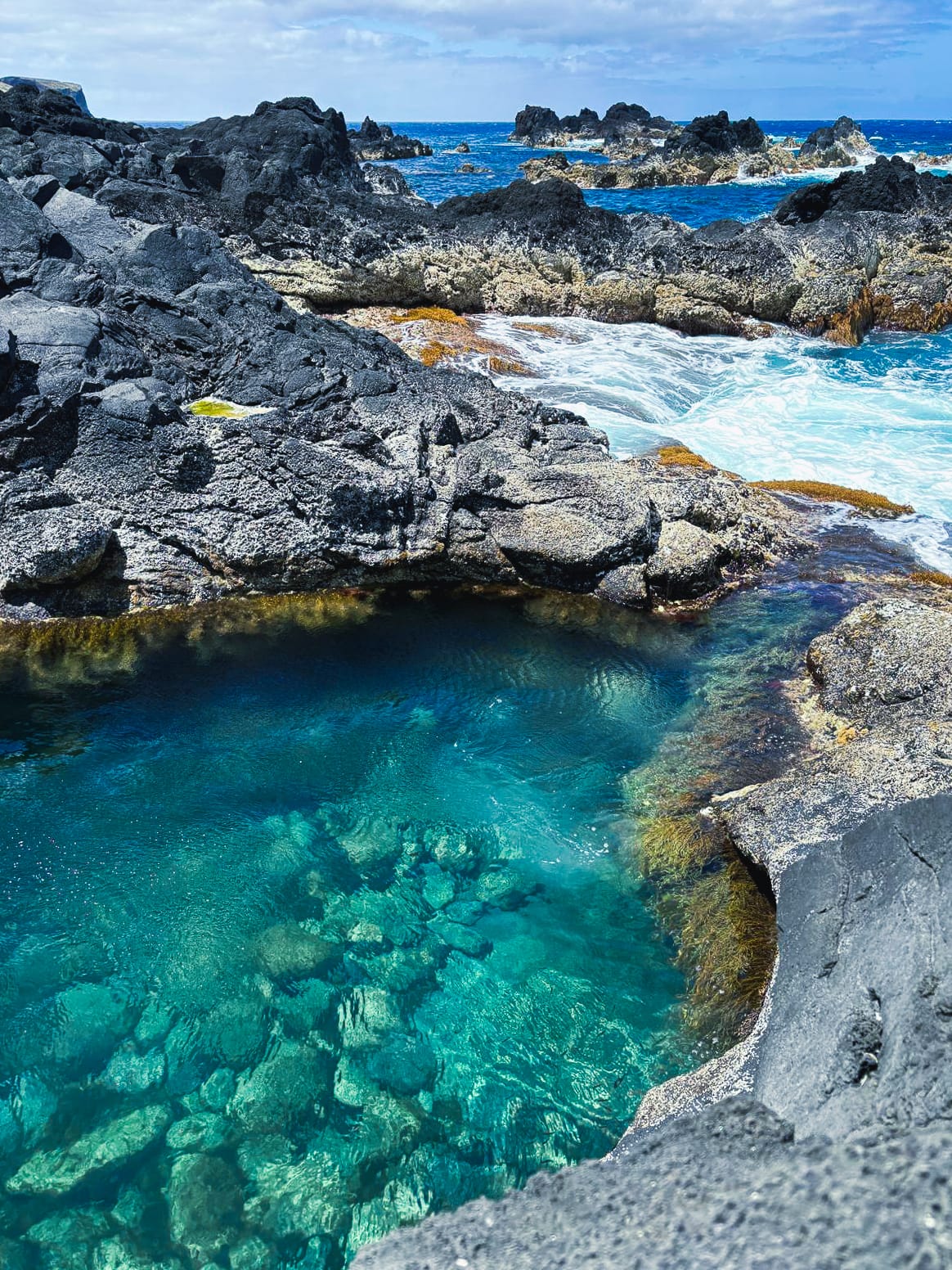
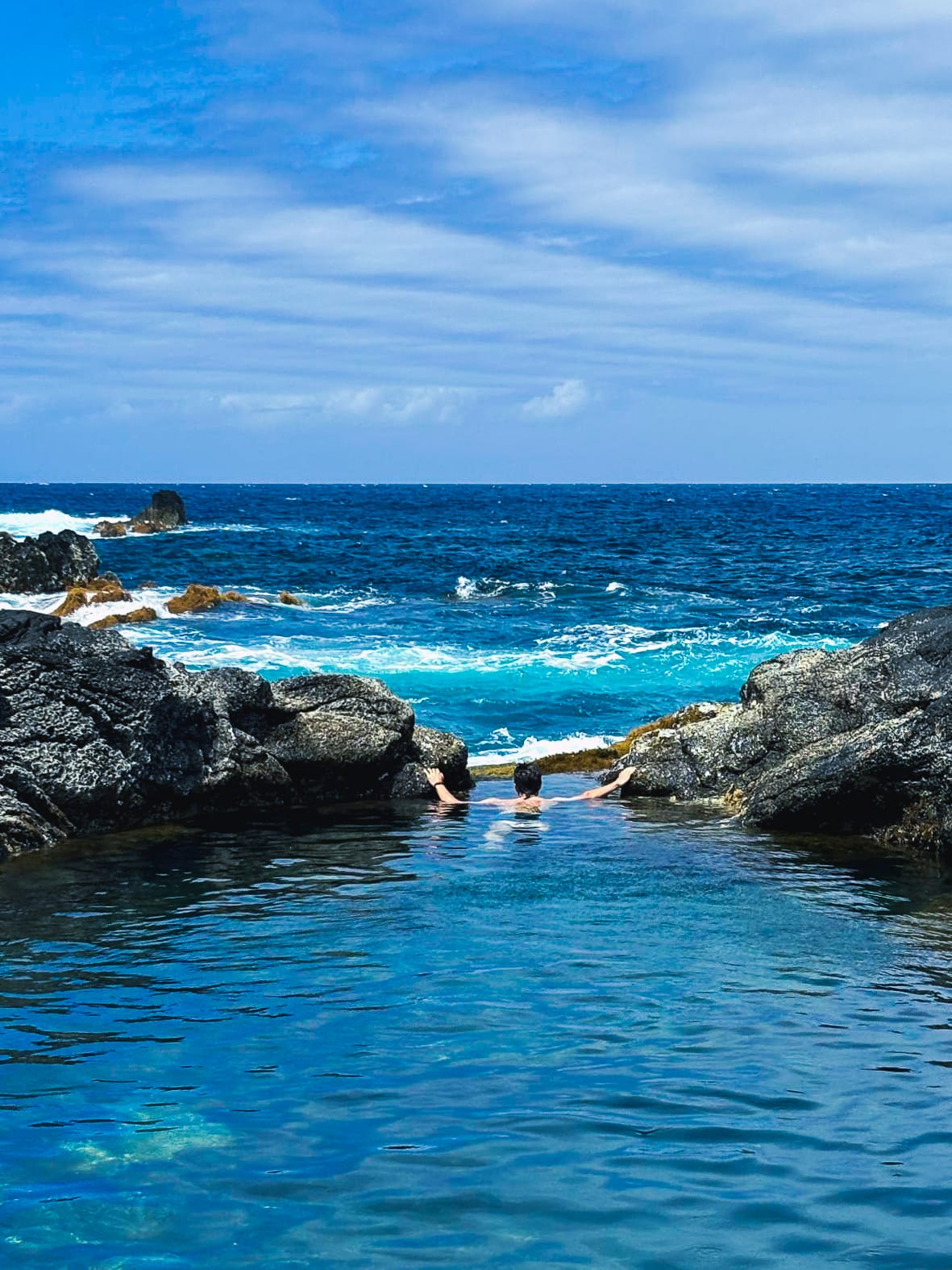
There are showers and basic facilities nearby, and it’s a perfect spot to combine with a sunset drive along the coast or a post-hike cool down. Bring a towel, reef-safe sunscreen, and don’t forget your camera—the textures here, from black basalt to cobalt water, are incredibly photogenic.
Uniquely Azorean activities
Plantação de Ananás dos Açores
A greenhouse-grown pineapple paradise.
Just outside Ponta Delgada lies one of São Miguel’s most unexpected offerings: Europe’s only active pineapple plantation. Here, Azorean pineapples grow slowly in long rows of greenhouses, cultivated using traditional methods that date back over a century. Unlike tropical varieties, these pineapples are small, intensely fragrant, and prized for their concentrated sweetness.
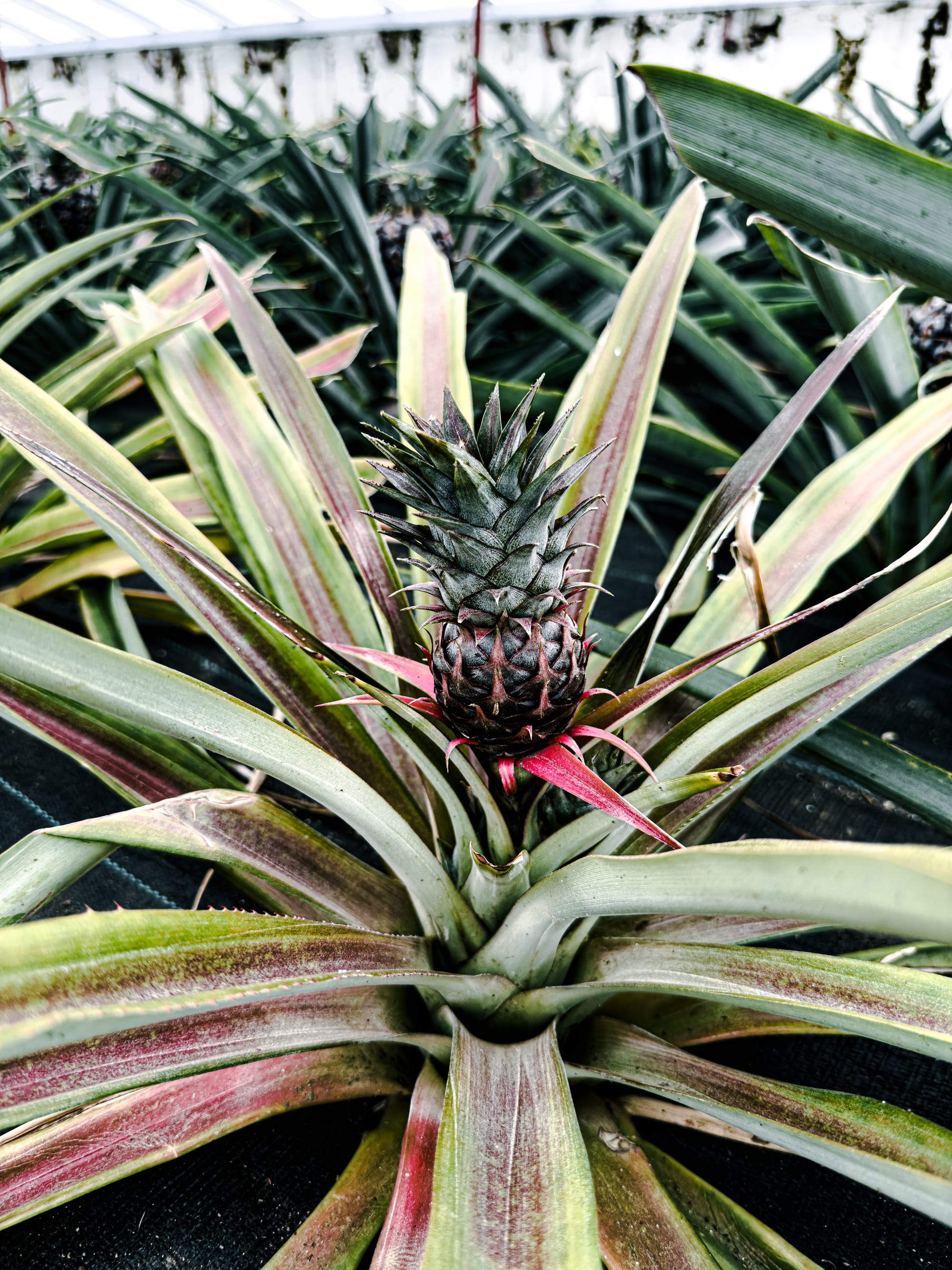
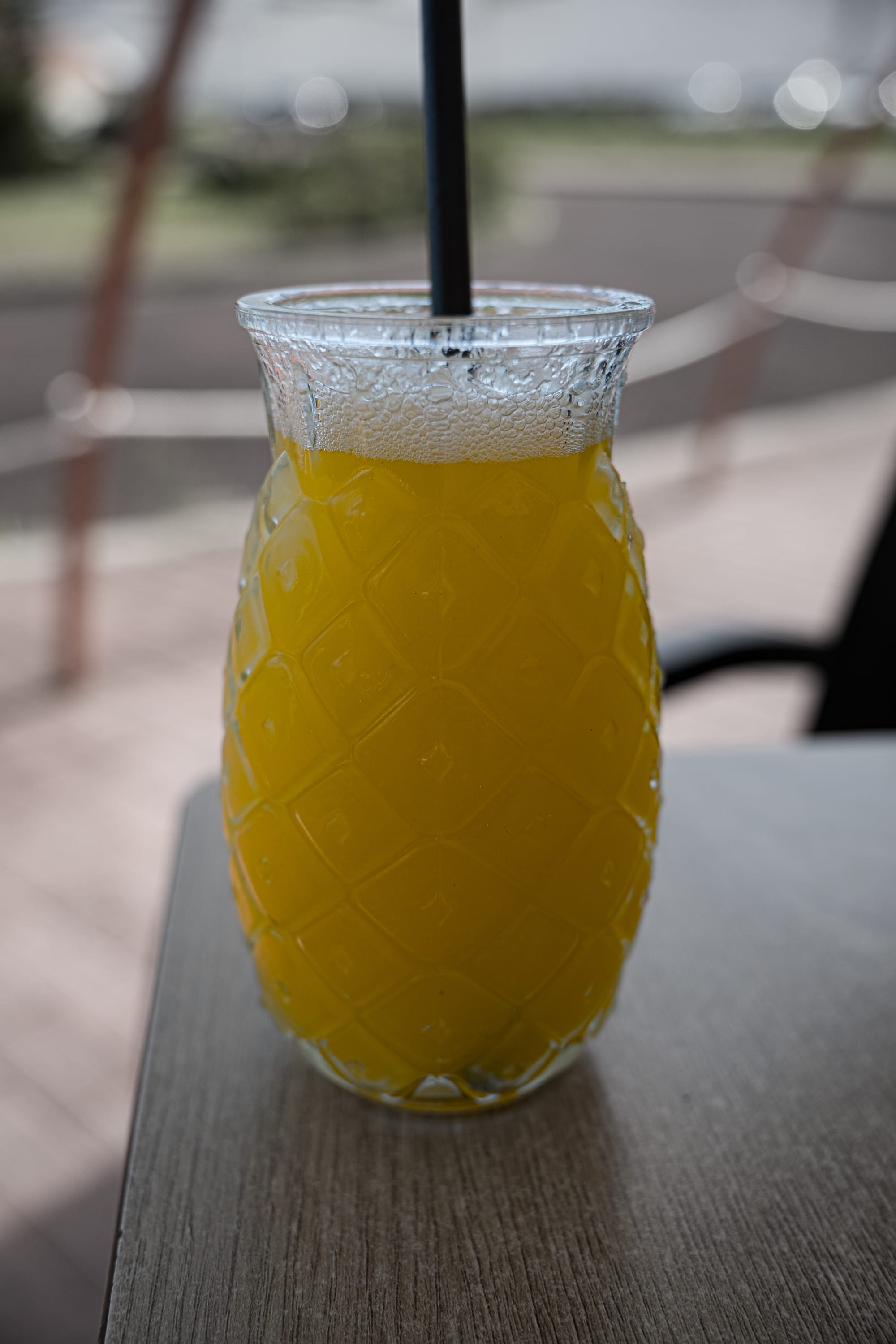
Visitors can wander between the steamy growing rooms, learn about the cultivation process, and browse a shop selling pineapple liqueurs, marmalade, and juice. Entry is free, making this a perfect short stop for those interested in agriculture, food history, or just something a little quirky and delicious.
Chá Correana
Europe’s last tea plantation.
Set along the north coast’s misty hills, Chá Gorreana has been producing green and black tea since 1883. Walking into the plantation feels like stepping into a living time capsule. You’ll find antique machinery still in use, a small museum, and rolling rows of Camellia sinensis stretching toward the sea. The air smells of earth and leaves.
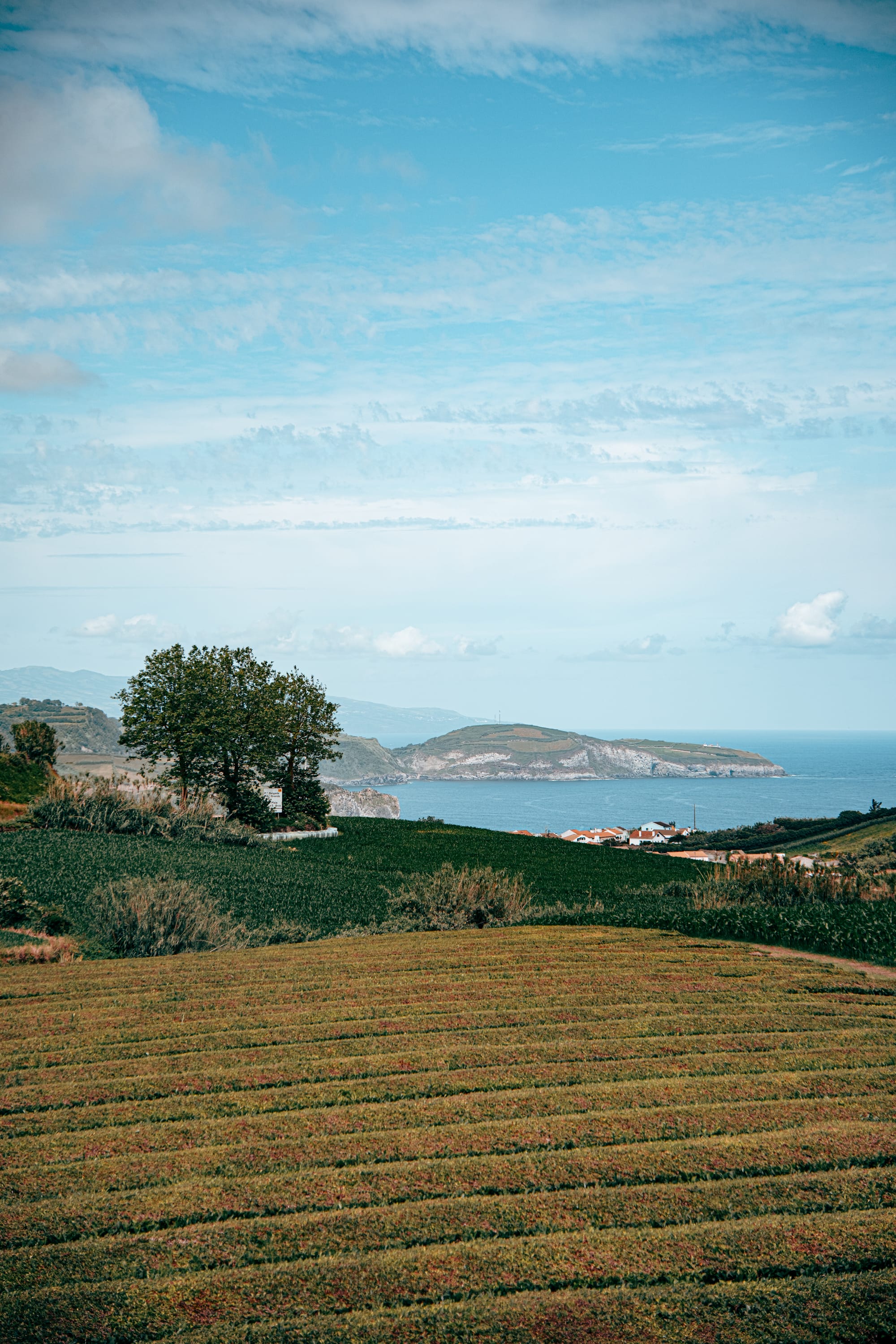
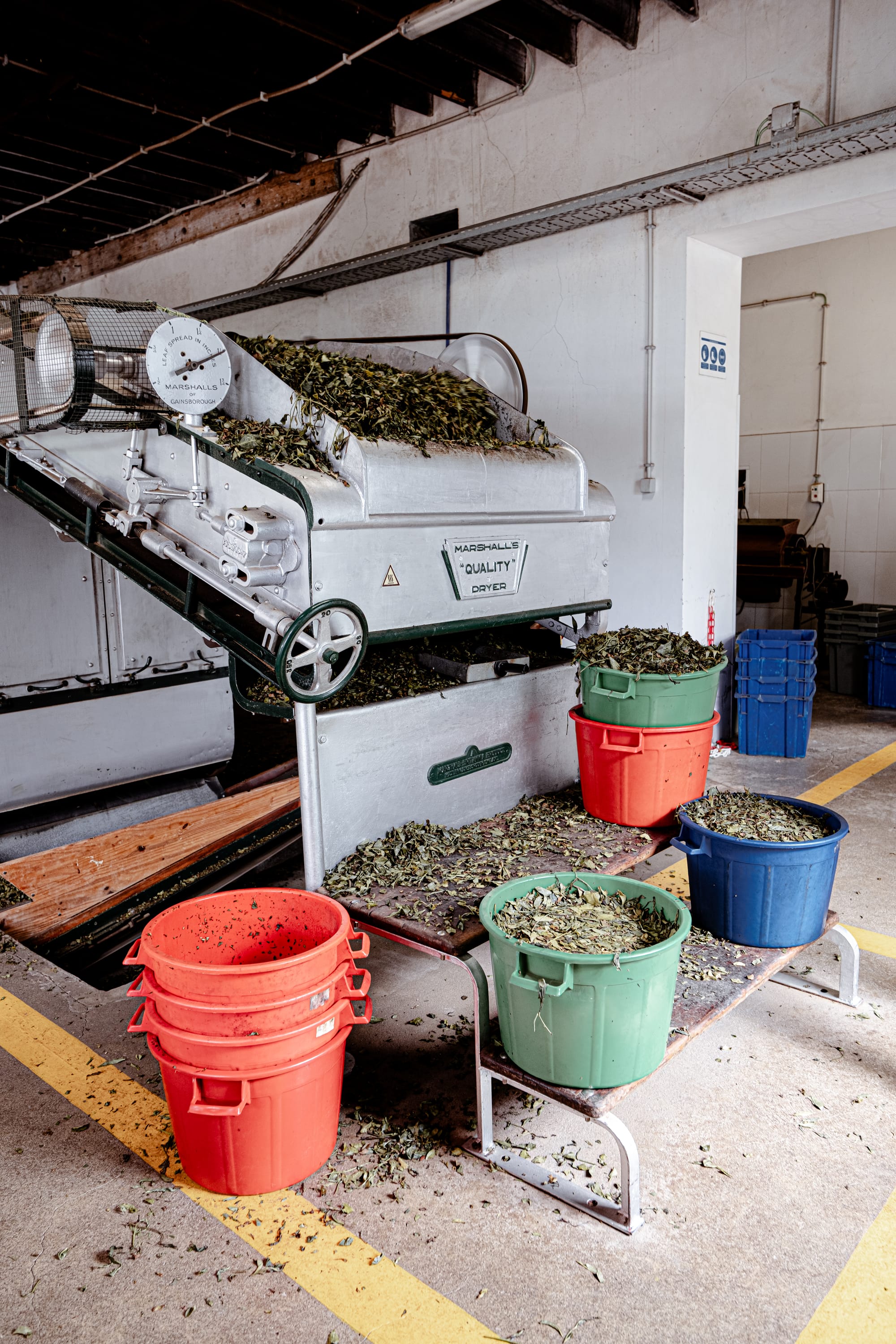
After a self-guided trail through the fields, you can enjoy a free tasting of the island’s signature blends—delicate, mineral-rich, and uniquely Azorean. For tea lovers, history buffs, or anyone craving a calm, leafy detour, Chá Gorreana is a must.
Ribeira dos Caldeirões
Waterfalls, mills, and forest calm.
One of the most accessible and atmospheric natural parks on São Miguel, Ribeira dos Caldeirões sits tucked along the northeast coast. Here, waterfalls cascade between moss-draped walls, 19th-century water mills stand watch over fern-lined trails, and picnic spots appear beneath towering trees.
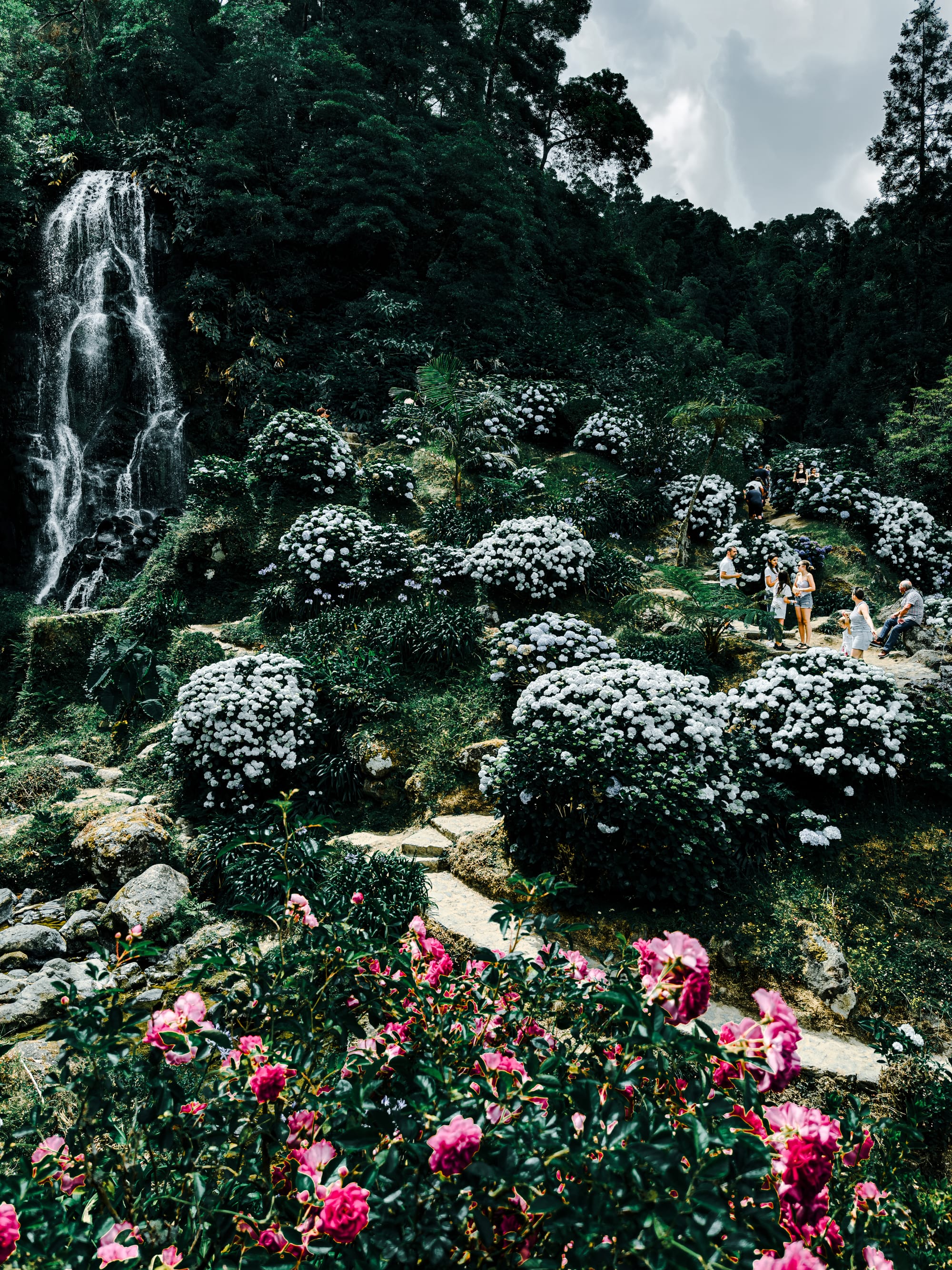
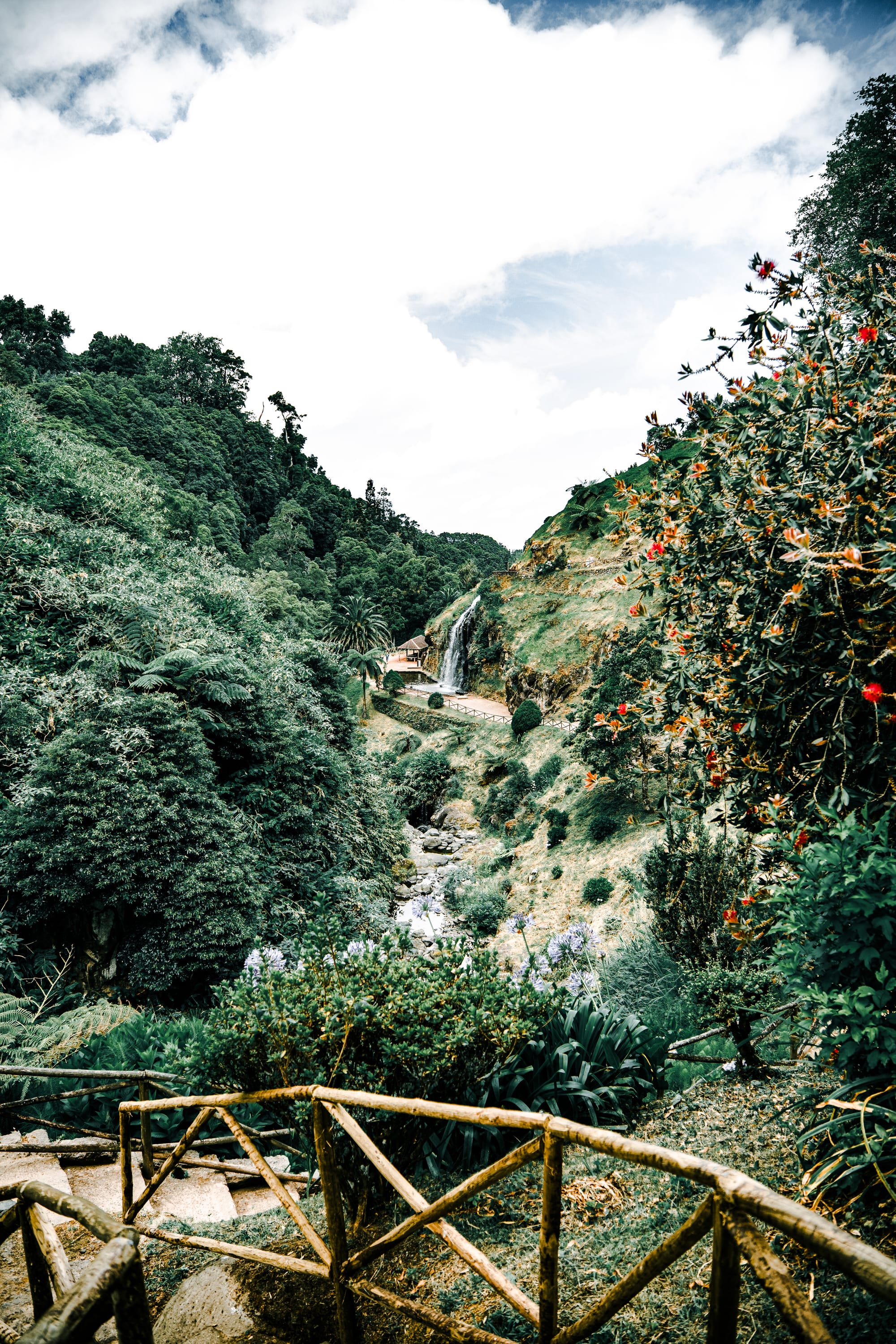
Unlike more rugged hikes, this park is easy to wander without much planning—ideal for a half-day trip. The soundscape alone—a mix of running water and birdsong—feels therapeutic. Don’t miss the chance to explore some of the old mill interiors, which now house local craft shops.
Miradouros
The island’s best views.
São Miguel may have more scenic viewpoints per capita than almost anywhere else. Known locally as miradouros, these lookouts range from lush garden terraces to roadside curves where the world suddenly opens up.
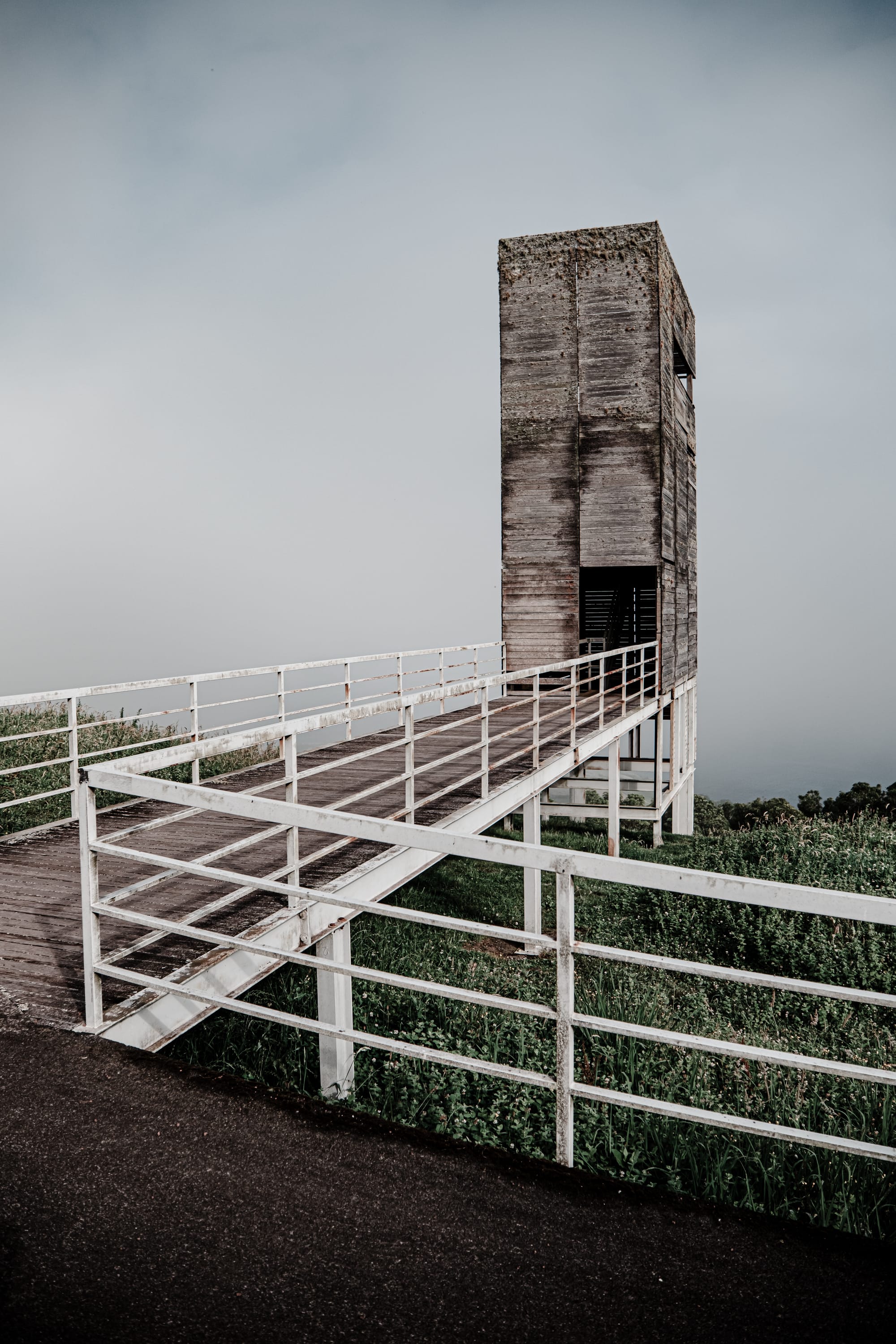
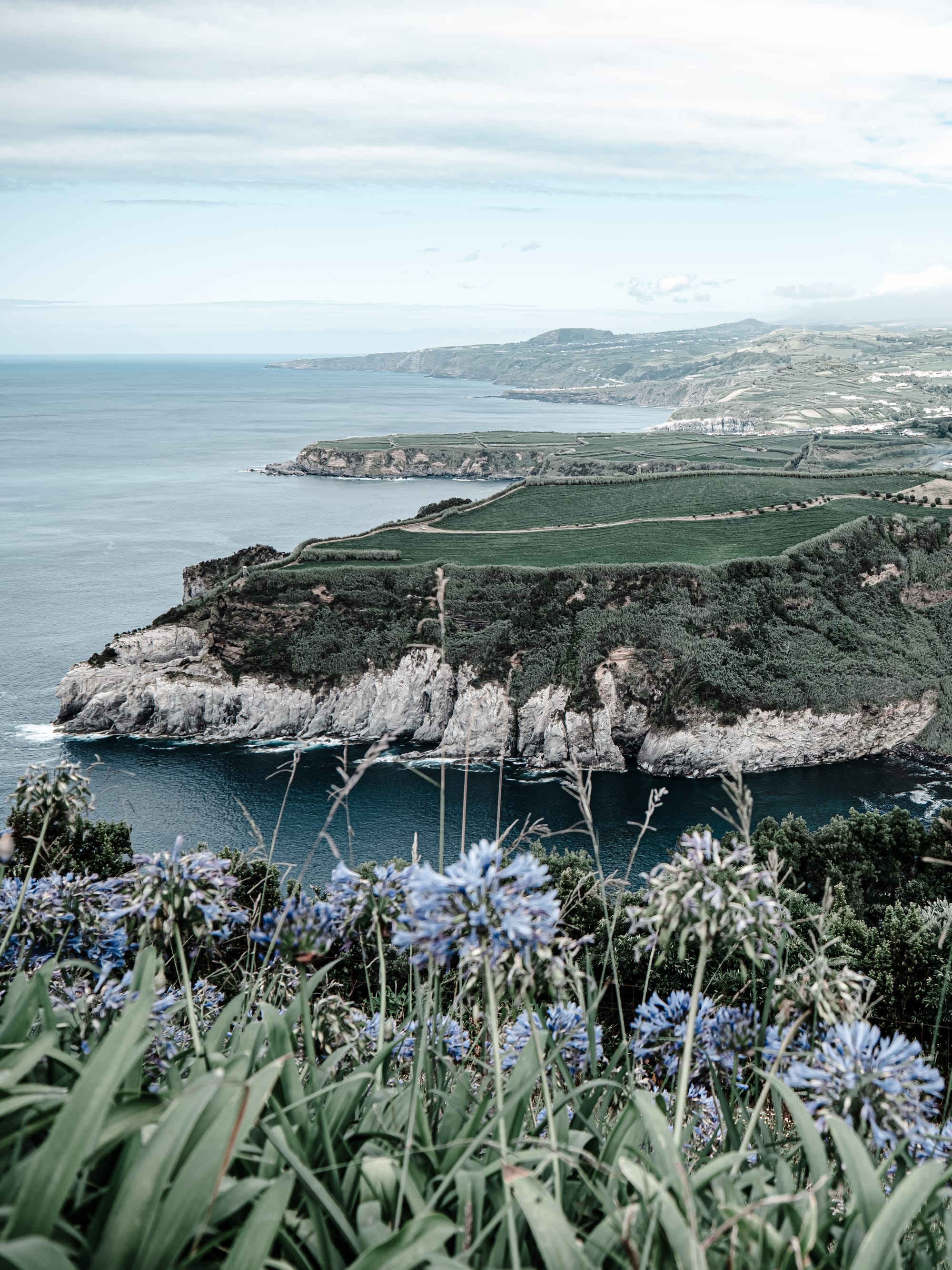
Among our favorites: Miradouro do Pico dos Bodes, with its brutalist structure; Miradouro da Ponta do Sossego, a manicured cliffside garden with hydrangea-lined paths; and Miradouro de Santa Iria, a serene grassy slope ideal for cloud-watching and picnics. Many aren’t signposted—just pull over when beauty demands it.
Monte Palace Hotel
Abandoned grandeur over Sete Cidades.
Perched above the iconic Vista do Rei, the Monte Palace Hotel is one of São Miguel’s most surreal experiences. Once a luxury hotel promising unmatched crater lake views, it now stands in ruins—an overgrown shell with five floors of murals, graffiti, and slow decay. Yet, stepping inside doesn’t feel dangerous or grim. It feels meditative. Sunlight filters through broken windows, wind whistles through empty halls, and each room frames a different portal to the twin lakes below.
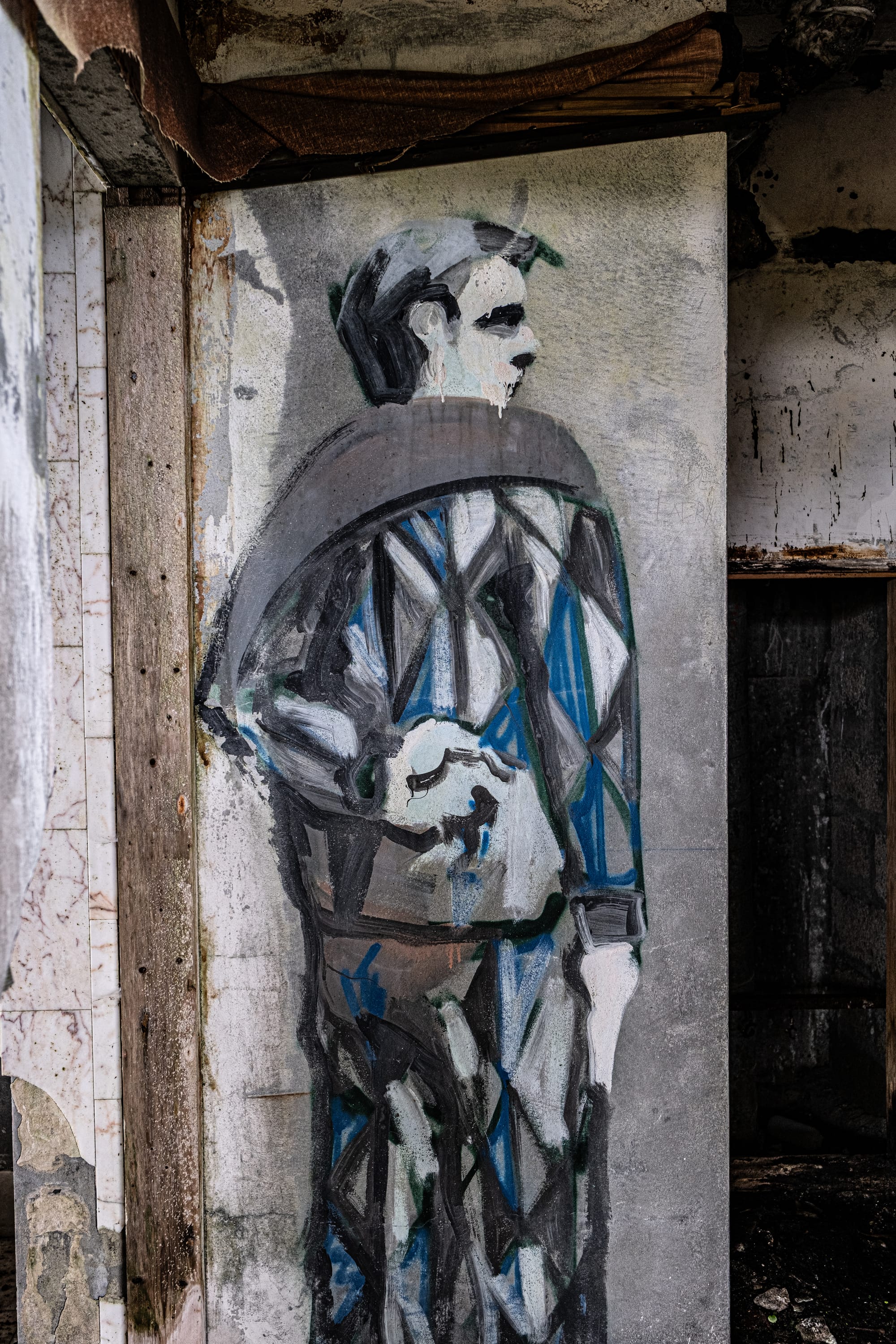
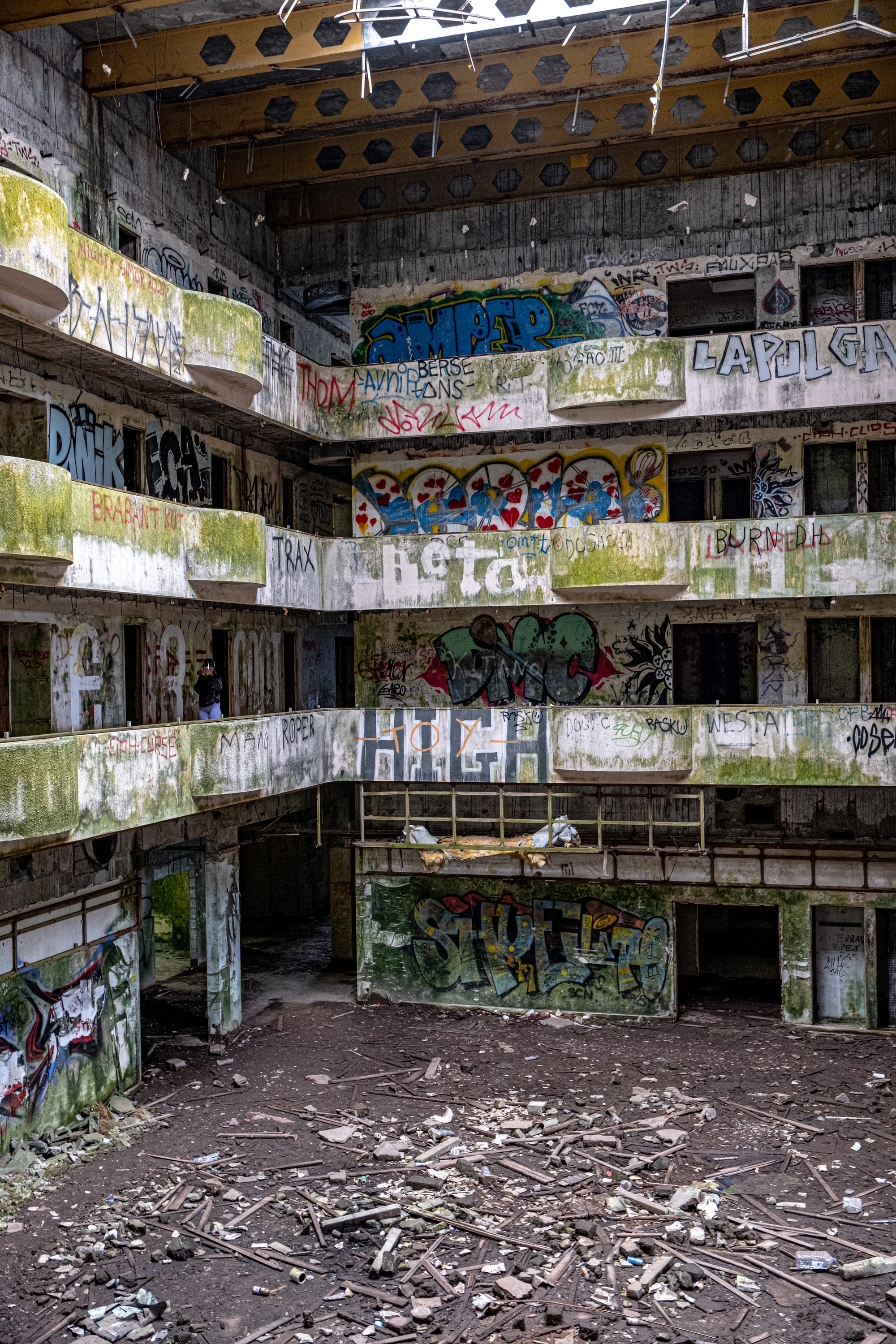
Some murals are detailed and strange, others abstract and expressive, creating an open-air gallery layered atop architectural collapse. It’s a photographer’s dream, an urban explorer’s playground, and a surprisingly peaceful place to reflect on beauty, failure, and time.
Santuário de Nossa Senhora da Paz
A whitewashed sanctuary above the sea.
Rising above the town of Vila Franca do Campo, the Sanctuary of Nossa Senhora da Paz is one of the most visually striking churches on the island. The ascent begins at the foot of a sweeping staircase, flanked by hand-painted azulejos that depict scenes from the rosary. Each step feels symbolic—like climbing toward stillness.
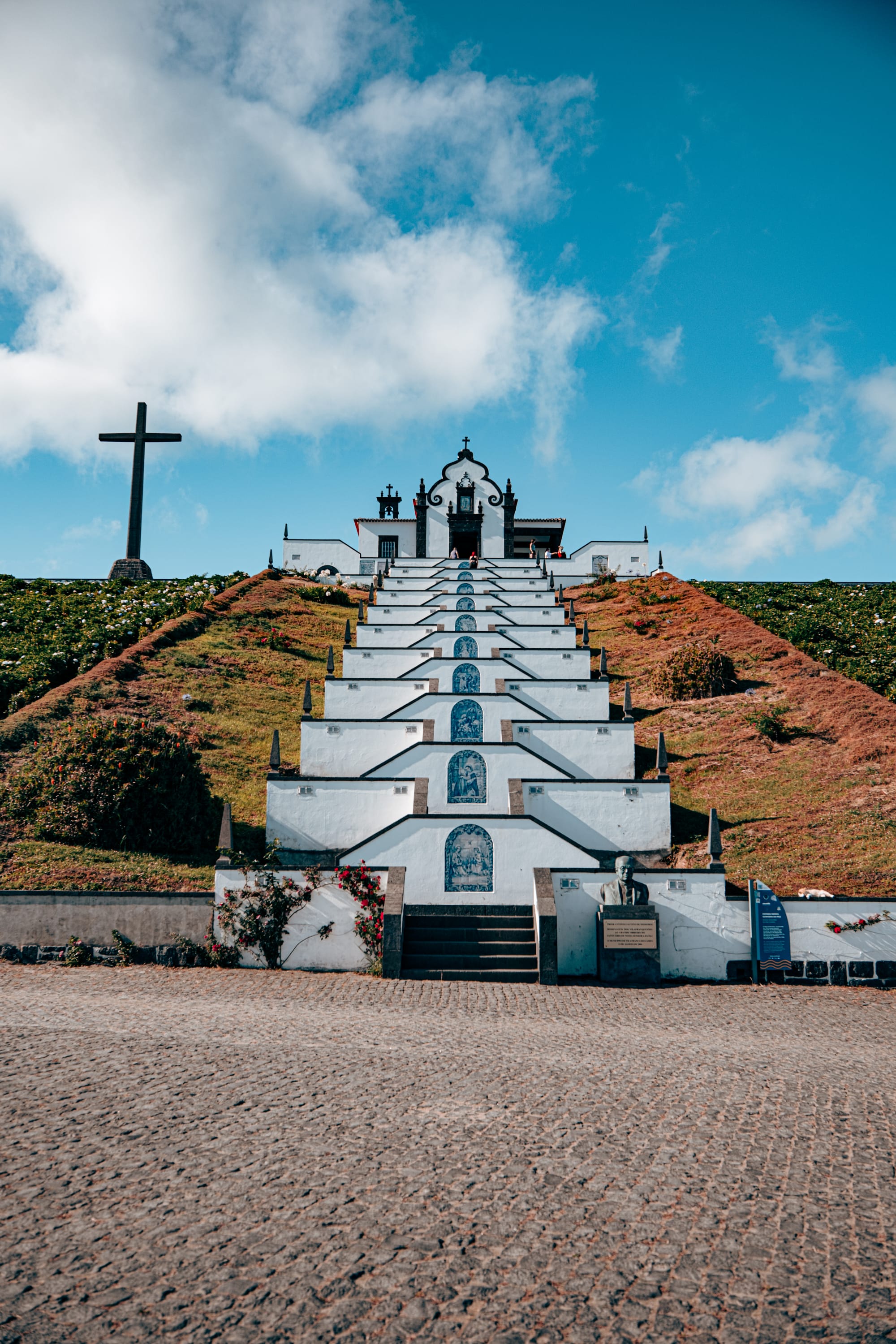
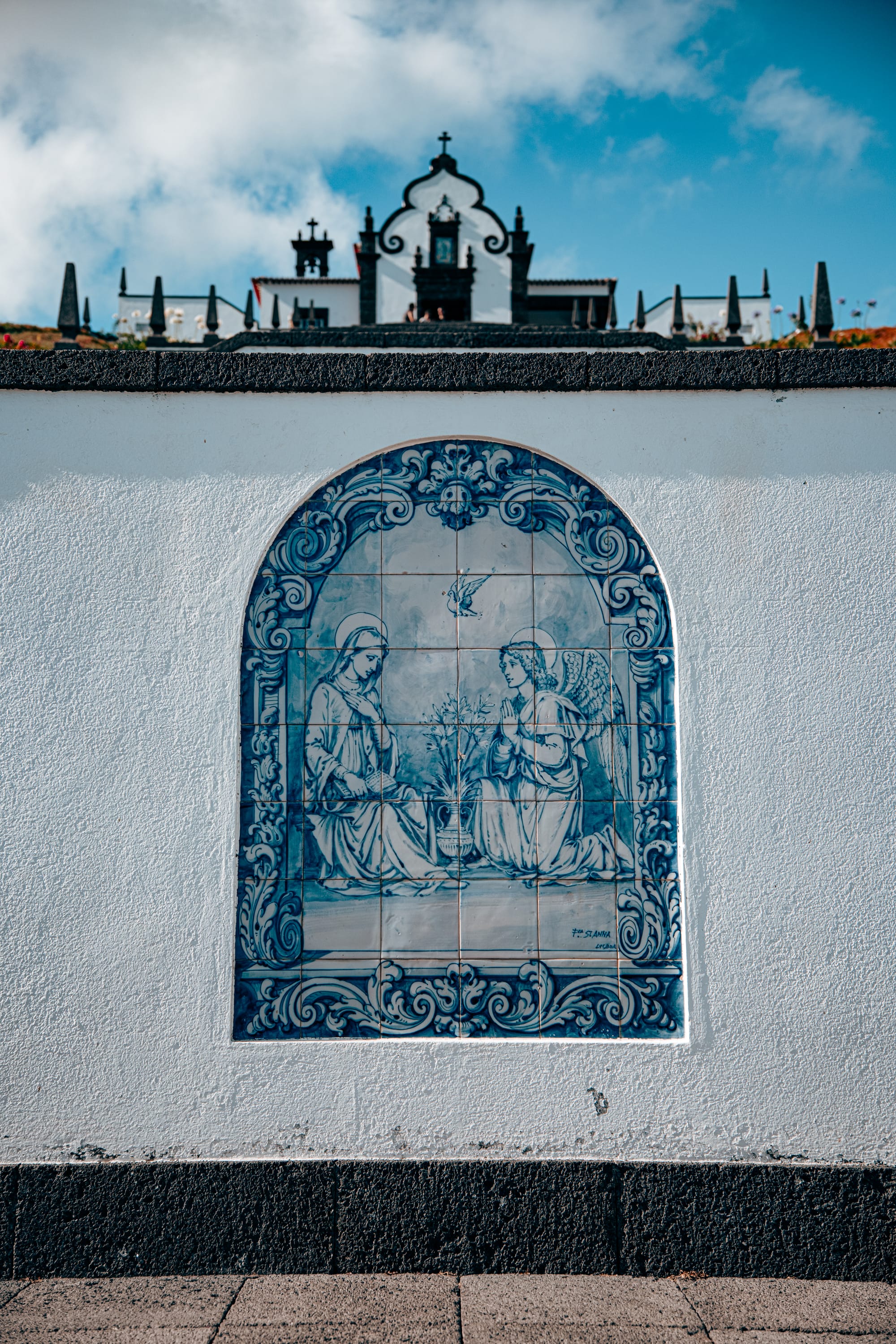
The church itself is serene and simple, but the view from the top is what truly stuns: you’ll see the coastline unfold below, with the Ilhéu de Vila Franca do Campo floating offshore. Whether you’re religious or not, this is a space that invites quiet, reverence, and wide-angle perspective.
Aqueducts
Volcanic relics in plain sight.
São Miguel’s old aqueducts, remnants of an ingenious water transport system, are scattered like forgotten monuments across the island. Built to channel volcanic and rainwater to towns and agricultural areas, these stone structures now blend into the landscape, often covered in moss or rising unexpectedly beside roads and trails. Some are intact enough to walk across or beneath, offering quiet moments of connection to the island’s engineering past.
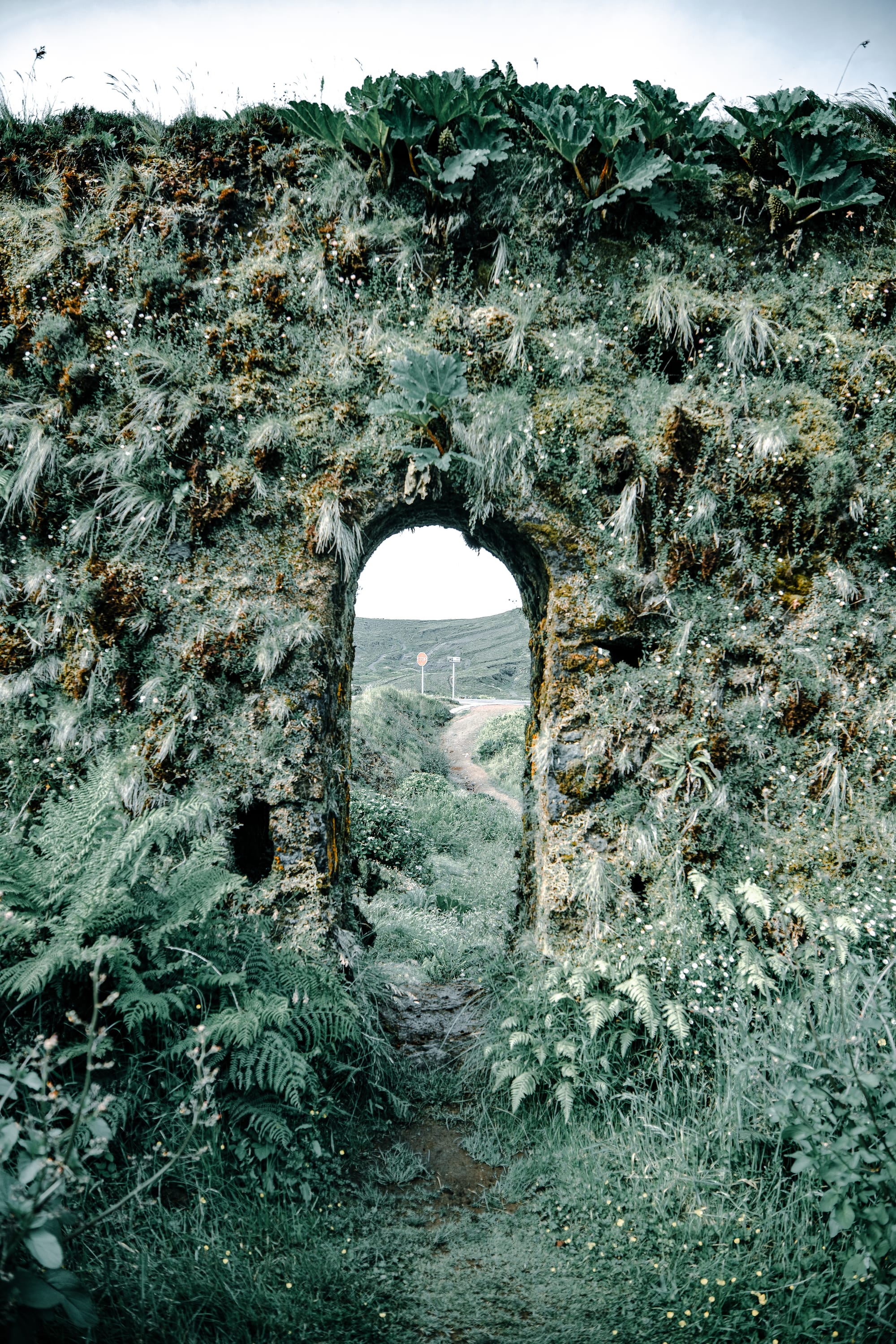
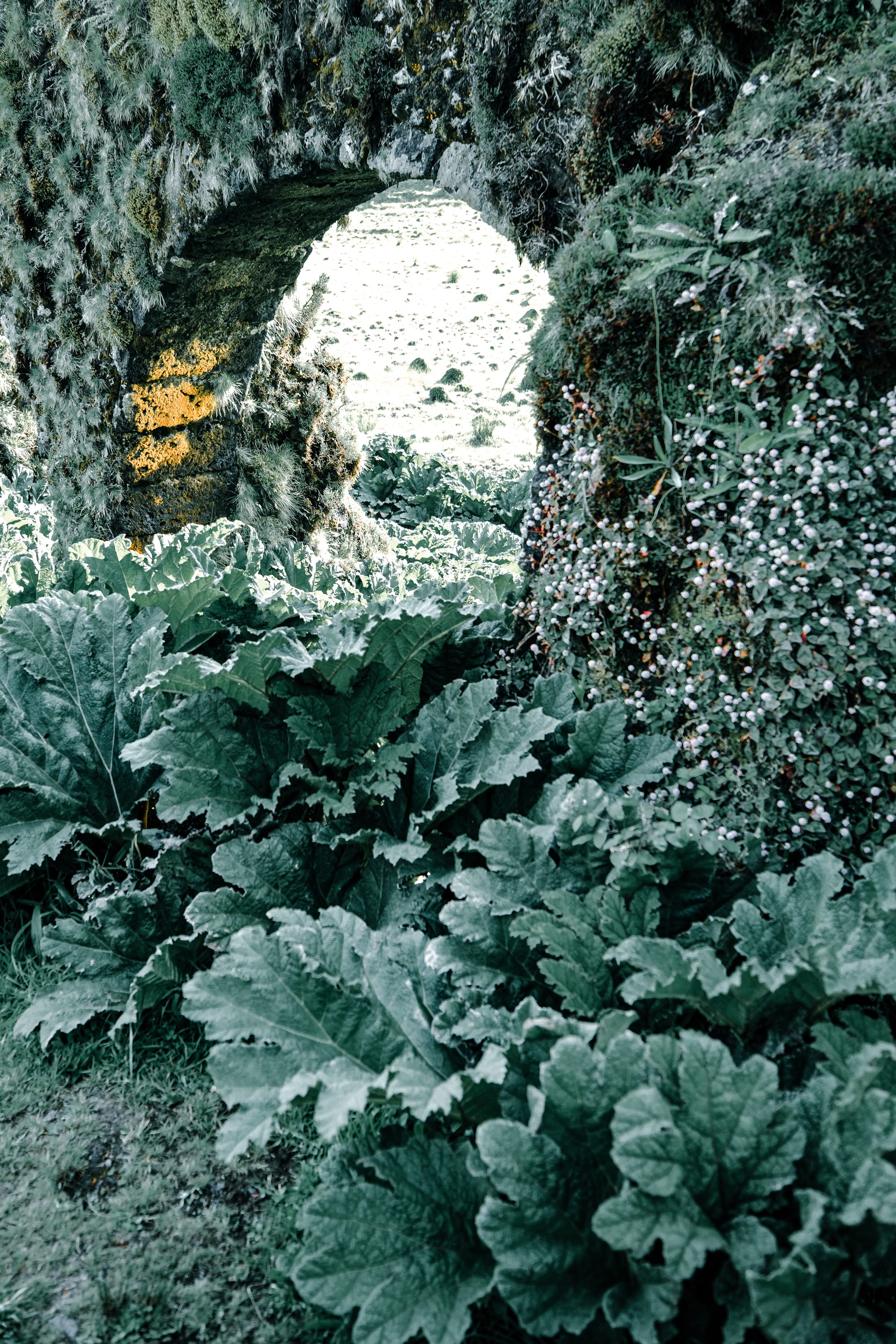
You’ll find especially striking segments in the Sete Cidades region and near Ribeira Grande—perfect for contemplative detours and dramatic photo ops.
Mercado Agrícola de Santana
Local abundance, community pulse.
Every Thursday and Saturday morning, the Santana farmers market bursts into color. Stalls overflow with Azorean produce: taro, passionfruit, bananas, ginger root, greens, and herbs you’ve never tasted. It’s a sensory experience—the scent of earth and citrus, the chatter of vendors, the rhythm of local life.
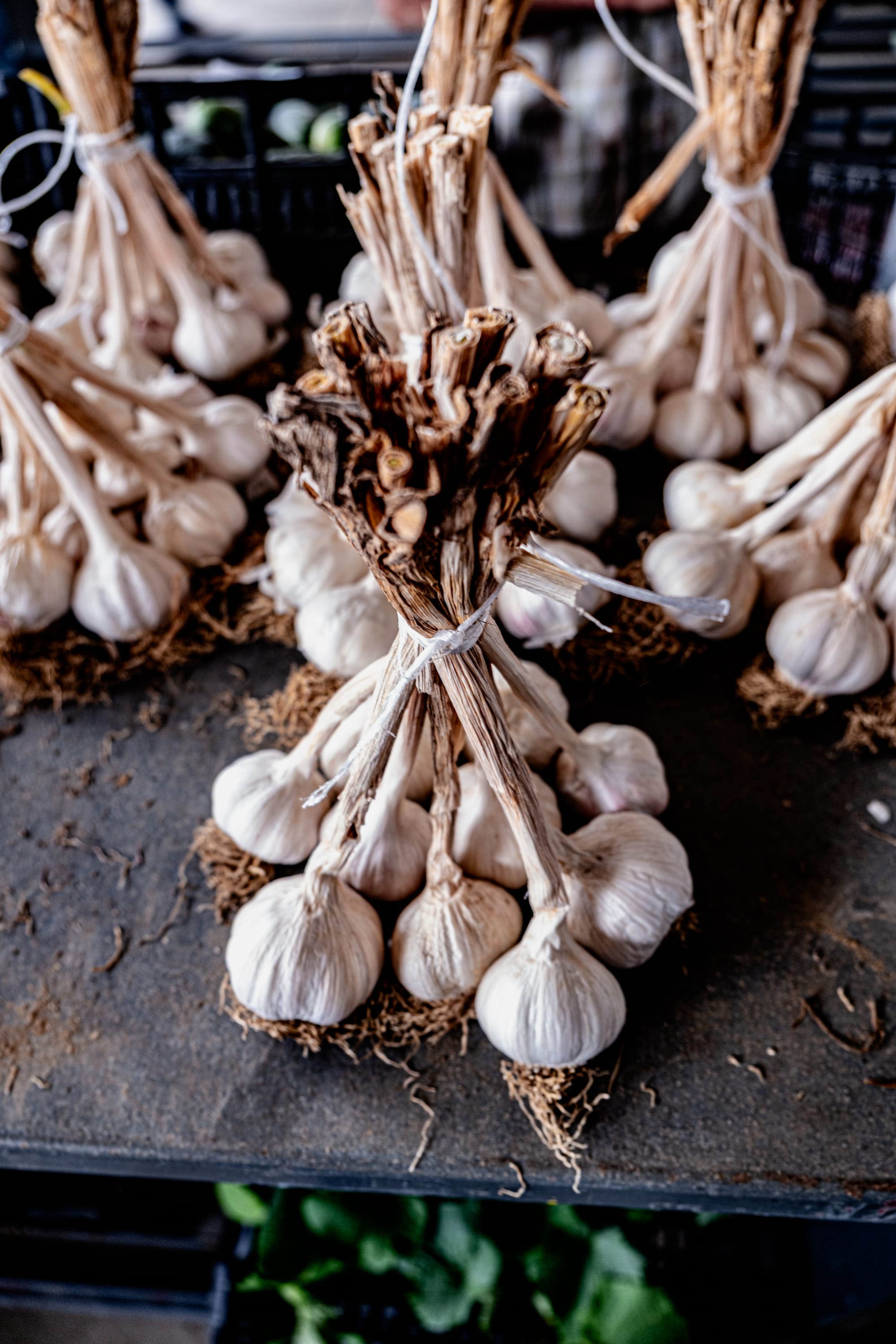
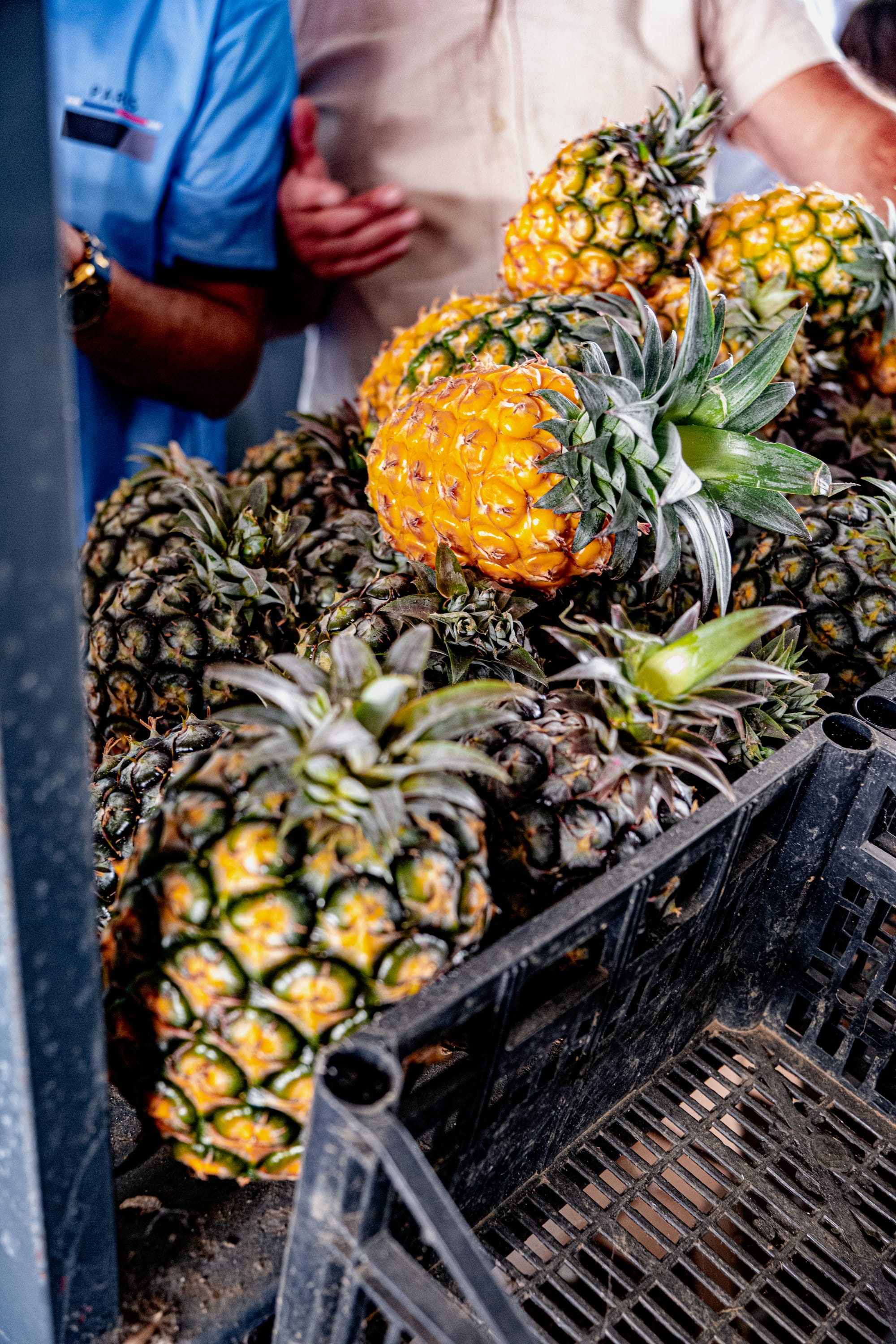
For nomads staying nearby (especially at Lava Coliving), it’s also a social anchor. Come for fresh food, stay for the chance encounters and occasional events like yoga, art nights, or cooking sessions. It’s not just a market—it’s part of the weekly rhythm of the north.
Towns and cultural spots
Furnas
Thermal soul of the island.
Nestled in the lush interior, Furnas is the island’s geothermal heart—a valley of rising steam, mineral-rich pools, and tropical vegetation. It’s where locals slow-cook cozido stew underground and where travelers soak their bones in 39ºC springwater. Beyond Poça da Dona Beija, Furnas invites wandering: cobblestone lanes lined with volcanic rock, fragrant garden paths, and sulfur vents bubbling beside footbridges.
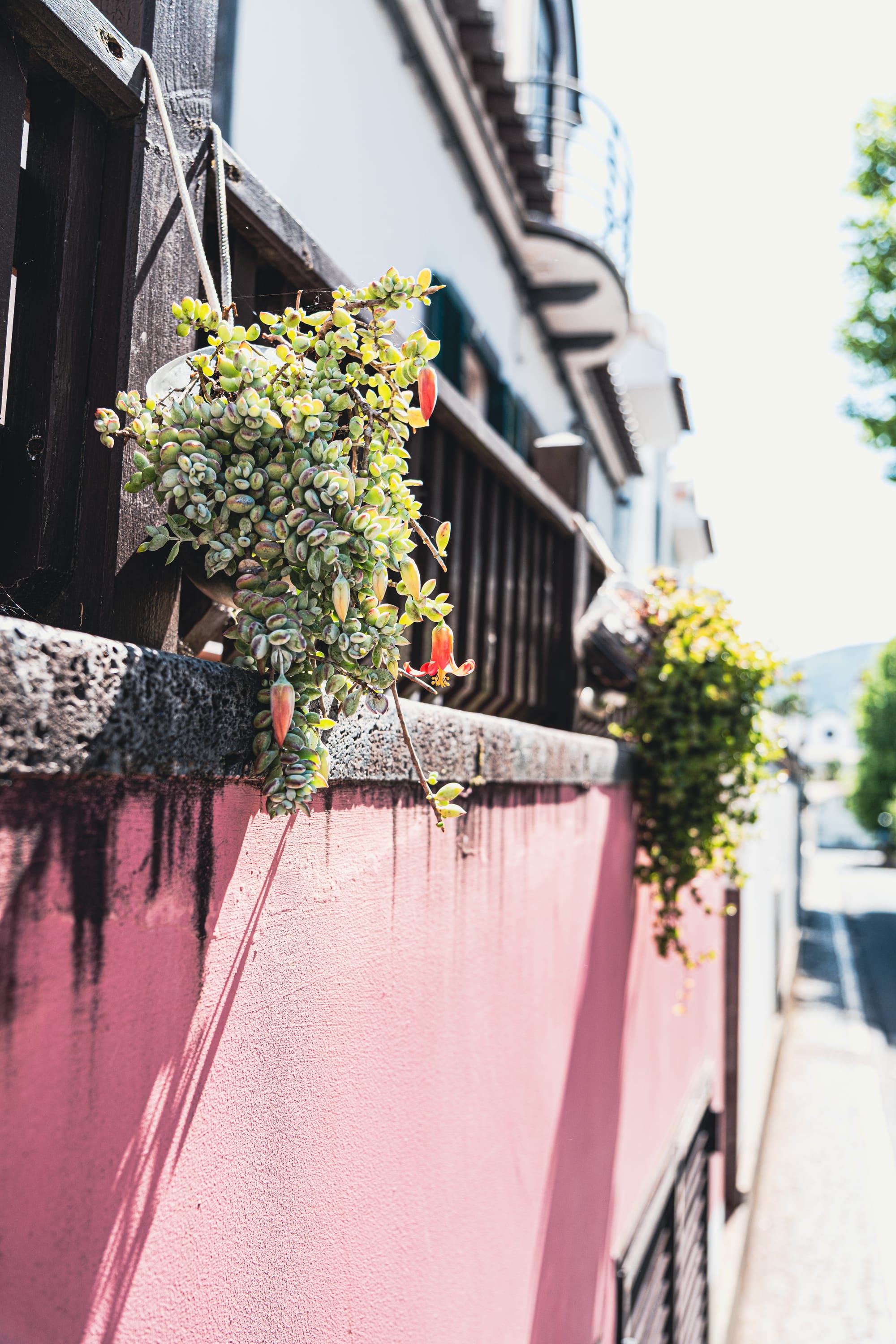
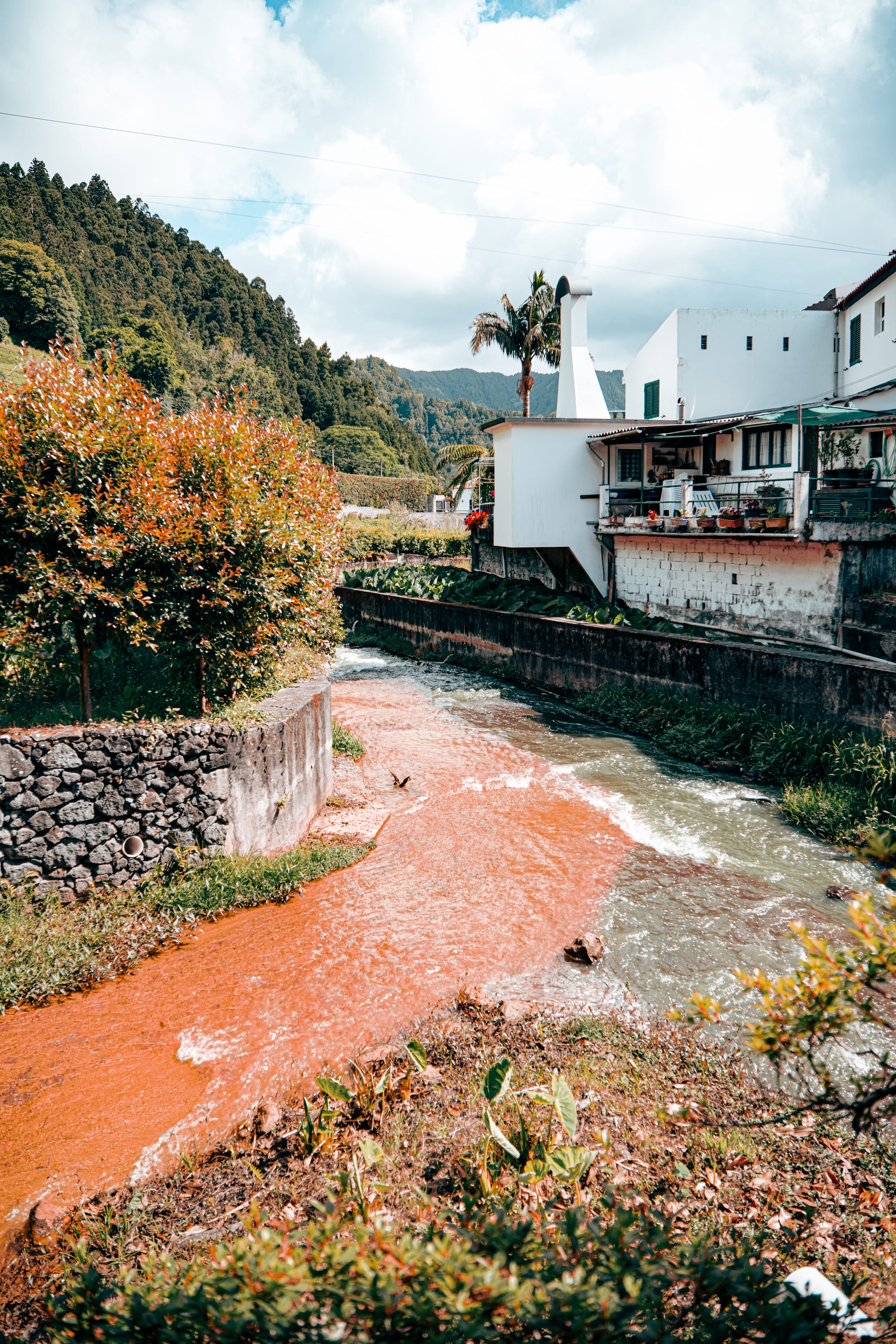
With easy access to Grená Park, Lagoa das Furnas, and forested hiking trails, it’s an ideal base for those who like their days part-walk, part-soak, part-stare-at-steam.
Sete Cidades
Crater town among the lakes.
Sete Cidades sits inside a dormant volcanic crater, surrounded by twin lakes—one green, one blue—and ringed by some of the island’s best hikes. It’s a quiet village with a magnetic presence, partly due to its setting and partly the mythos that surrounds it.
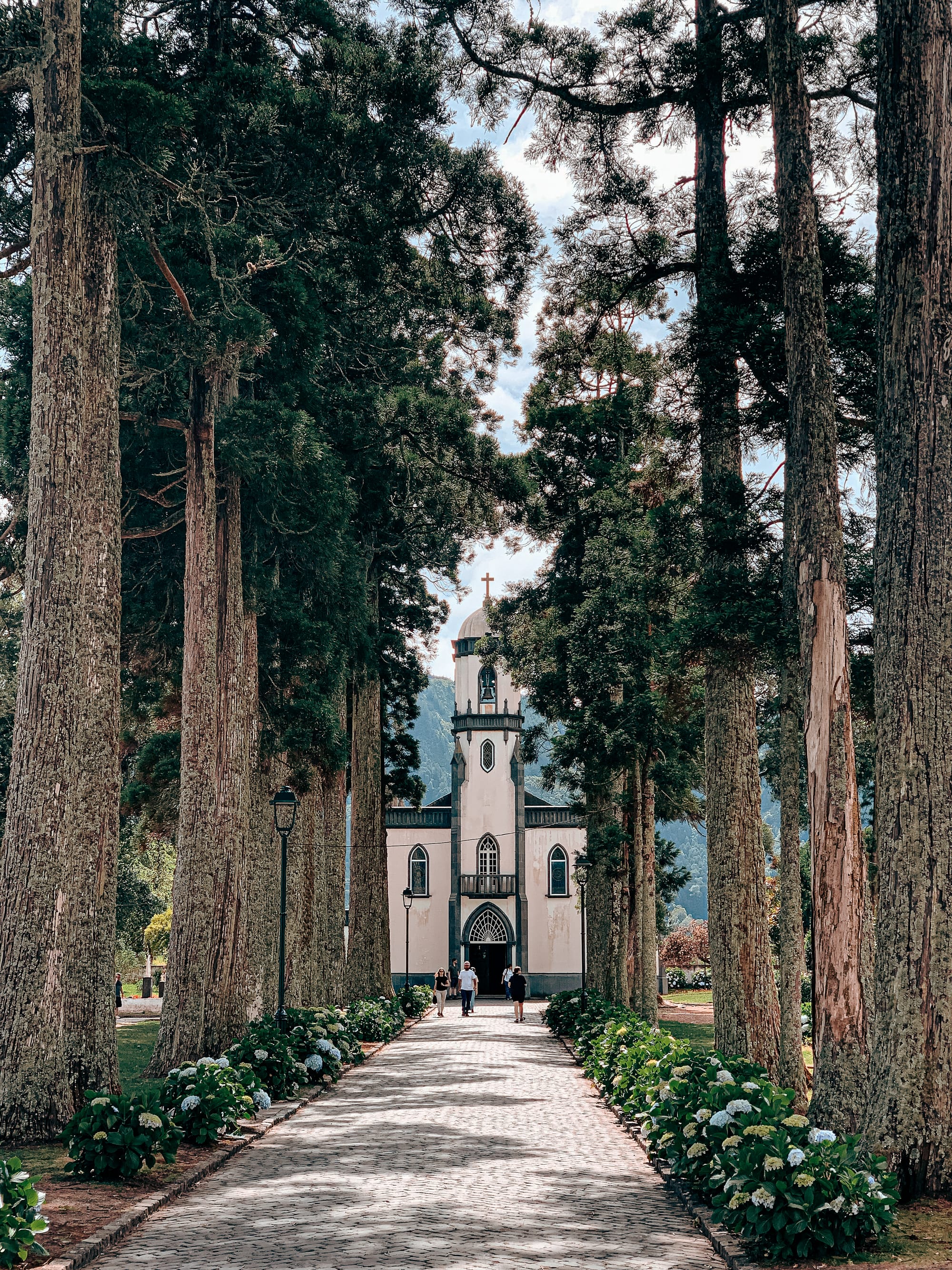
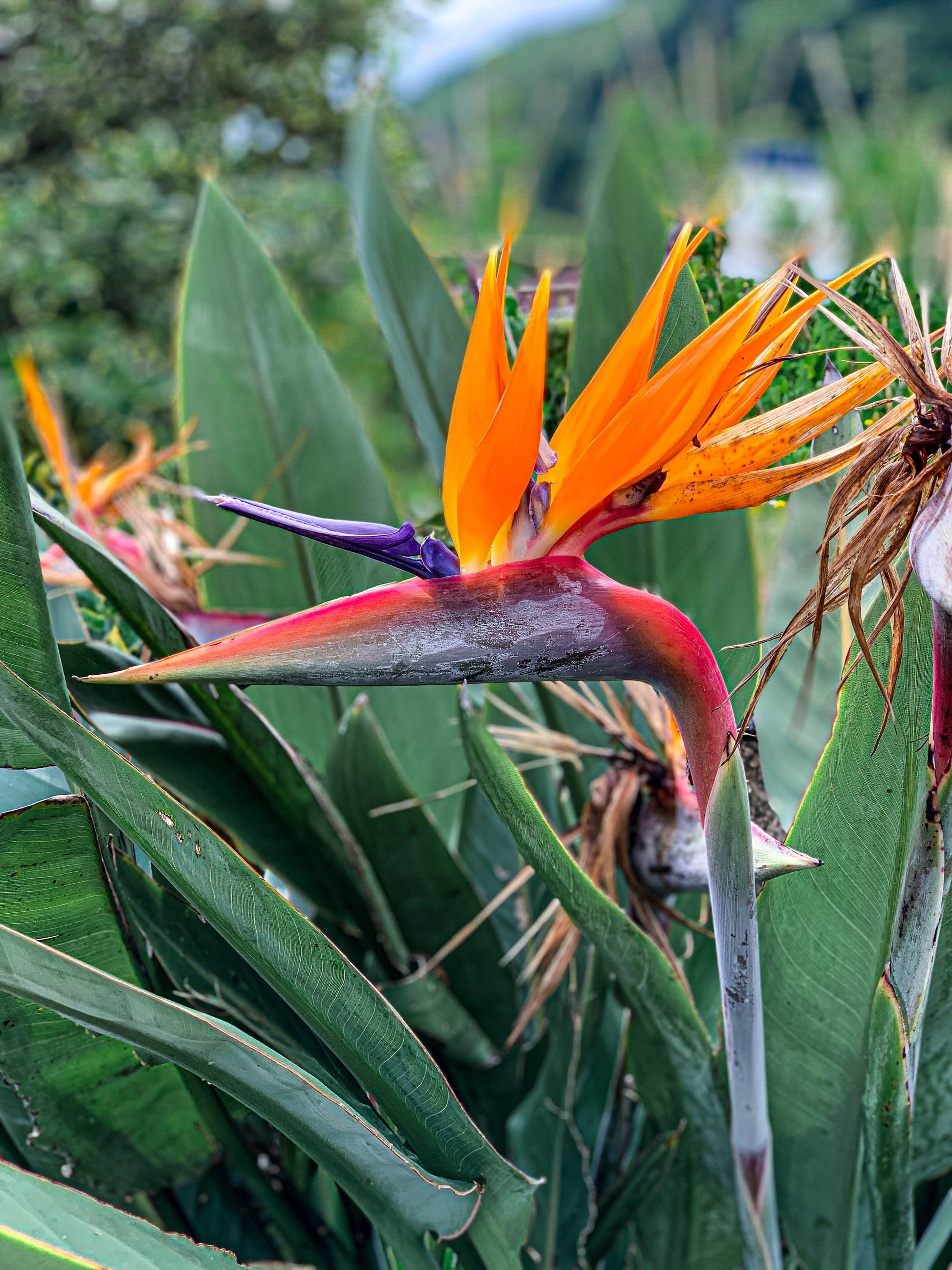
Rent a paddleboard, hike the rim trail from Vista do Rei, or simply bring a sandwich to the shore and sit. The fog rolls in and out like breath. While the town itself is small, it offers a few restaurants, a local grocer, and a slow pace that invites lingering.
Vila Franca do Campo
Ocean-facing former capital.
Once the capital of São Miguel, Vila Franca do Campo is now best known for its proximity to Ilhéu de Vila Franca—a volcanic islet turned swimming lagoon. But the town itself is more than a launchpad. It’s home to the tiered Santuário de Nossa Senhora da Paz, a striking church that overlooks the coastline, and a quiet charm that’s great for a medium-term stay.
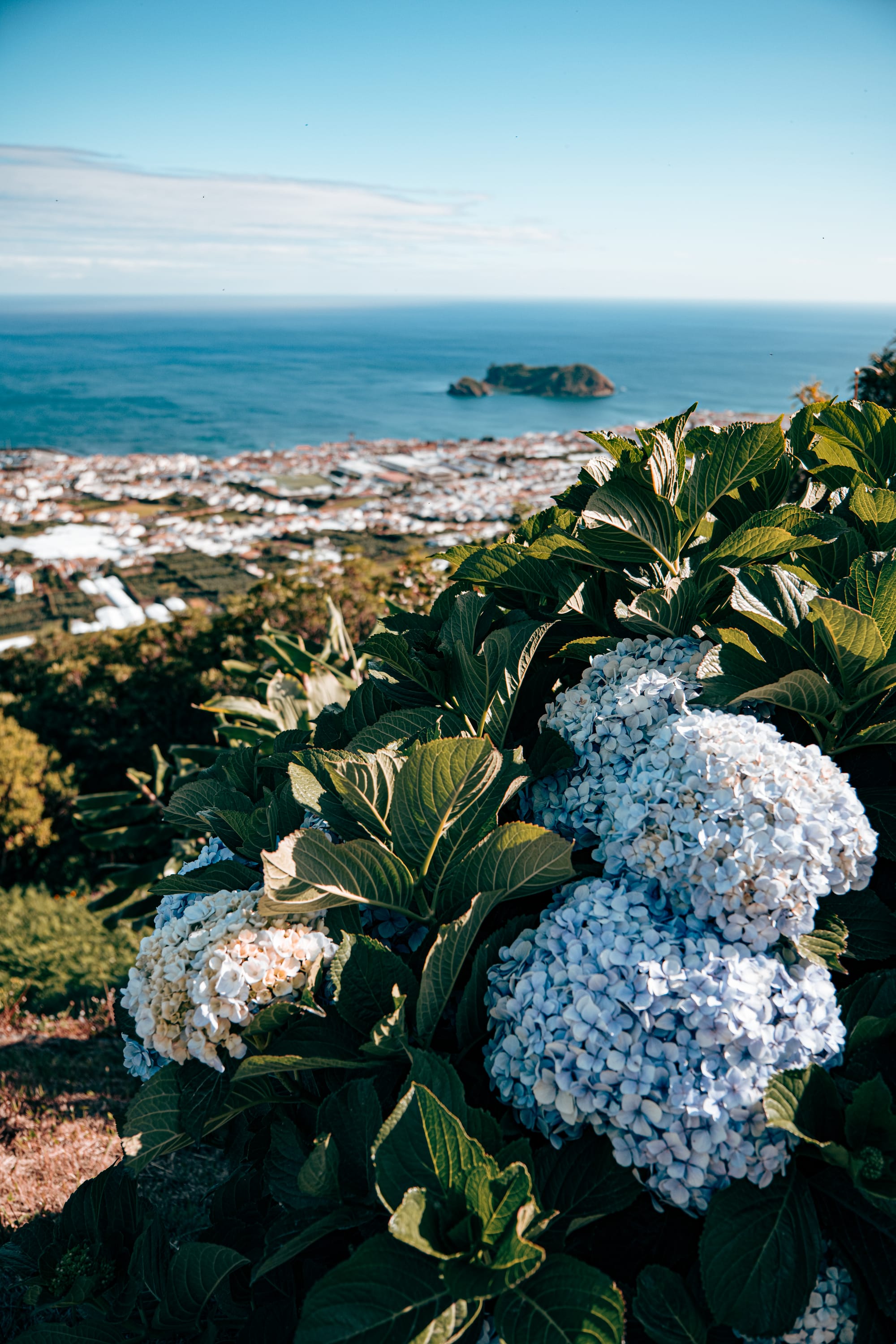
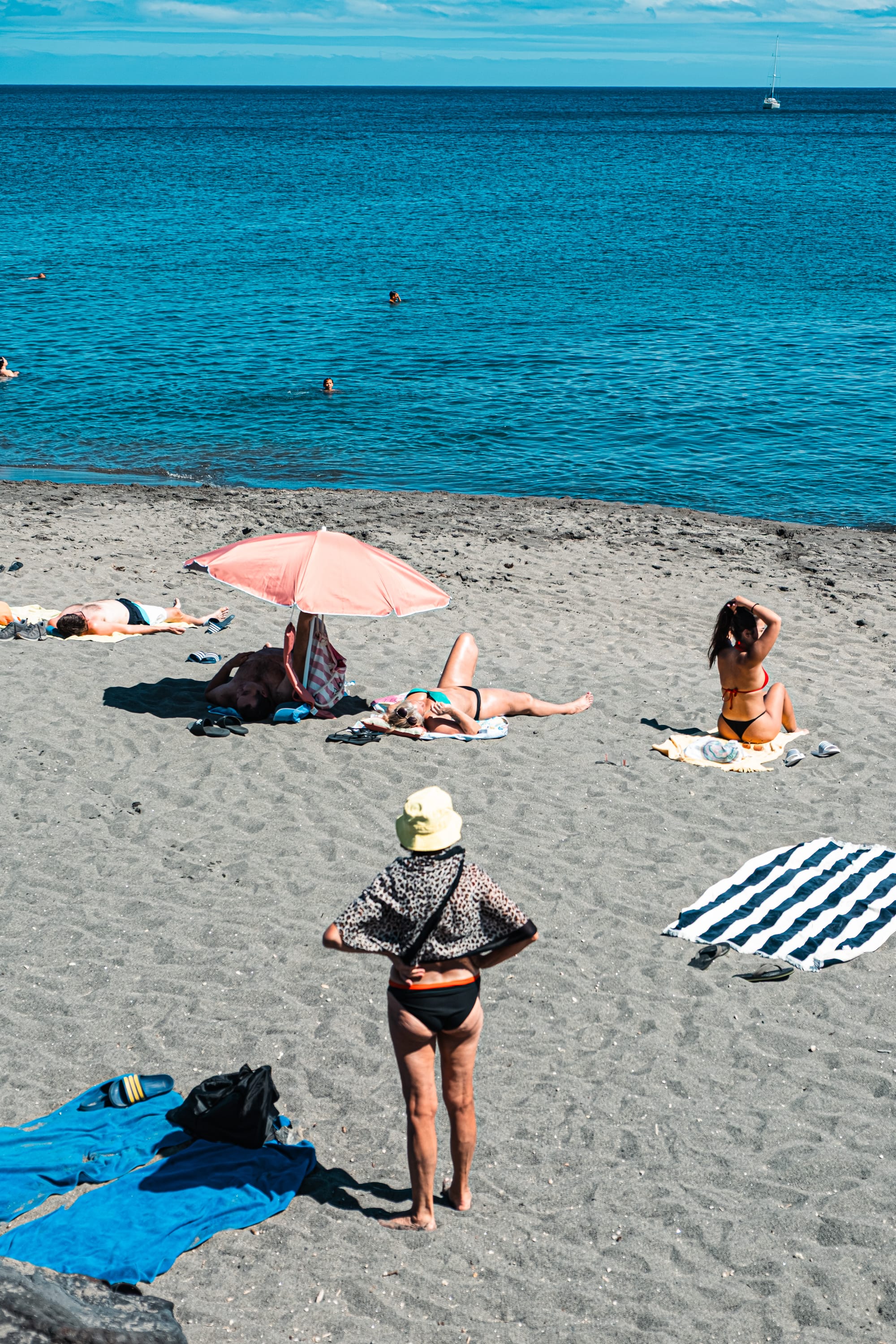
Fruit stalls, sea-facing promenades, and a casual beach vibe define the rhythm here. You’re well-positioned to explore the south coast, visit Lagoa do Fogo, or join a kayaking tour around the islet.
Povoação
Where settlement began.
Framed by volcanic cliffs and a horseshoe bay, Povoação is considered the site of the island’s first settlement. There’s a frontier energy to it—far from the busier towns, quieter, and flanked by dense forest.
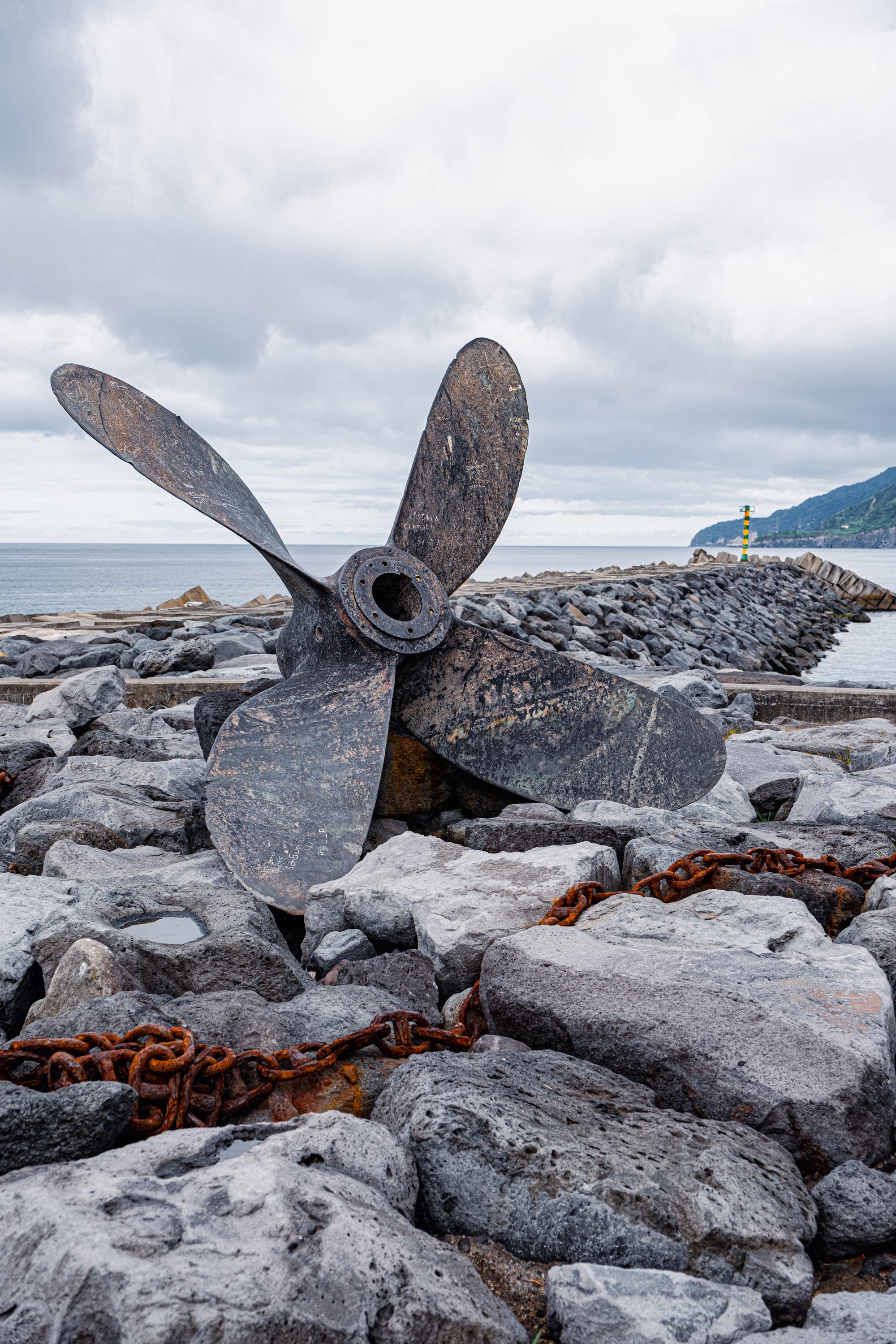
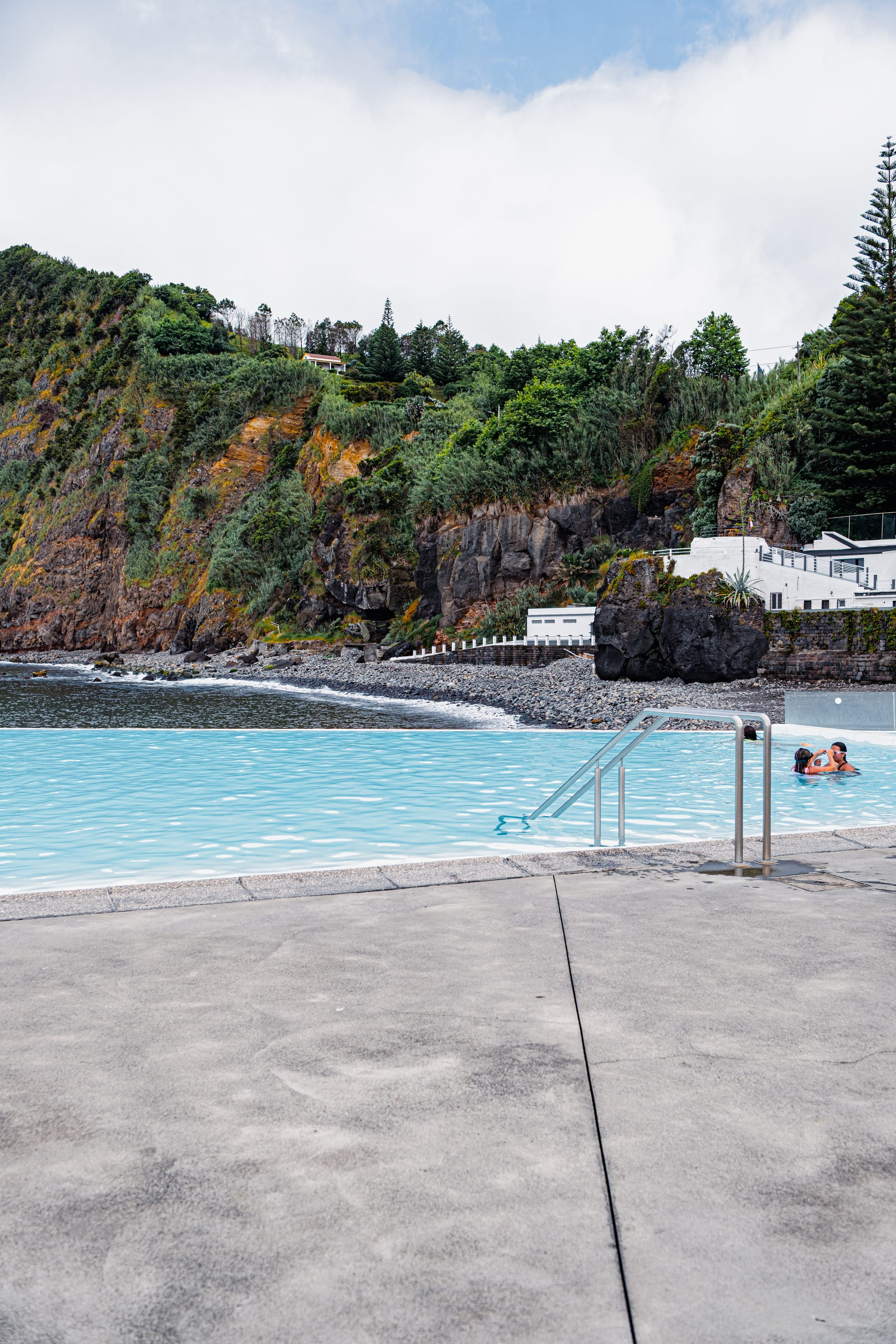
Strolling through its tidy plaza, you’ll find murals depicting settler history, a handful of cafes, and a local pace that invites deep rest. It’s also a useful base for reaching Faial da Terra and the Sanguinho trail. Povoação doesn’t try to entertain—it just is—and that’s exactly its charm.
Ponta Delgada
Gateway city with colorful edges.
The island’s capital and main transport hub, Ponta Delgada is more than an arrival point. Its historical core is lined with basalt arches, cobblestone squares, and churches.
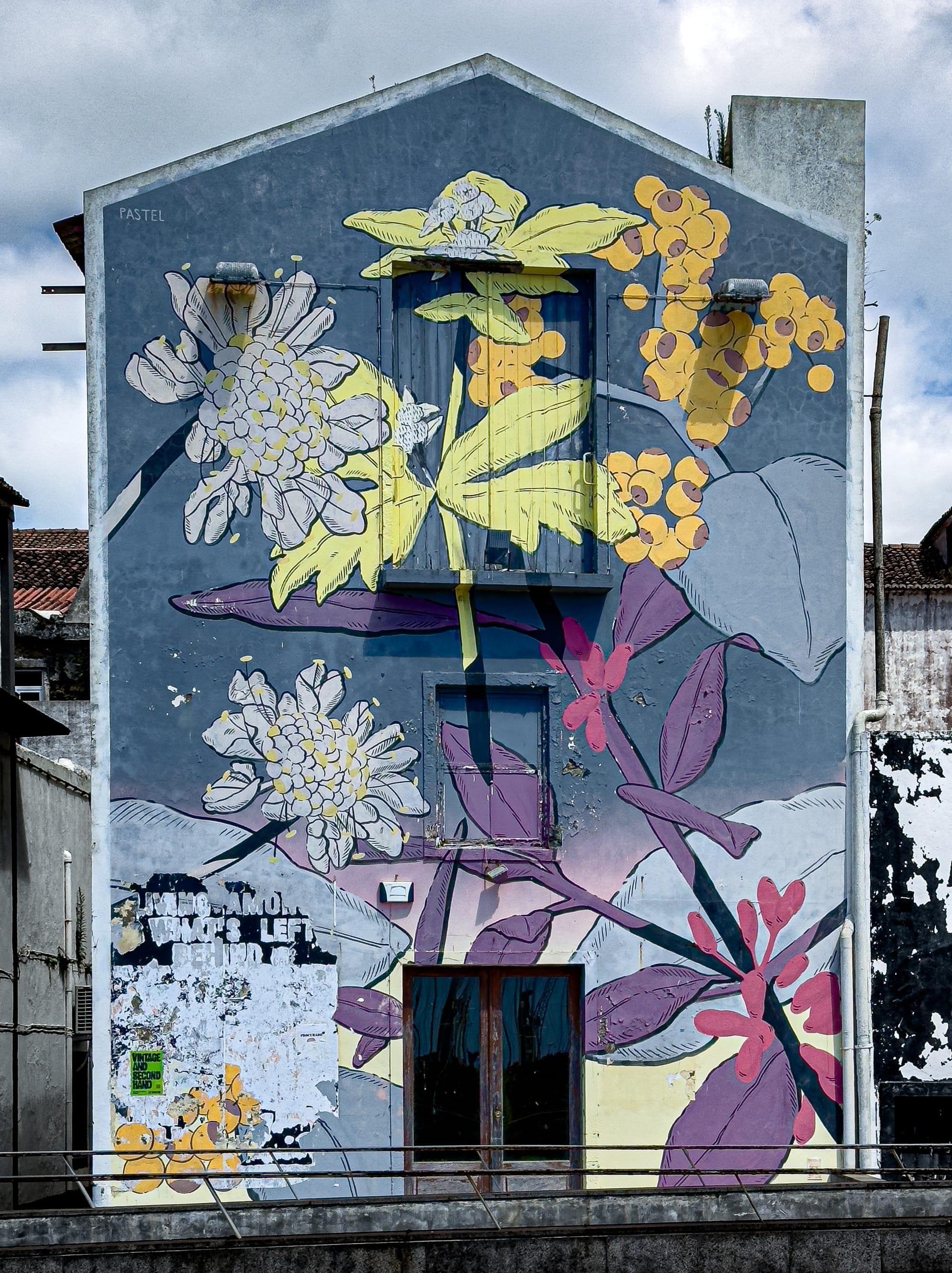
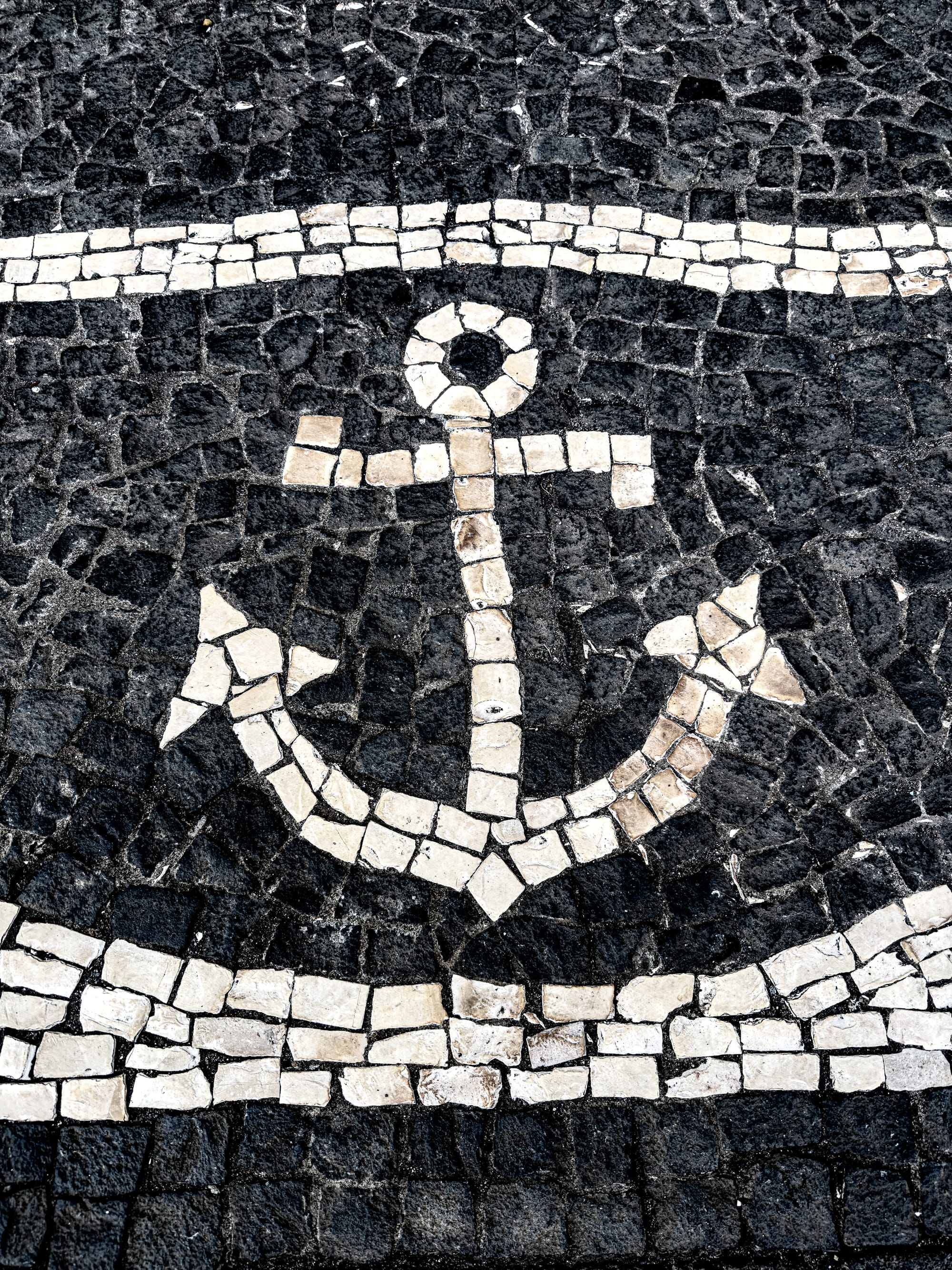
While not the focus of most digital nomads, it’s a good place for essentials—banks, groceries, medical care—and a few worthwhile stops like Jardim António Borges, the Fort of São Brás, and local eateries like Louvre Michaelense. It’s also home to one of the best co-ops of Azorean artists and designers.
Ribeira Quente
Geothermal coast and village calm.
Tucked between steep cliffs and the sea, Ribeira Quente is a tiny fishing village with one of the most memorable coastlines on the island. It’s known for Praia do Fogo—a black sand beach with geothermal activity heating the ocean near shore.
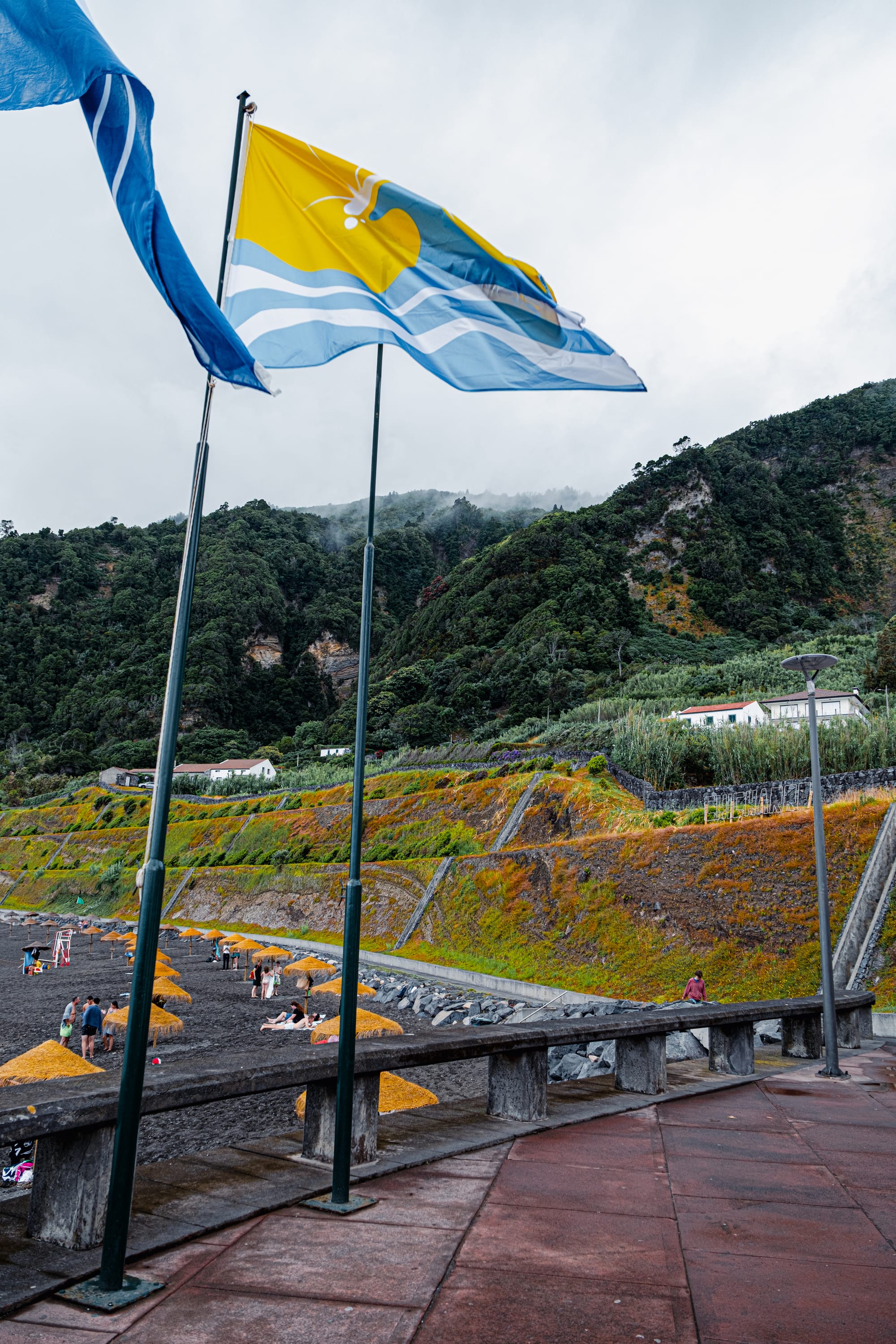
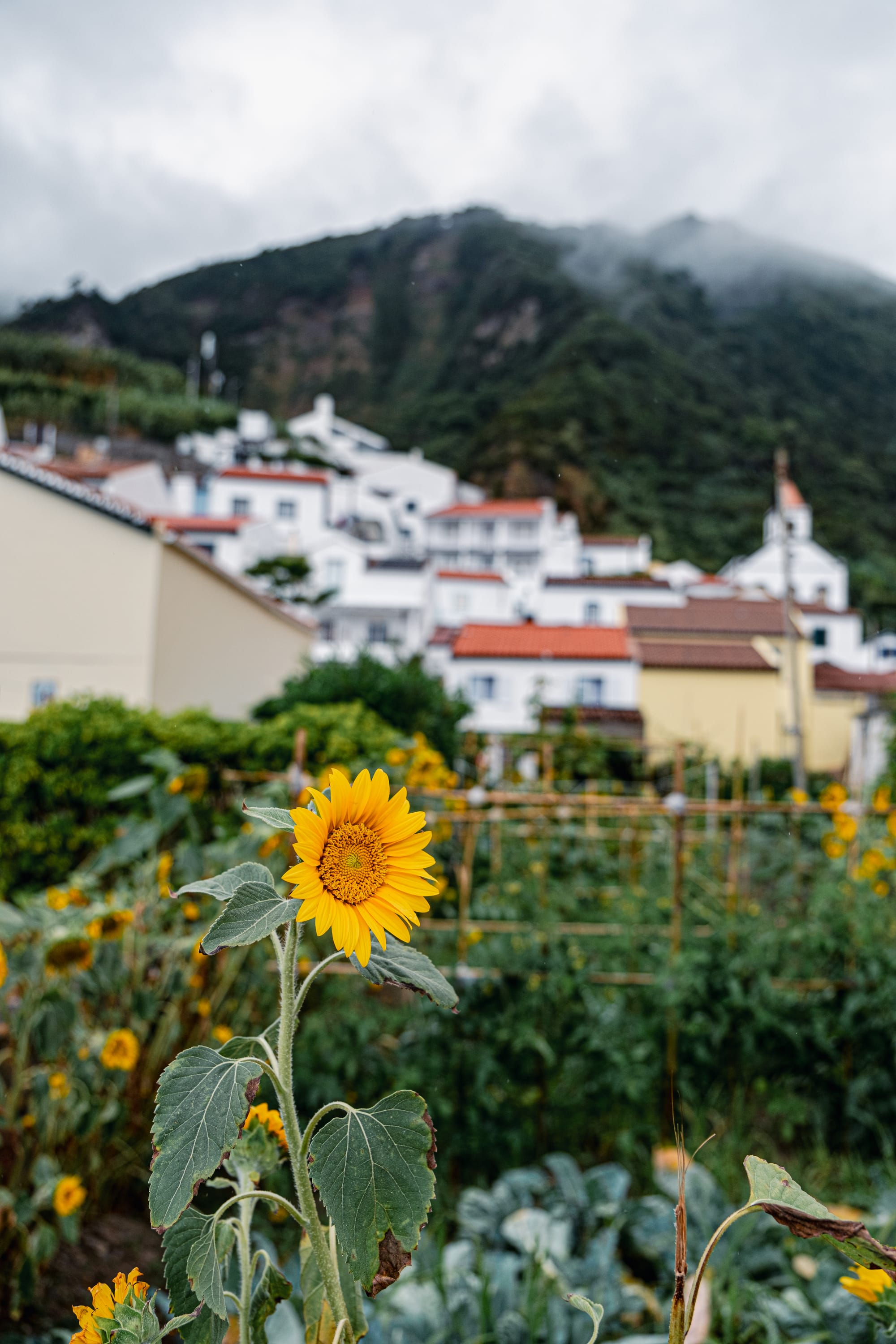
The town is home to a local market and excellent fruit stalls. With its blend of volcanic warmth and local charm, it’s worth a day trip or even a base for slow travelers.
Essential tools for São Miguel
For nomads living and working from São Miguel, these tools made our stay smoother.
AllTrails+ (hiking trail discovery app)
The go-to app for discovering and navigating hikes on São Miguel (and elsewhere in the world), including lesser-known trails. The paid version lets you download offline maps, which is essential since signal often drops in remote or mountainous areas. You can also track your route in real time and bookmark hikes to plan your week around the weather.
Saily Global eSIM
Instant global mobile data without needing a local SIM. Saily global eSIM gives you mobile data in Portugal and dozens of other countries—no need to buy a separate local SIM when you arrive. Great for digital nomads who hop between places and want one seamless solution that works everywhere.
SafetyWing (global health & travel insurance)
An affordable, digital-nomad-friendly insurance plan that covers both travel hiccups and medical needs. We like that it runs month-to-month and can be started even if you’re already abroad. Helpful for peace of mind, especially on remote islands where care may require transfers or added costs.
NordVPN
A lightweight, fast VPN that lets you secure your connection on public wifi—especially important when working from colivings, cafes, or airports. It also lets you access content as if you were back home, which is helpful for banking, streaming, or logging into sensitive accounts.
Wise (multi-currency payments)
Our favorite banking solution for multi-currency payments and avoiding bad exchange rates. Wise lets you pay in Euro locally and manage funds across dozens of currencies. We used it to split group dinners, pay for tours, and withdraw cash without the large fees traditional banks charge.
Should you choose São Miguel?
São Miguel doesn’t promise frictionless digital nomadism. You won’t find dozens of cafes with fiber internet. There aren’t coworking hubs on every corner or nightly meetups. But if you’re looking to slow down, to let your workdays be framed by wind and steam and birdsong, there are few places more restorative.
The pros?
- Nature at your doorstep: crater lakes, thermal pools, jungle trails
- A peaceful rhythm that invites deep focus and calm
- Affordable compared to much of Europe
- Manageable time zone for both European and US / Americas work
- A growing ecosystem of colivings, especially for those seeking connection in small doses
- A landscape that rewires your attention
The trade-offs?
- A small, diffuse nomad scene—not much in the way of organized community
- You’ll likely need a car to explore freely
- The weather is changeable, often damp
- Some places feel sleepy, especially in winter
- If you rely on buzzy energy to motivate your work, you might need to bring your own spark
But for many of us, that’s precisely the draw.
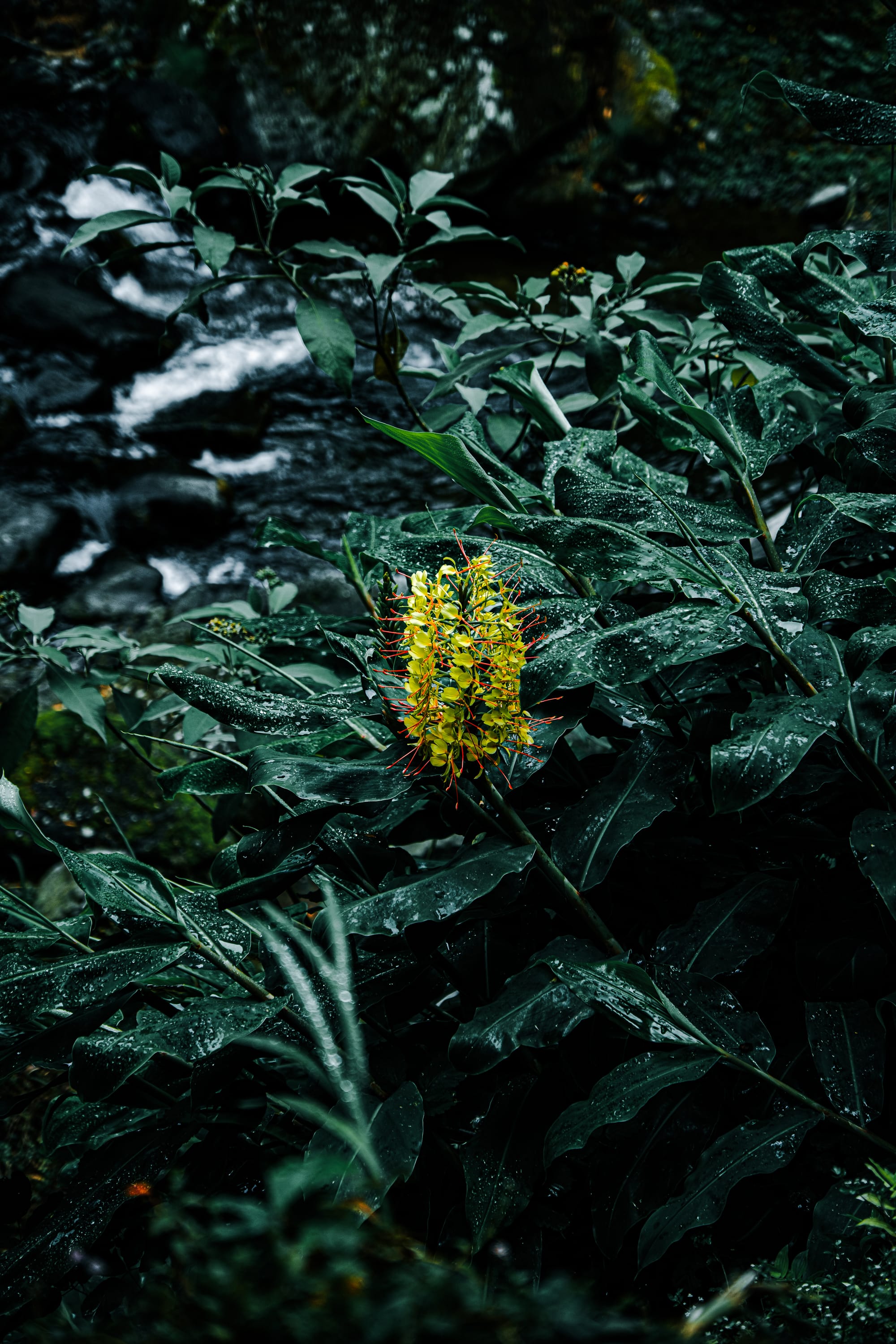
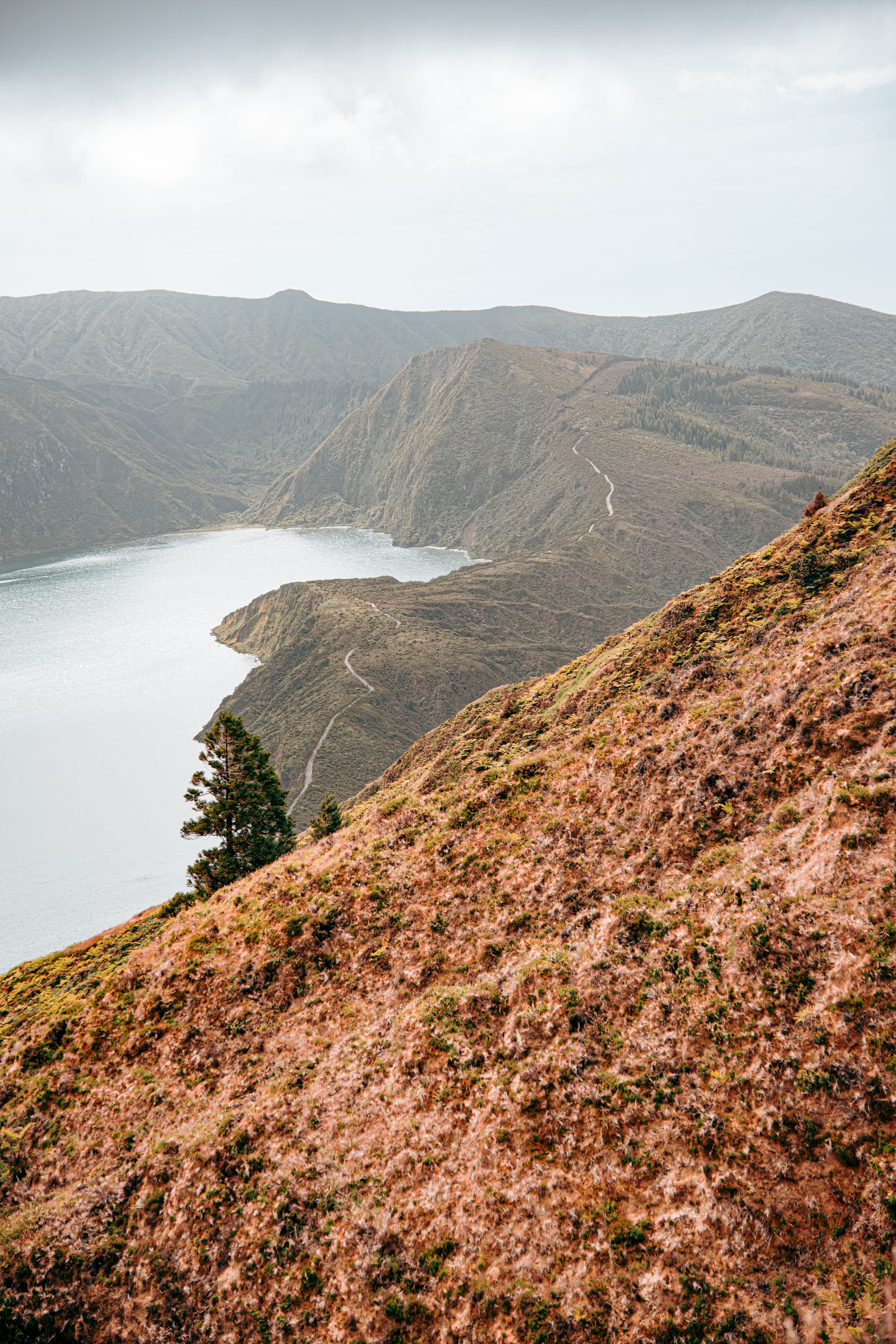
São Miguel is for the unhurried. For those looking to reorient. For those who work better when the air is clean and the evenings are spent soaking in warm mineral water beneath a canopy of green.
Read more
If you’re curious about how to make São Miguel work for you, we’ve written extensively about our experience. Check out our São Miguel guides for more information on what we enjoyed on the island.






